We finally have the substantial review of all 25 competition shoes that entered this year’s World Championships of Shoemaking 2025. Here you will find all of the info about the makers, their shoes, comments on the creation of them, a load of pictures of the shoes, and in some cases, also the manufacturing process.
A close look at some seriously amazing double monk straps. Today we present the top ten and in a few days, we will highlight the rest.
Part of the London Super Trunk Show at the beginning of May was the sixth edition of the World Championships of Shoemaking (see here for more articles on this contest and find the summaries of previous years’ shoes), organized by Shoegazing, The Shoe Snob, and Kirby Allison. The latter (Kirby Allison) is also a funding sponsor of the contest, together with the book project Master Shoemakers, and private person Parker Schenecker, brother of the shoe aficionado Edmund Schenecker, who sadly passed away a few years ago.
These contribute to the substantial prize money of £3,000 to the winner, £2,000 to the second placed, and £1,000 to the third placed. We, the organizers, do not make any money at all on this contest; the money is paid directly from the sponsors to the shoemakers. They also receive handmade awls by Phil Norsworthy, plus, of course, medals.
The top three double monk straps will also go on tour around the world now (together with a winning shoe in the patina championship), to be showcased for thousands of shoe lovers in various places. As we always try to do it, it’s a mix of some new locations and stores, and some that have been part of the tour in previous years.
The shoes will also be showcased at the New York Super Trunk Show on October 4th and at the first Singapore Super Trunk Show on January 31st, 2026. The preliminary tour schedule is as follows:
| Week | Date | Store | City, country |
| w31-32 | Jul 28-Aug 10 | The Hand | Amsterdam, Netherlands |
| w34-35 | Aug 18-31 | Old House Provisions | Washington D.C., USA |
| w37-38 | Sep 8-21 | Kirby Allison | Dallas, USA |
| w40 | Oct 4 | New York Super Trunk Show | New York, USA |
| w41-42 | Oct 6-19 | Leffot | New York, USA |
| w43-w46 | Oct 25-Nov 16 | Isetan Men’s Tokyo | Tokyo, Japan |
| w48-w49 | Nov 24-Dec 7 | Bridlen Gallery | Chennai, India |
| w51-52 | Dec 16-29 | The Bourgee | New Delhi, India |
| w2-3 | Jan 6-19 | Unipair | Seoul, South Korea |
| w5 | Jan 31. | Singapore Super Trunk Show | Singapore |
| w6-7 | Feb 2-15 | CNES International | Singapore |
| w9-10 | Feb 23-Mar 8 | Skomaker Dagestad | Oslo, Norway |
Worth noting is that we’ve already announced what the style will be for next year: A black chelsea boot, with relatively free possibilities for design. And we will also include a new criterion that will be judged: ‘Originality,’ which will give 5 points max per jury member. This is to award those who think of new ideas and continue to push creativity and craft to new heights.
We’ve seen that what’s been done by top shoes in previous years – where the horseshoe heel is probably the strongest example – tends to be popular for coming years, and cumulatively, a lot of features continue to be used more and more. We think it’s important to progress beyond this. We will also be more strict on the width limitations set (max two width sizes up or down from an acceptable standard width), and if this isn’t clearly followed, there will be deductions of points.
At the London Super Trunk Show, all competition shoes were on display for the over 1,300 people who visited the event during the day, and at the award ceremony in the evening, the top ten were presented. The shoes and the competition always gain a big interest and admiration, and also afterward, the attention has been large. Not least with a big feature on the BBC News morning show World Business Report, which was viewed by millions of people in the UK and around the world (more on that in this article).
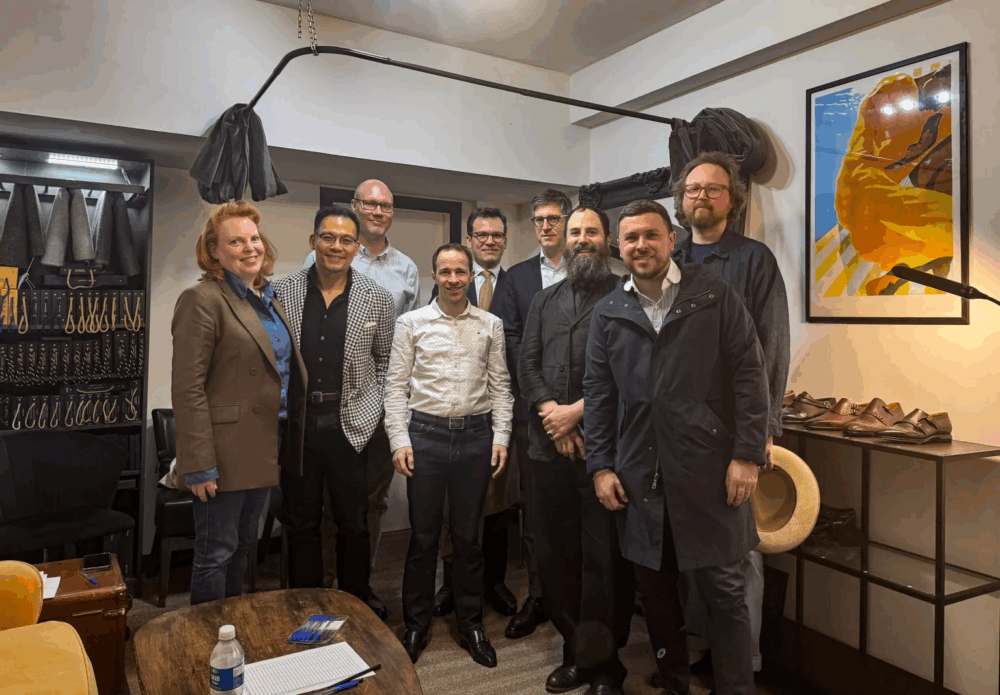
The day before the event, the shoes were reviewed anonymously by the jury, which consisted of (as seen in the photo above, listed from the left):
Jean-Michel Casalonga, bespoke shoemaker
William Laborde, bespoke shoemaker
Emiko Matsuda, bespoke shoemaker
Sebastian Tarek, bespoke shoemaker
Saskia Wittmer, bespoke shoemaker
Athanase Sephocle, bespoke shoemaker at Berluti
Daniel Wegan, bespoke shoemaker
(Kirby Allison, sponsor, founder of the Kirby Allison store)
Gary Tok, sponsor, author of Master Shoemakers
Jesper Ingevaldsson, Shoegazing
Justin FitzPatrick, The Shoe Snob
The criteria that were set out for the competition shoes were as follows:
– Cap toe double monk strap model, with two straps made of the same piece of leather that covers the facing, attached to two buckles, 2-4 pieces of leather, decorative stitching is okay but not necessary, no brogueing or punched holes.
– One left shoe, size UK8 (or corresponding size), maximum 2 width sizes up or down from an acceptable standard width.
– Smooth dark brown calf leather, box calf or aniline dyed, no patina.
– Leather sole.
– Hand-welted, handmade sole stitch. The shoe has to have a 270° welt, so there has to be a waist, and the welt with the sole stitching should go all the way to the back of the heel (although it can of course be hidden blind welt at the waist).
– Dark brown sole and heel edges, natural coloured bottom (decorations with, for example, wheels or nails are ok, but no dye or burnish).
– Finished inside of the shoe, with sock lining, etc.
– No branding.
– Due to practical reasons, we may not fully remove potential shoe trees for the jury review, but the shoe trees won’t be part of the judging.
Errors with respect to the above specifications resulted in deductions of points, 5% deduction of total points for small errors, 10% deduction of total points for larger errors. If the shoe does not follow specifications at all, it could be disqualified, but it has never been the case yet.
Competitors could enter both as a company or as an person. All persons who have been part of the making of the shoe should be stated, and which process(es) each person has performed.
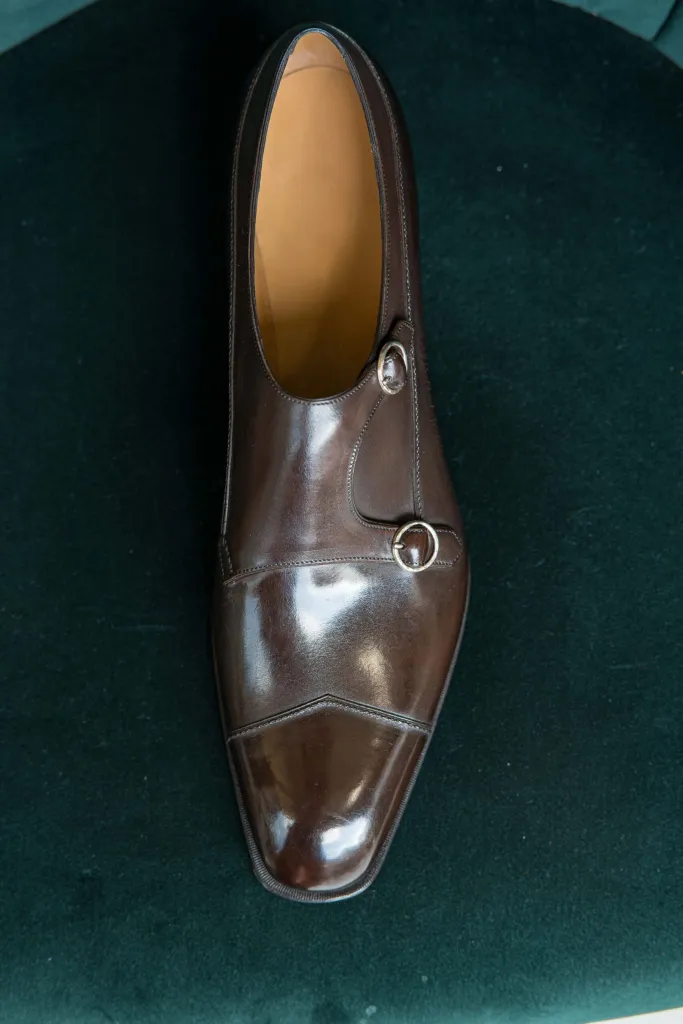
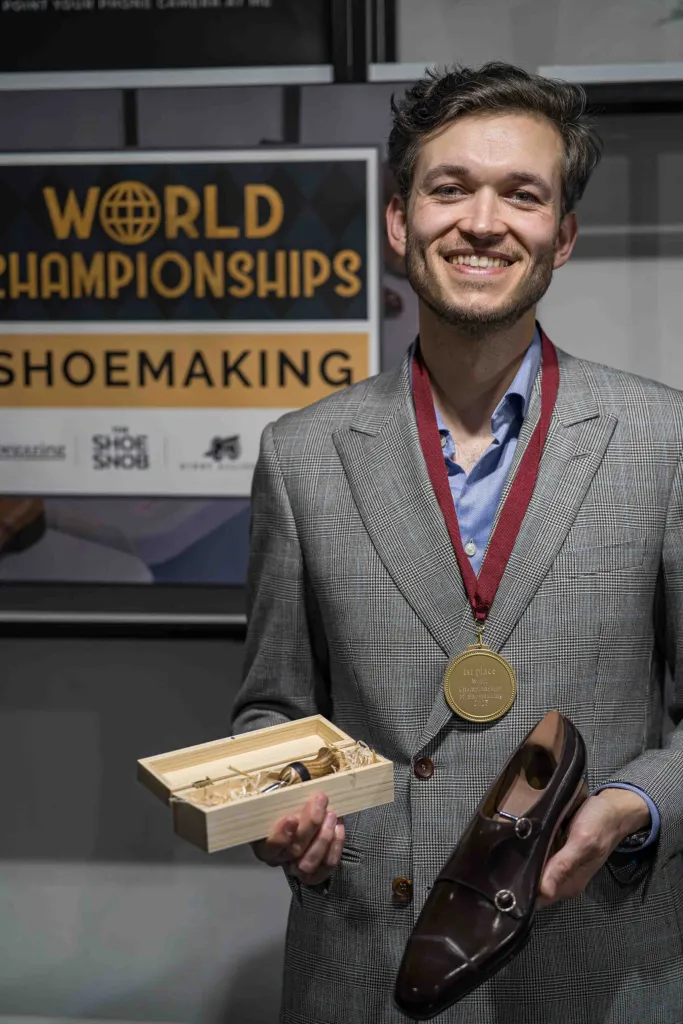
The criteria that were judged:
-The Degree of difficulty (maximum 10 points per jury member)
-The jury looked at how complicated construction methods have been used, how advanced they have been built both in large and in smaller details, etc.
-Execution (maximum 10 points)
-The jury looked at how well the various parts of the shoe construction have been made, how neat and clean the work is, how well executed the level of finishing is, etc.
-Design/aesthetics (maximum 5 points)
-The jury looked at the overall aesthetics of the shoe, proportions, balance, etc.
So, below first the full list of results, then a walkthrough of all competition shoes, from position 1 to 25 (1-10 in this post, 11-25 in the other article linked in several places here). It’s highly recommended to look through things thoroughly, study the photos, etc, to really appreciate things. We see the progress that the overall level is pushed upwards all the time, even if the absolute top level has been similar since the start. It’s definitely harder to finish, say, 10th now than it was in the first years of the contest.
There’s more pictures and text on the top position shoes (even if I tried to shorten this a bit as well, to make it more accessible), with so many entries I have to do things a bit more condensed to make it workable, but all have a brief summary and at least four pictures of the shoes from various angles. In some cases of the top ten shoes, I’ve also included pictures of the making process.
World Championships of Shoemaking 2025
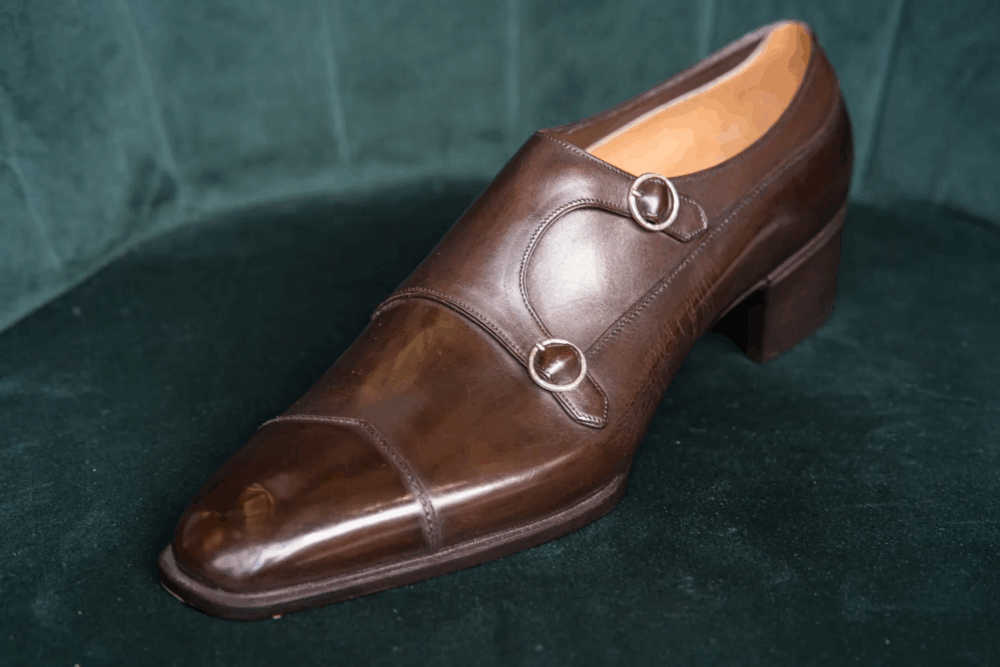
1st Place: Louis Lampertsdörfer
Third time’s the charm, as they say. After finishing sixth with his first entry back in 2019 when he was still just an apprentice, and then he finished in third place during his second attempt in 2023. This year, Louis Lampertsdörfer from München, Germany, took the crown. His winning double monk strap is a proper beauty, elegant and sleek, and of course, crafted to perfection. Designed with a V-shaped cap toe and sweeping balmoral line, with subtle hand-braided decoration seams. Raz Maftei did the incredible closing of the upper, the goldsmith Sebastian Schober made the lovely buckles and toe tap, and the rest was made by Louis.

The heel and back are clearly inspired by previous top shoes, with a very thin-walled horseshoe heel and a ridge back that continues up over the back of the upper, where the heel stiffener is made to keep this shape. Along the outlines of the top heel lift runs rows of very thin 0,5 mm nails. An insert made of the same leather as the upper with the same decorative stitching brings things together nicely. The upper consists of one seamless main piece. One of the most impressive features is the thin sole and super fine, well-made sole stitching at 30 spi (stitches per inch). Really feels like old-school exhibition and prize work.
As has always been the case for the winning shoe, it scored high on all three criteria that were judged: difficulty, execution, and design/aesthetics. Worth mentioning is that it was the tightest podium we’ve ever had, with just 5 points between gold and bronze placed shoes (225 vs 220). Louis Lampertsdörfer estimates that about 200 hours have been spent on the making of this class act of a shoe, which certainly was worth it in the end.
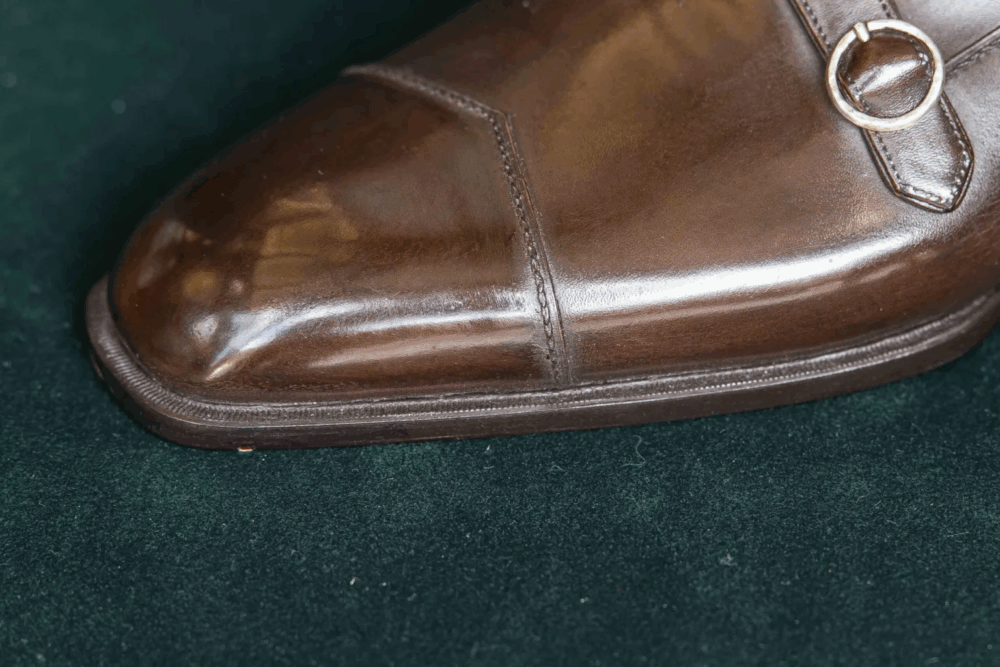
Louis Lampertsdörfer is based in the German city of Munich. As mentioned, he’s not new to the contest, and it’s important that also top-placed makers continue to enter if we want this to stay relevant long term, so we’re happy Louis is one of those. He started his shoemaking journey properly was an apprentice and later worked at the bespoke department of Gaziano & Girling in England.
Nowadays, he runs his own brand Mogada, where he offers fine, top-class bespoke. In recent years, he has also developed a small hand-welted RTW / MTO range, hand-welted in Italy and then finished by him, as well as a small leather accessory collection. You can book appointments in Munich, of course, but he also regularly does trunk shows in other locations in Europe, like Amsterdam, Paris, and Brussels. The shoemakers who’ve won the world champs tend to see an increase in orders so if you’re interested can be good to catch him soon before delivery times potentially go up.


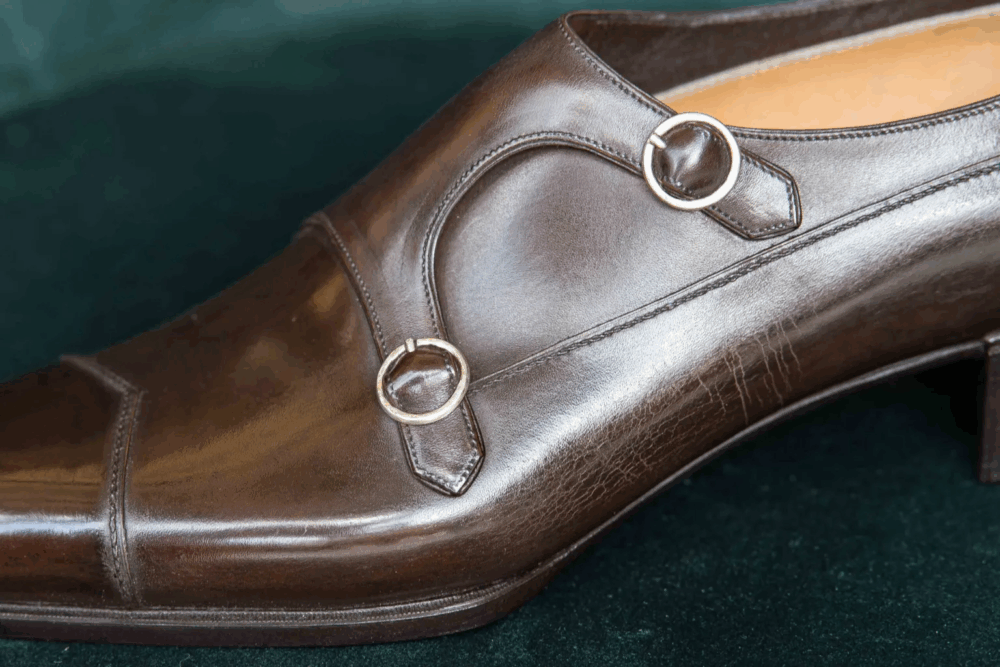

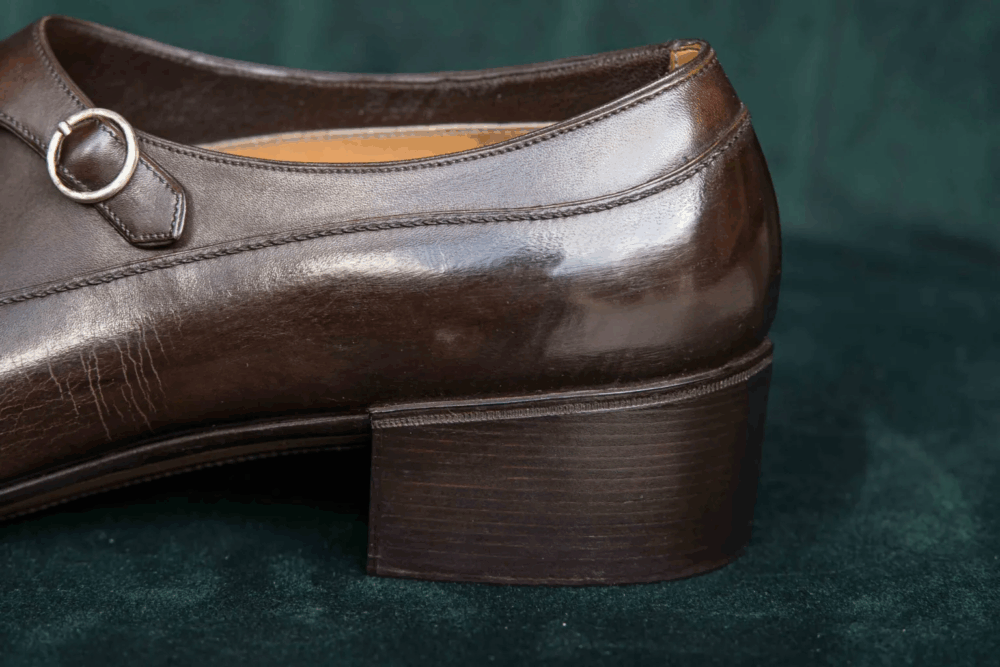

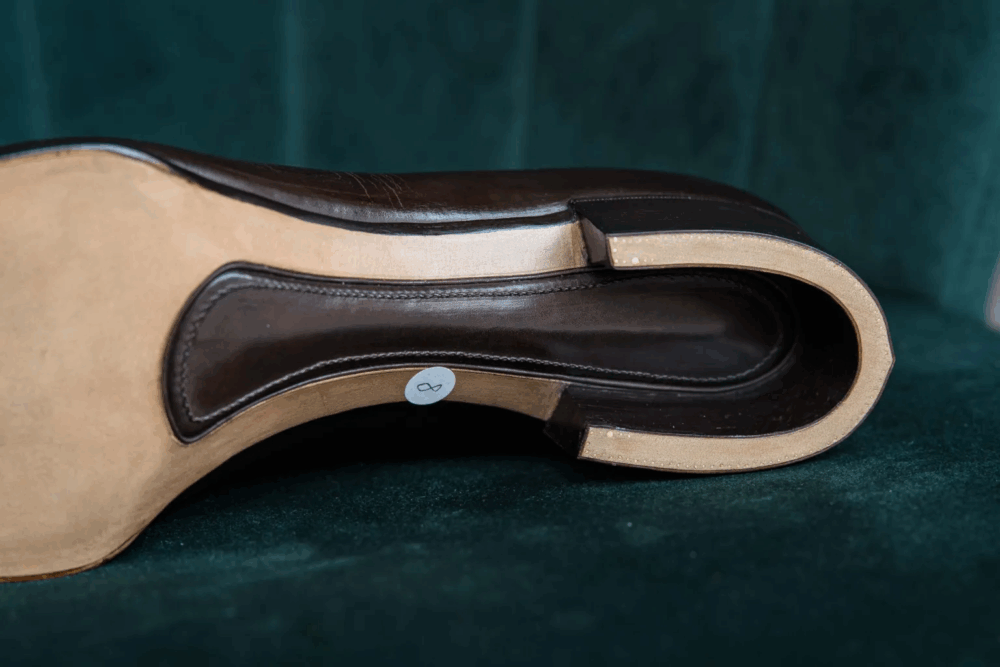
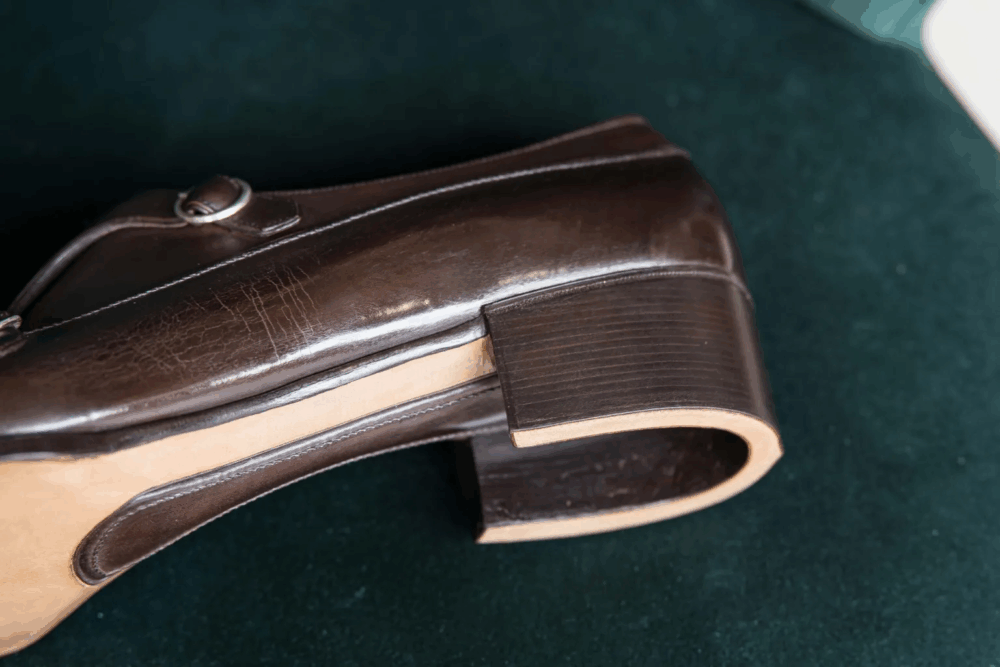

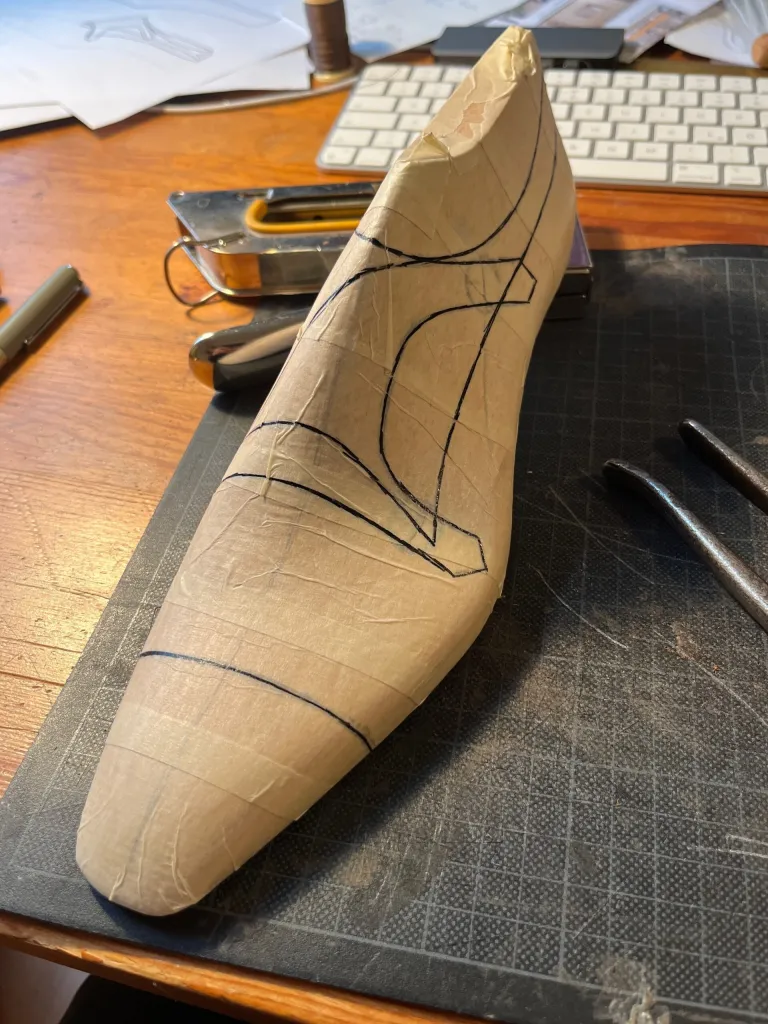
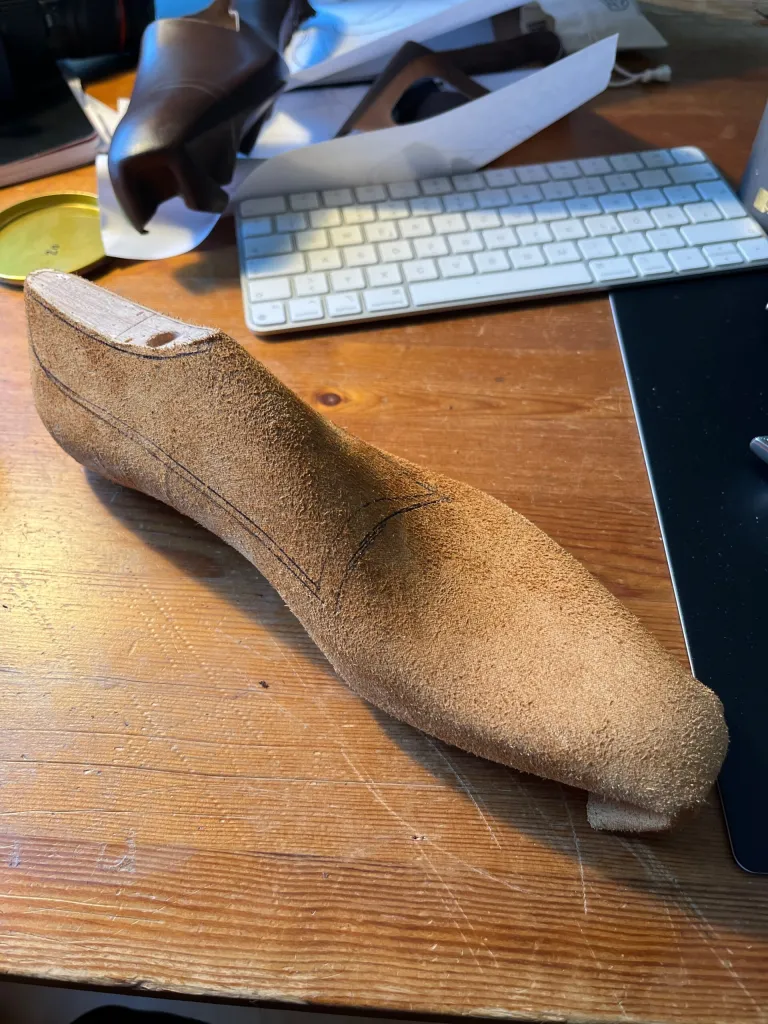
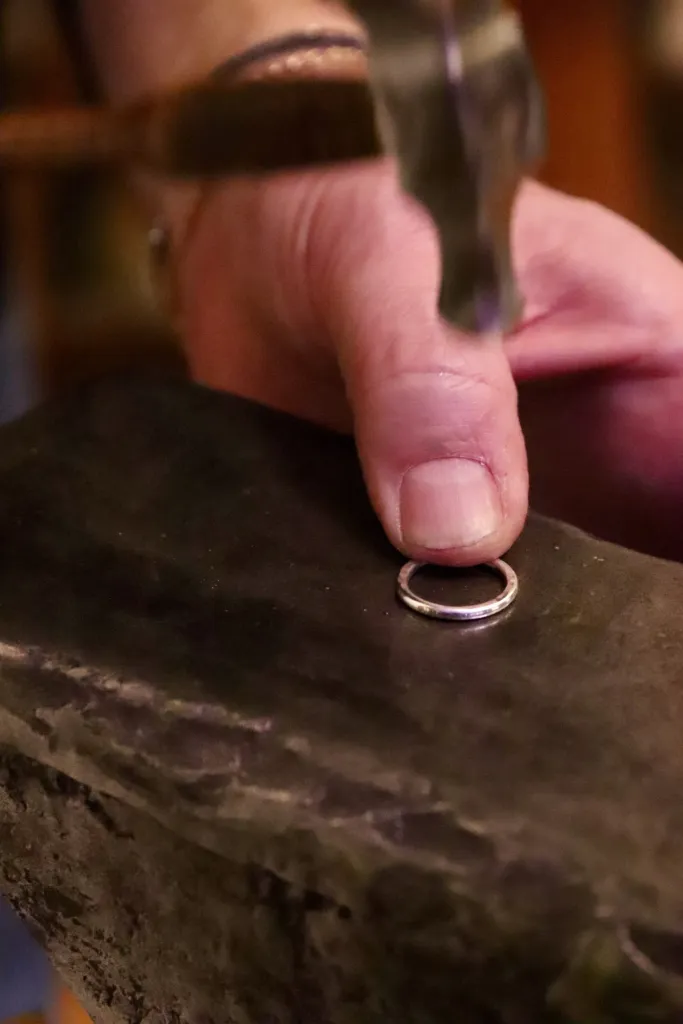
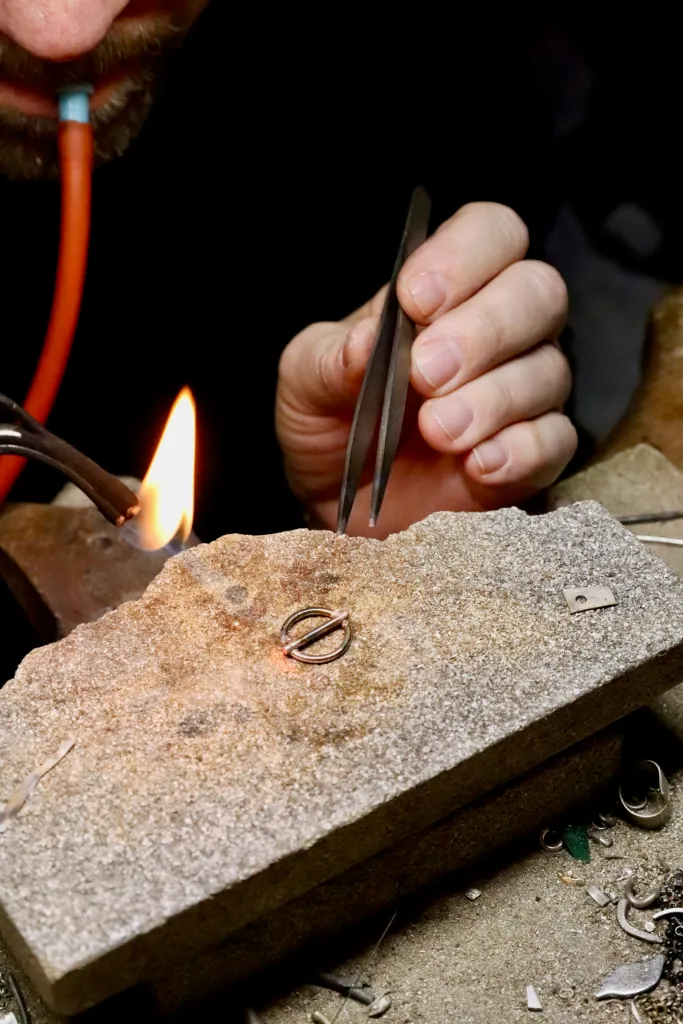

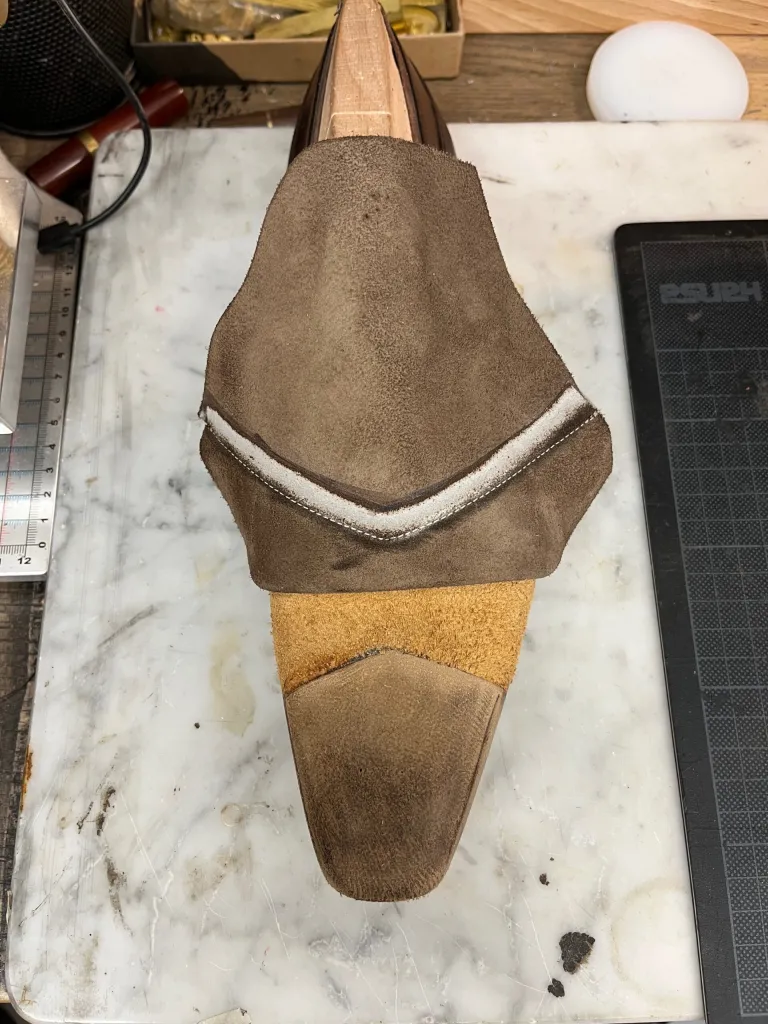
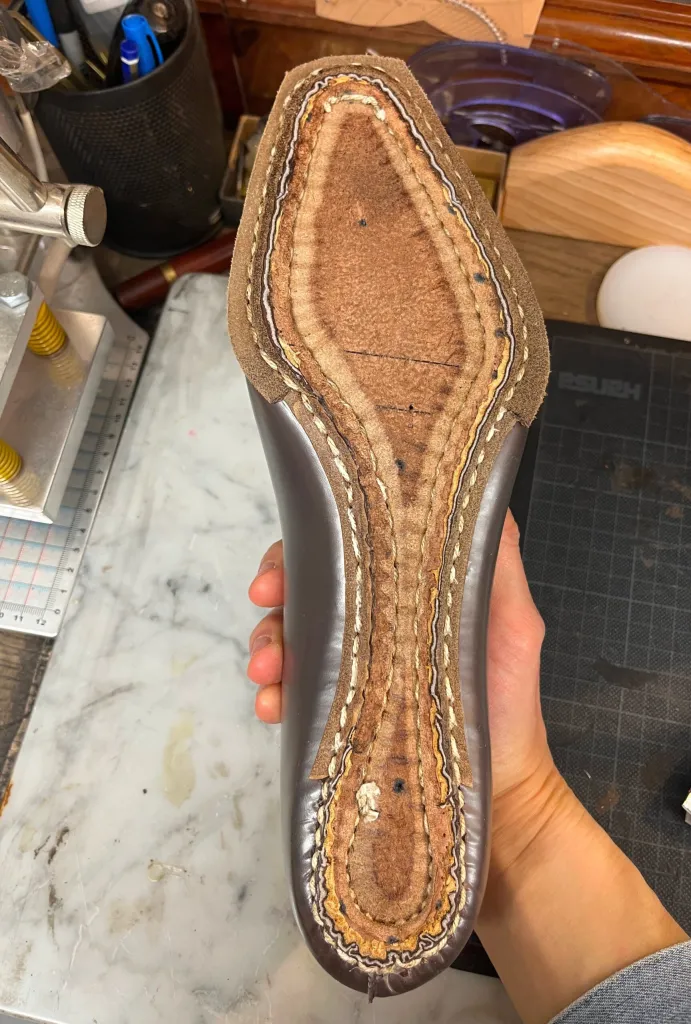

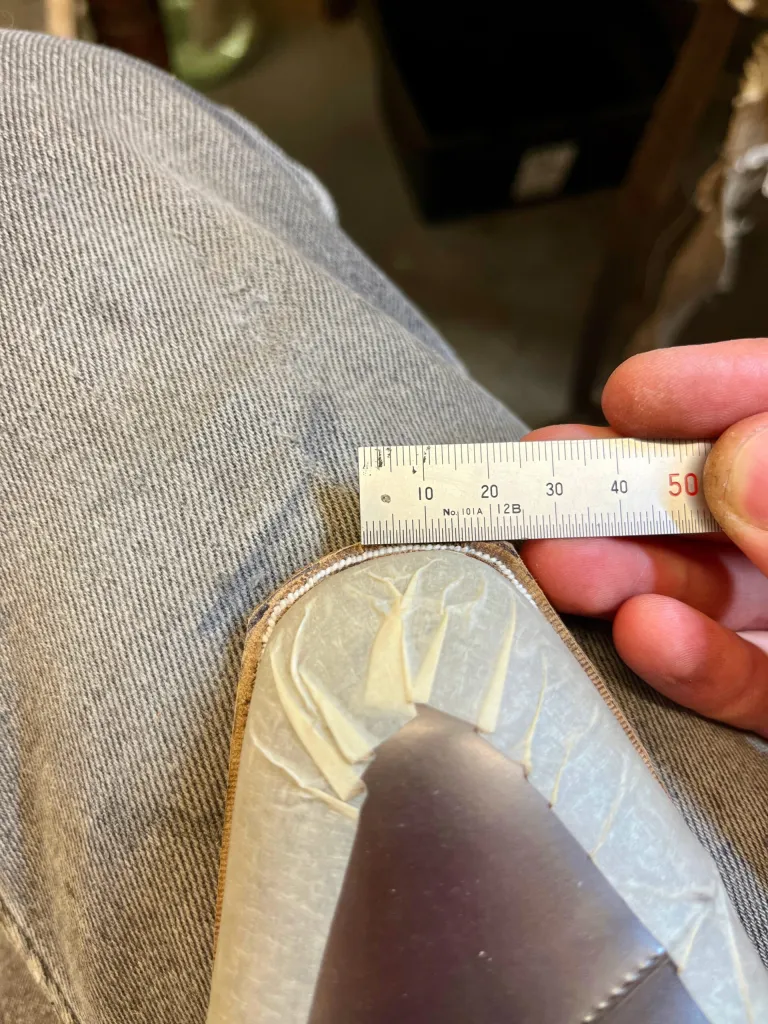
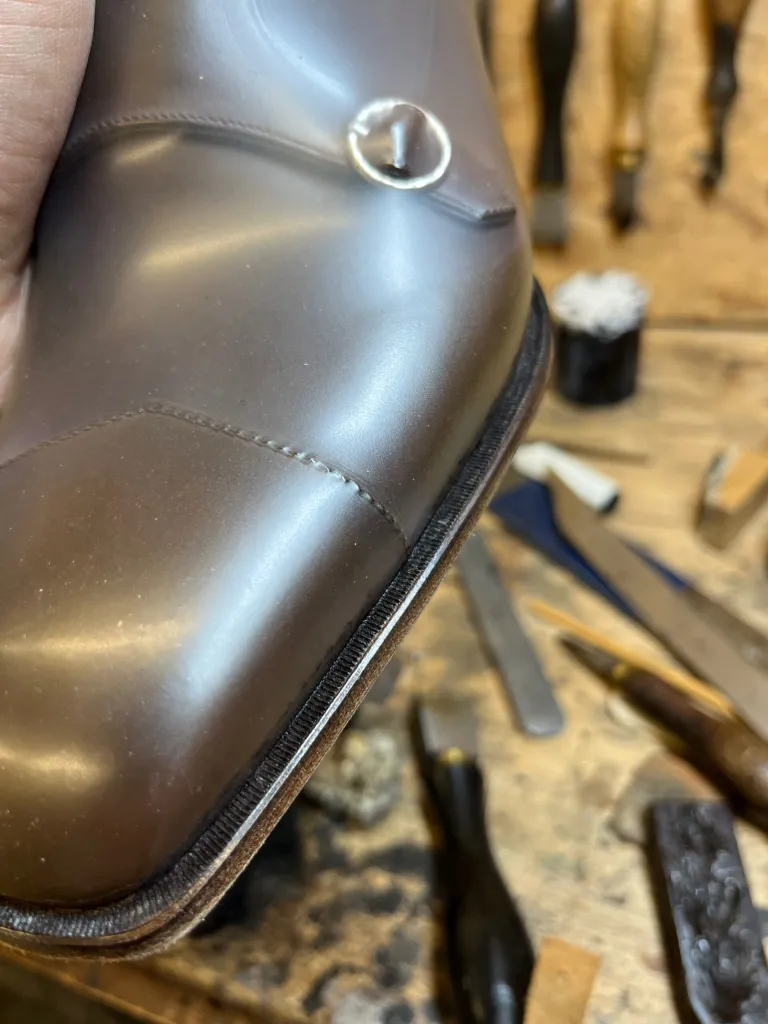
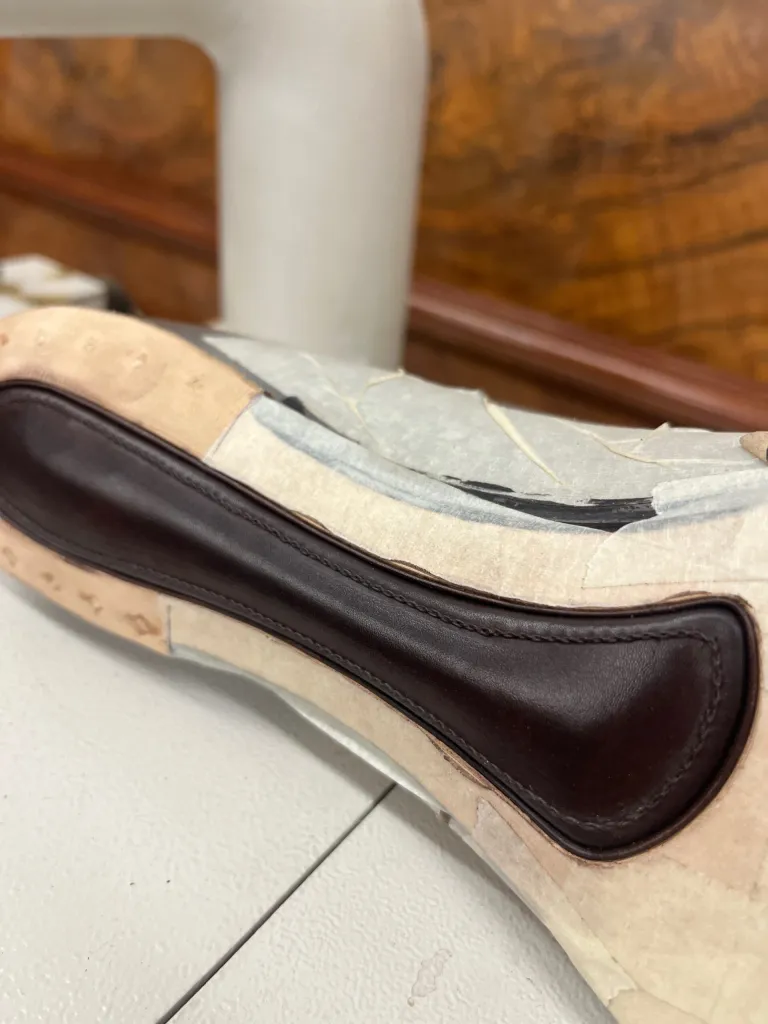
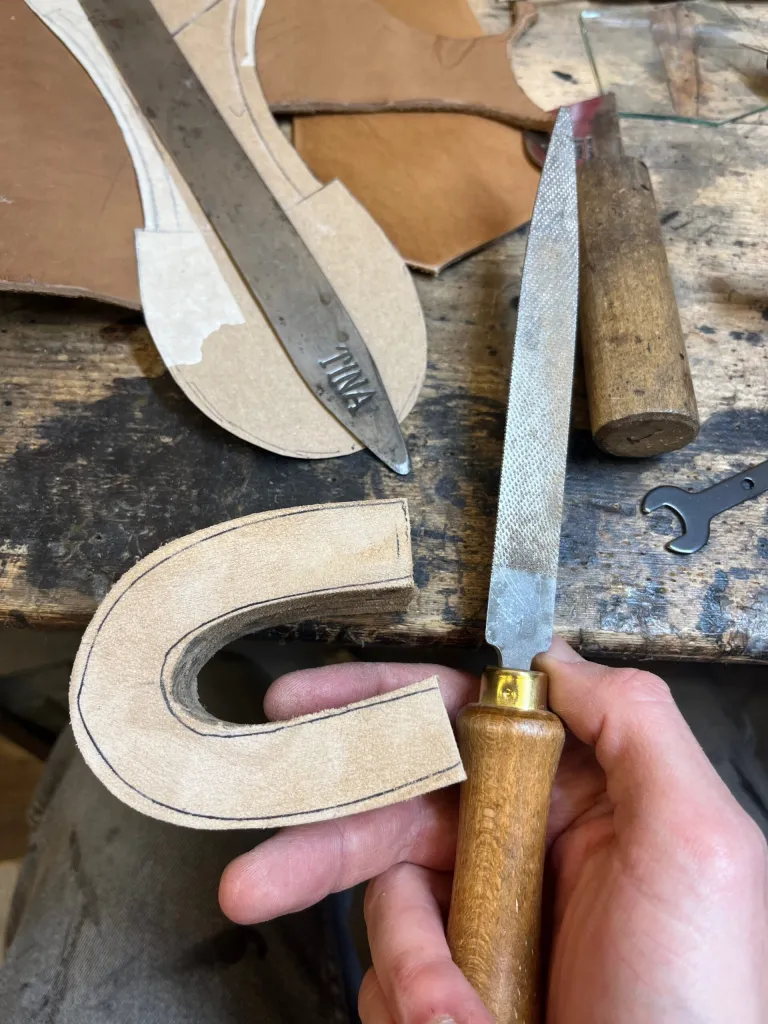
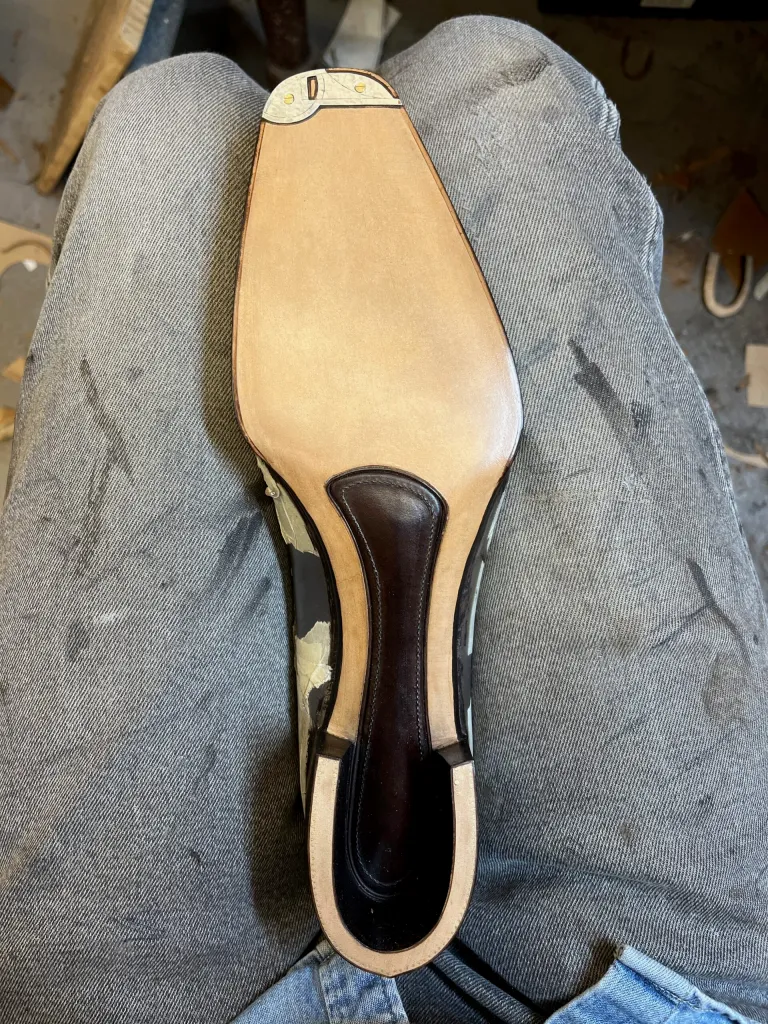
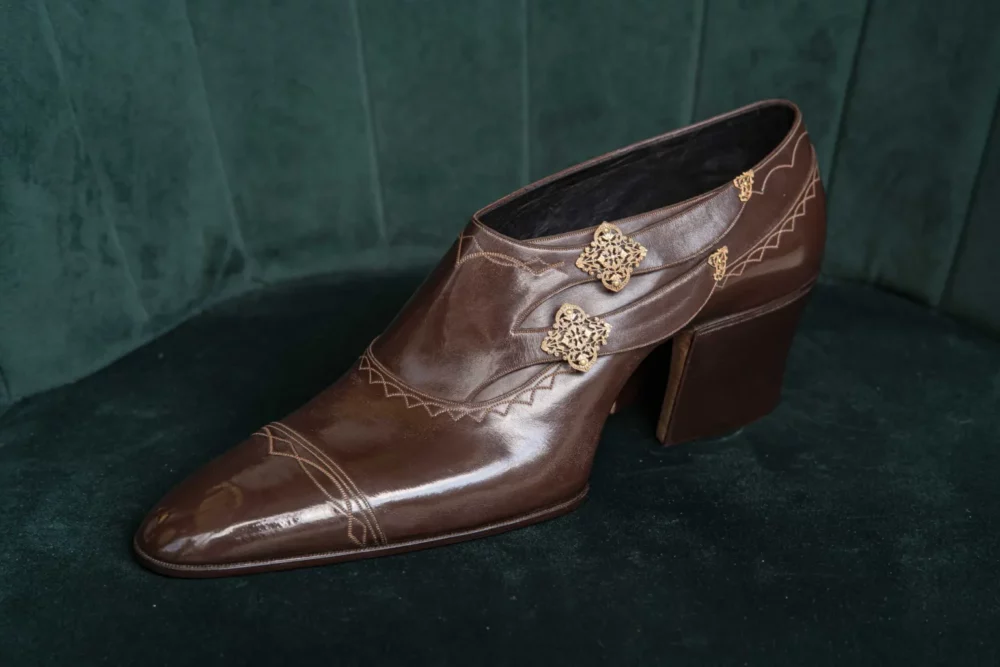
2nd Place: Ken Kataoka
Ken Kataoka of Japan was back for the title, after finishing second in 2022, but he narrowly missed out and once again had to settle for silver. His shoe was the favourite among several jury members – and visitors in London – though. What’s positive is that we can hope that he will bless the contest again soon with another superb shoe to try and finally get that gold. Ken is one of those makers who really push things with his entries and do stuff that immediately catches your eye. Ken did all of the work himself.
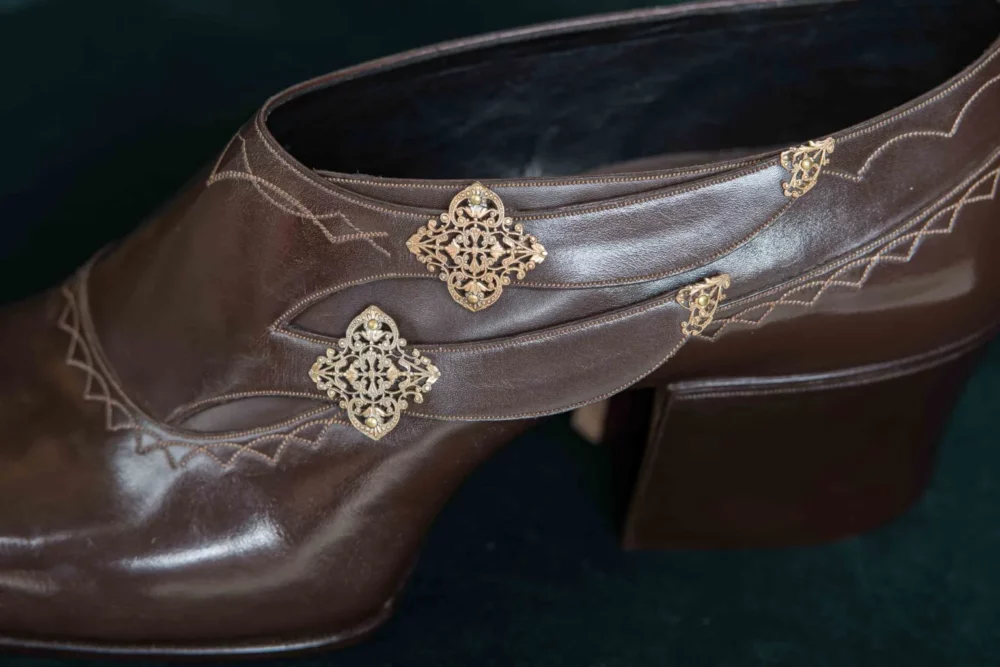
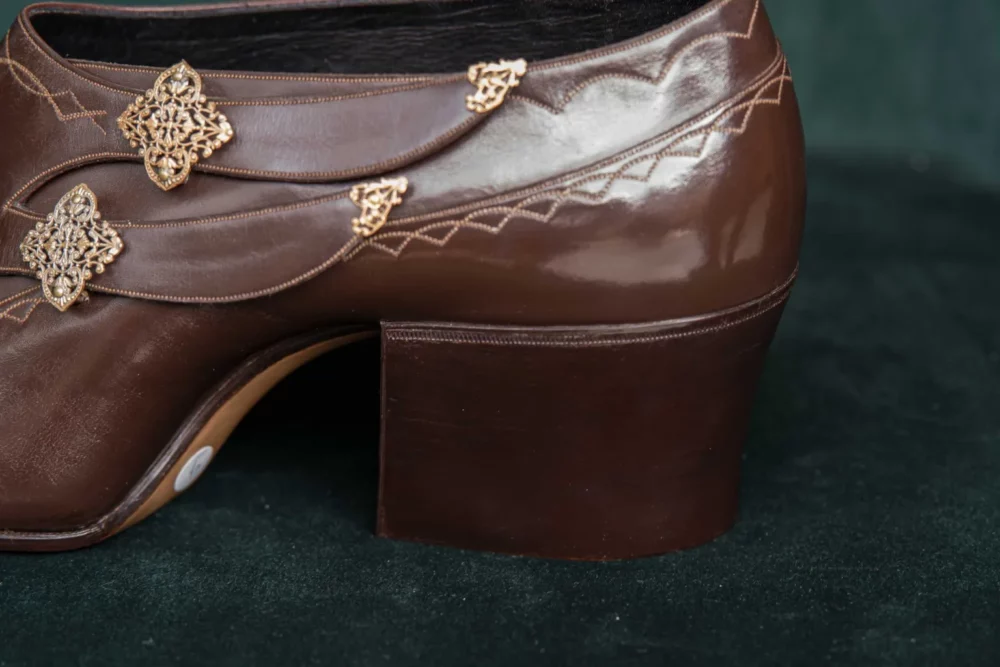
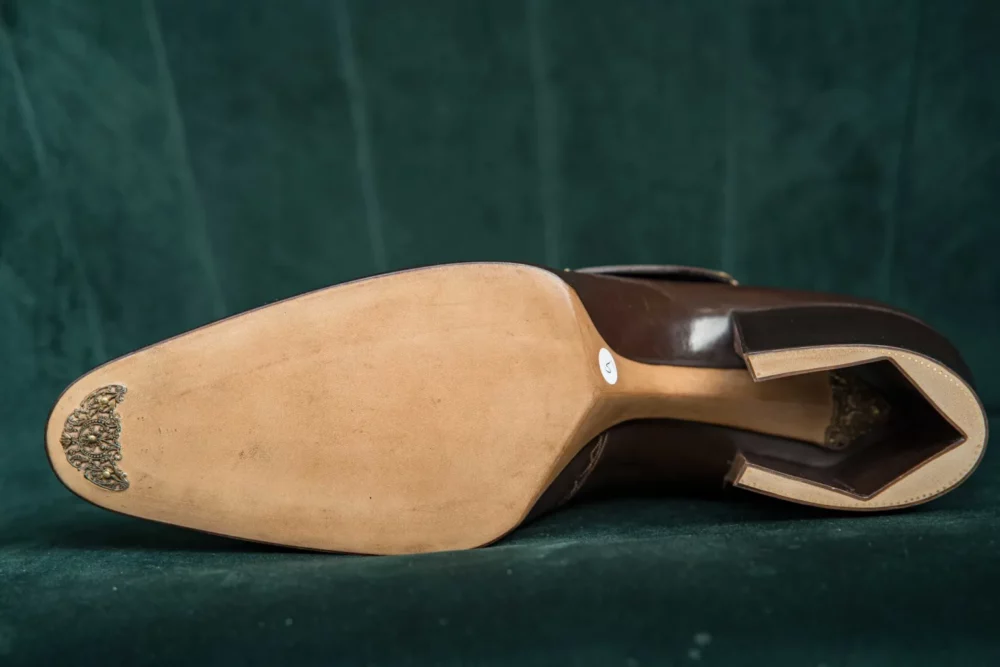
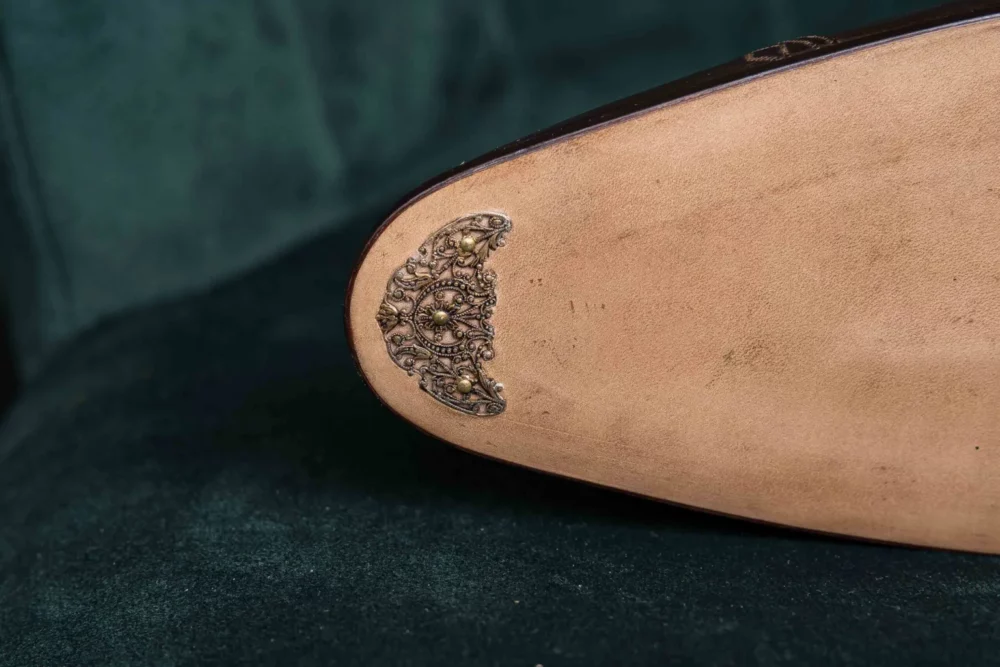
Ken Kataoka is a Japanese maker based in Tokyo, in Asakusa, the shoe district. For several years has worked under the brand name Siroeno Yosui but plans to use his own name going forward. He has learned shoemaking, among other things, at the shoemaking school of Noriyuki Misawa. He runs one of the largest YouTube channels in the world, showcasing bespoke shoemaking, a channel he runs together with his brother, who films and edits.
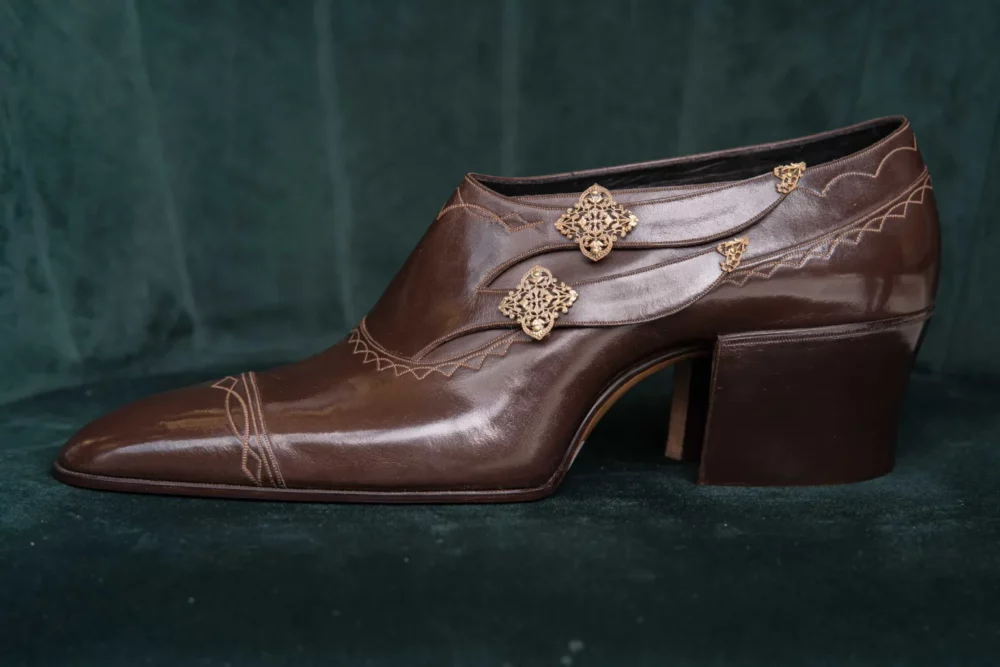
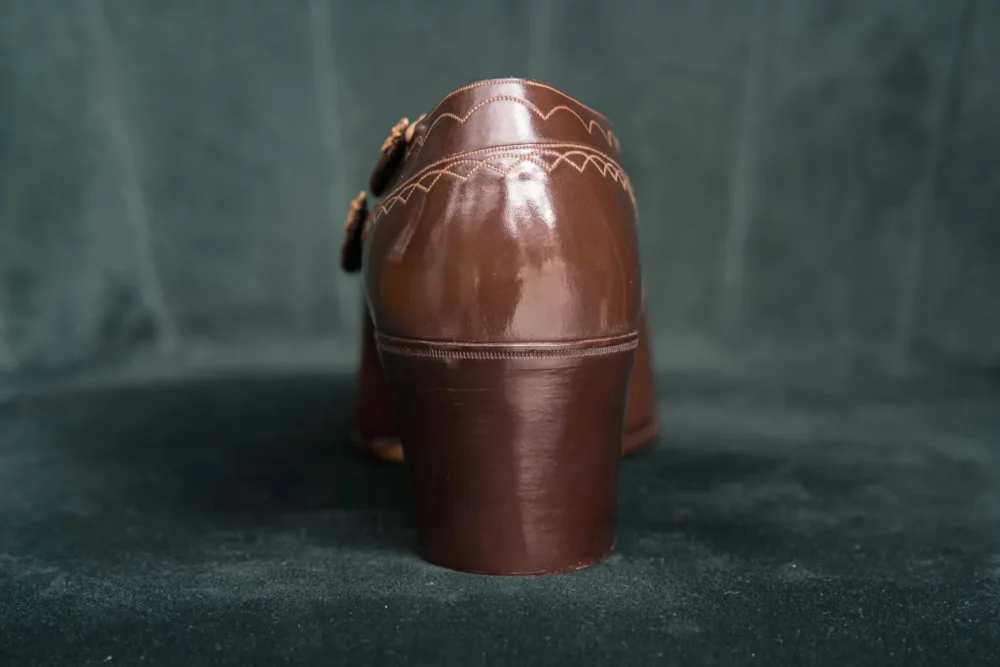
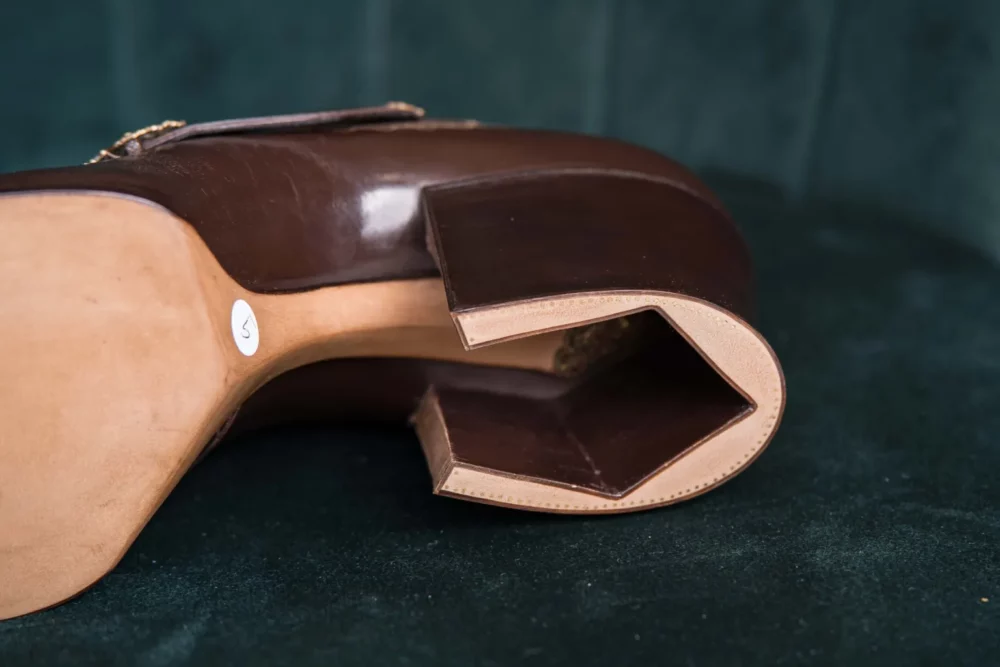
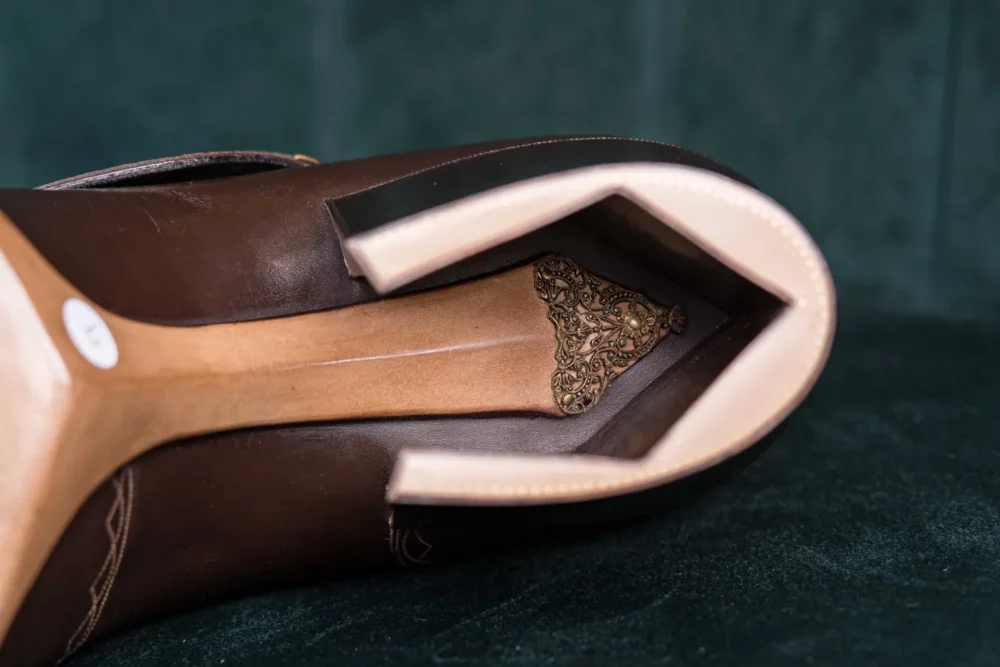
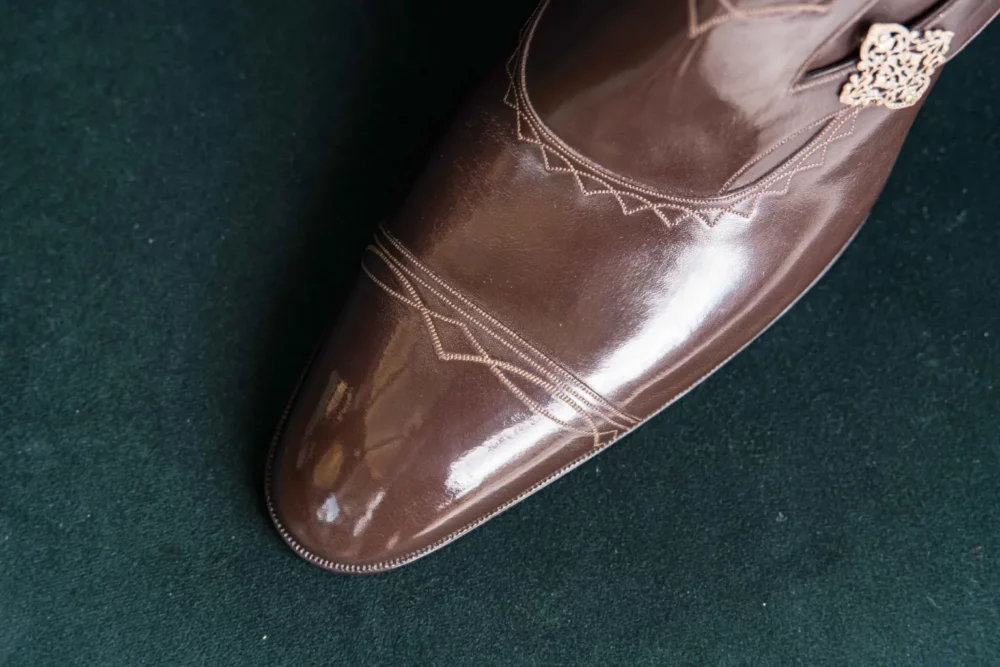
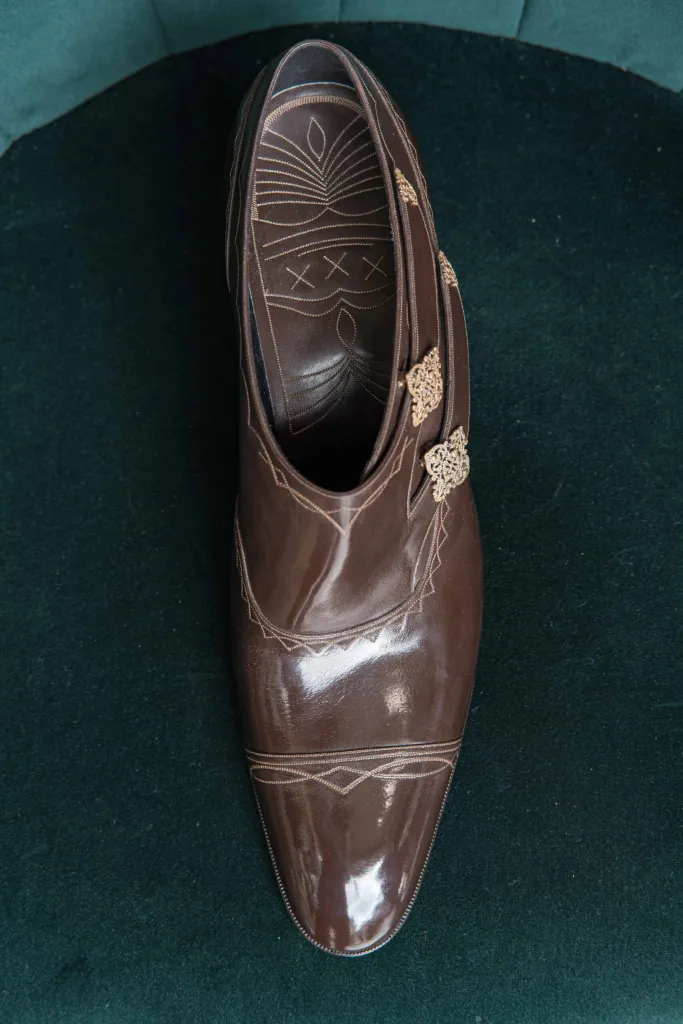
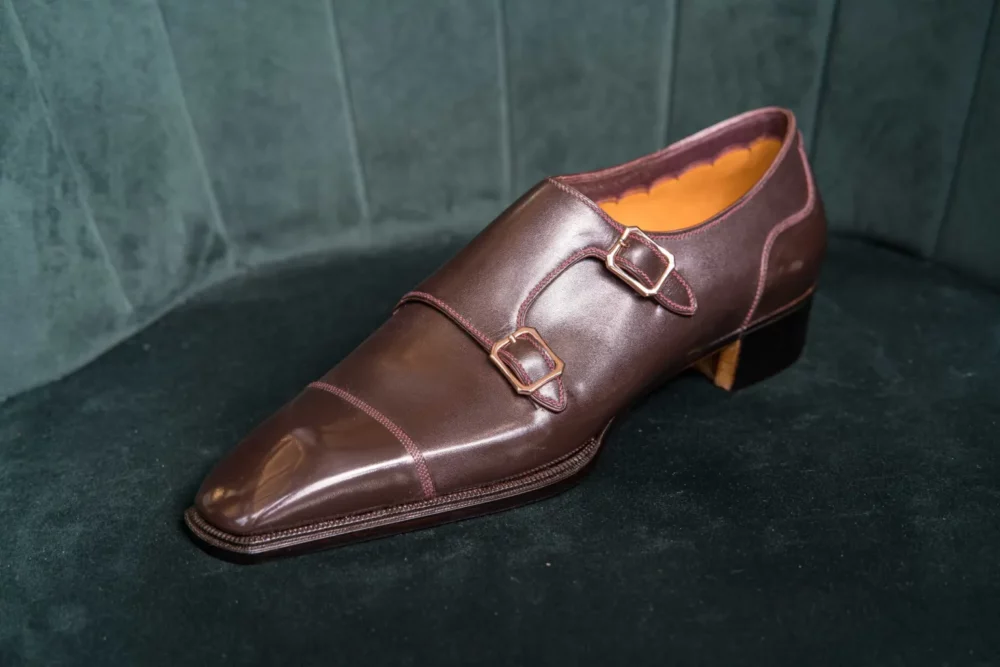
3rd Place: Ken Hishinuma
For the first time, a world champion enters the contest again, and he does it the year directly after his win. Ken Hishinuma of Japan won the gold medal last year with a stunning shoe, and the fact that he is back (also after making a twin to last year’s winning shoe in between) with a new superb shoe is quite incredible. It certainly shows dedication to craft these exhibition pieces.


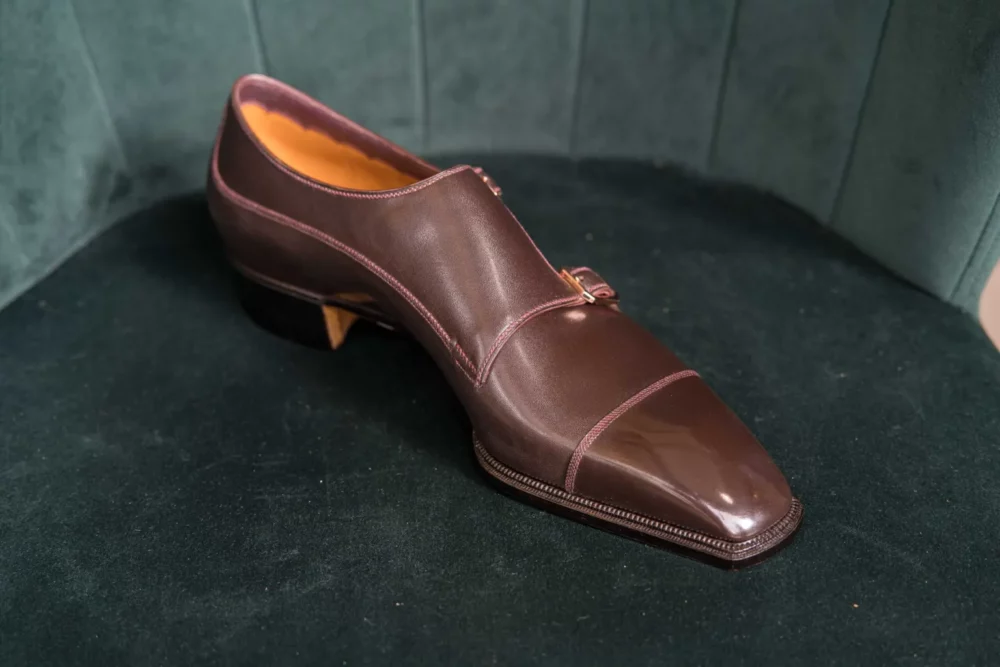
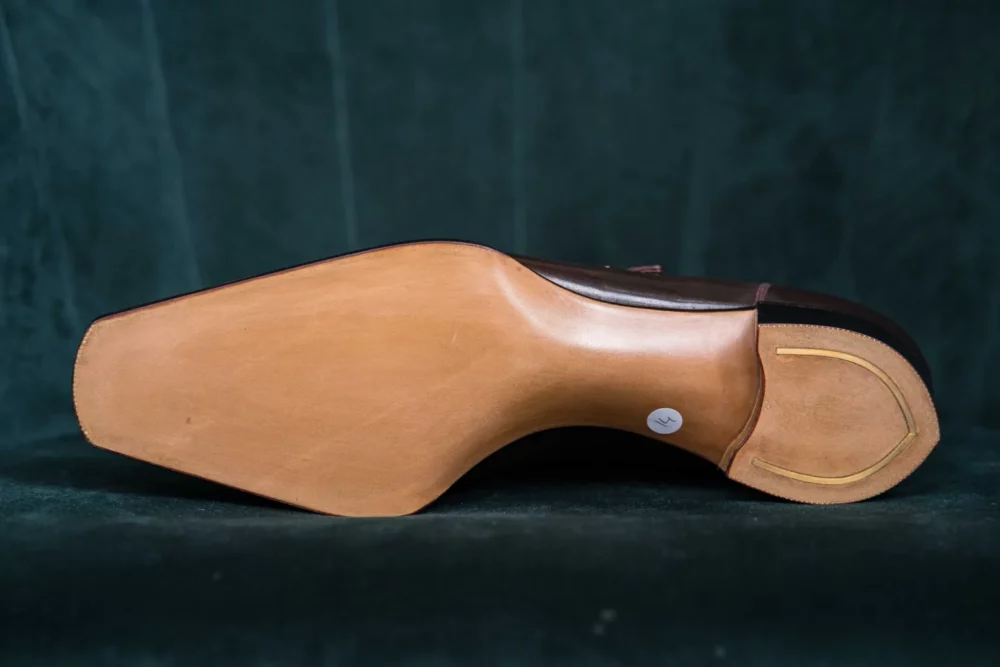
Ken’s double monk strap has a classic base, but with plenty of playful things going on and stuff that increased the difficulty score. For example, a lot of the upper stitching is handmade, with subtle contrasting threads, and super neat work. The heel is perhaps the most beautiful one of the whole contest, with a great shape and build, crowned with a row of nails and a unique brass metal inlet as the icing on the cake.
The sole edge is a two-levelled thing which is very neatly constructed and executed, and just gives the shoe a bit more strength. And if you closely examine the upper pattern, it’s a really intricate, large piece that stands as the base. A shoe that may look rather basic at first, but the more you look, the more stunning parts you discover. Execution ais t the same top level as last year.

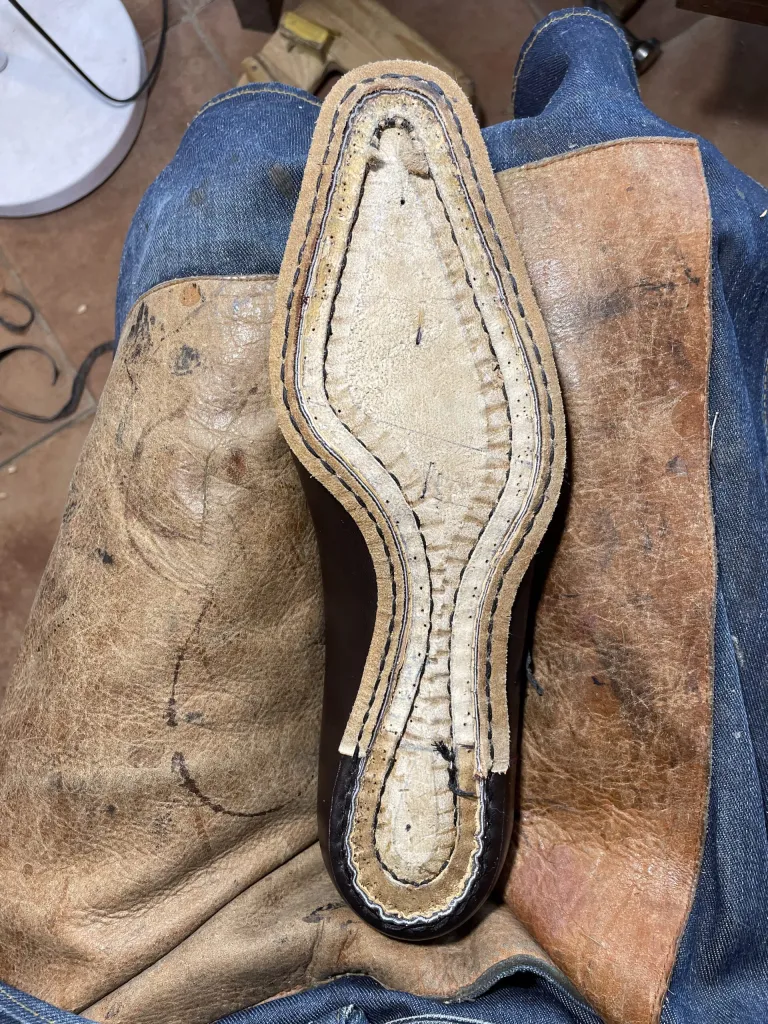
Ken Hishinuma runs the shoe brand Khish the Work. He is based in the central parts of Japan, in the woods outside Hokuto City, Yamanashi prefecture. Khish the Work offers MTO and bespoke, and especially his more casual designs are perfect for today’s day and age. Ken clearly has a great eye for design. He has one of Japan’s largest YouTube channels on shoemaking, called Crazy about Shoes.
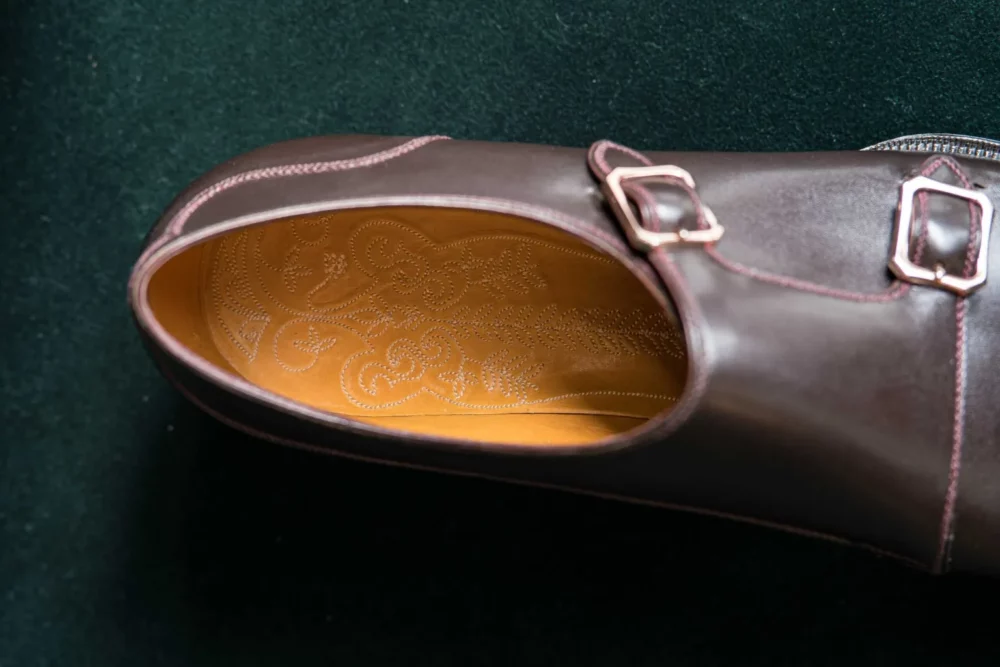
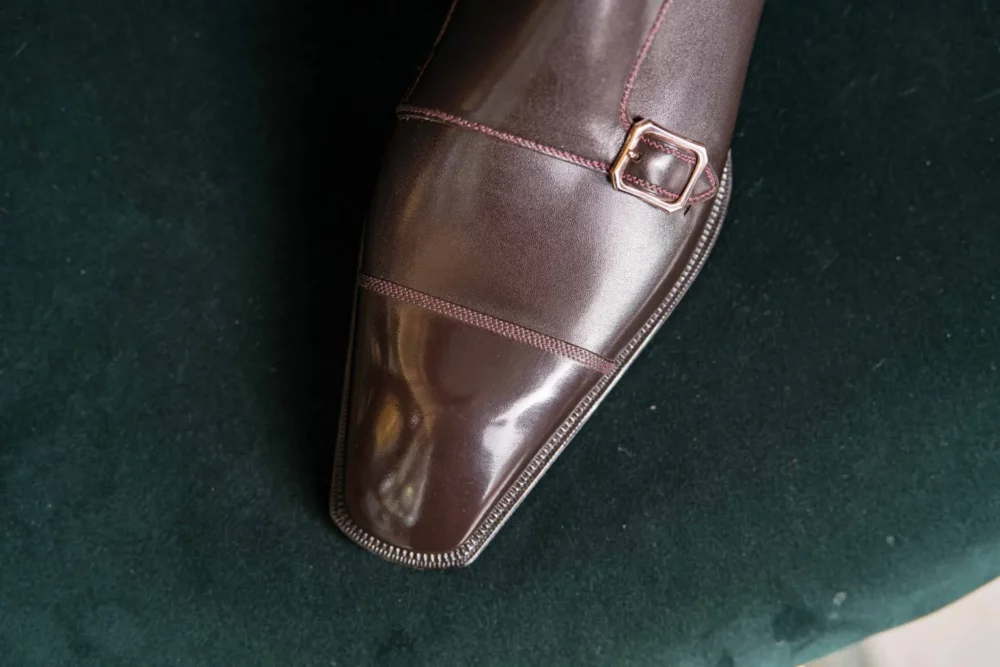
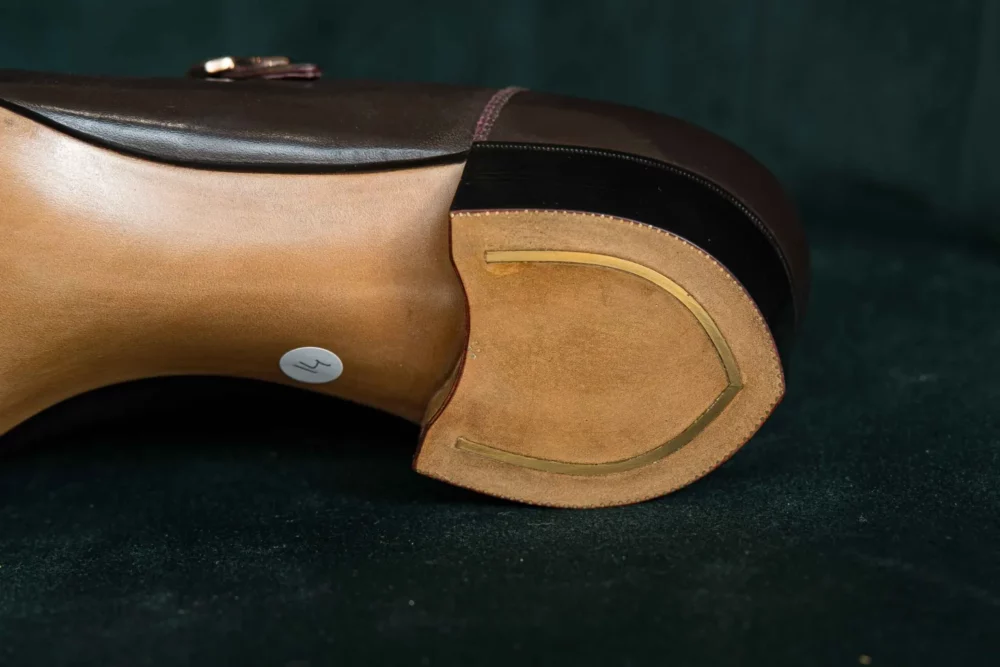
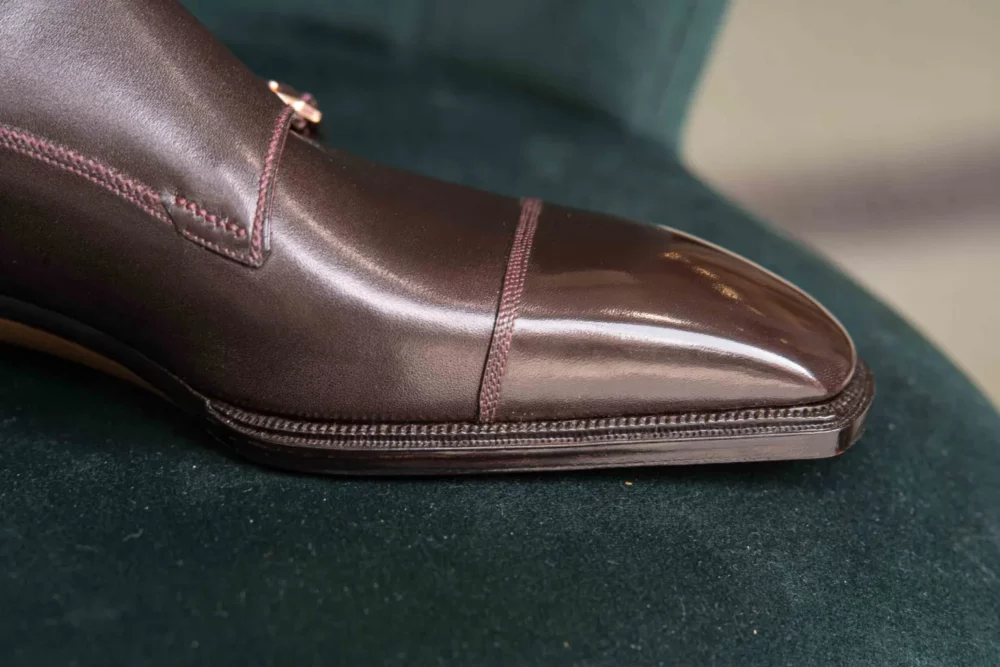
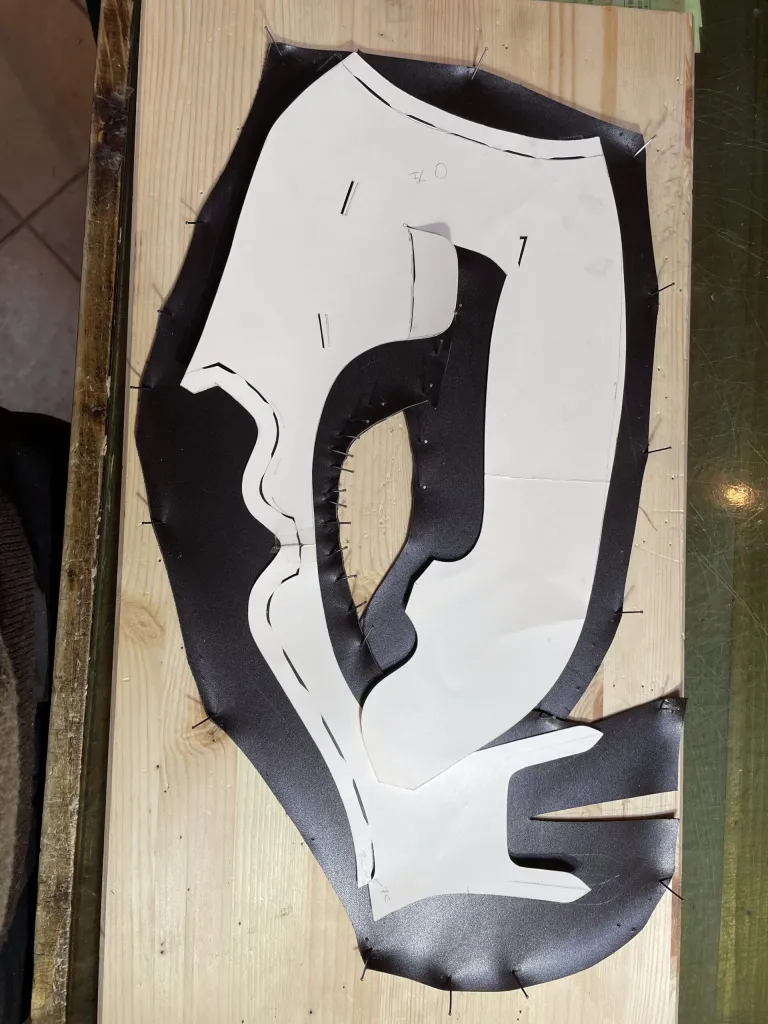
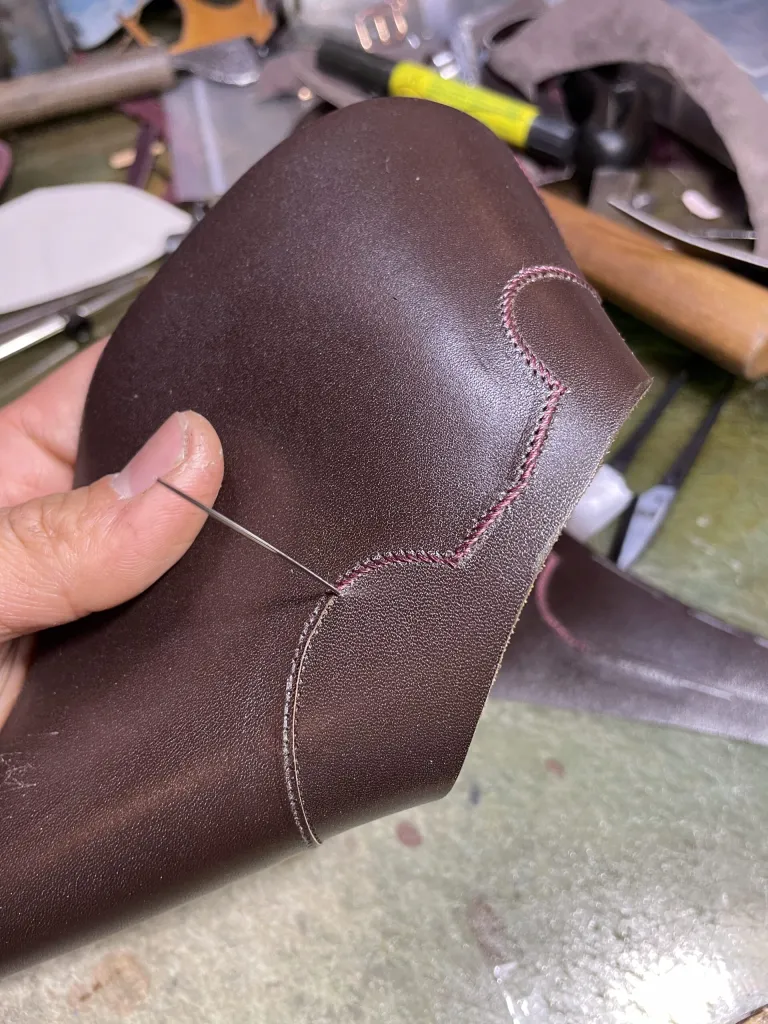
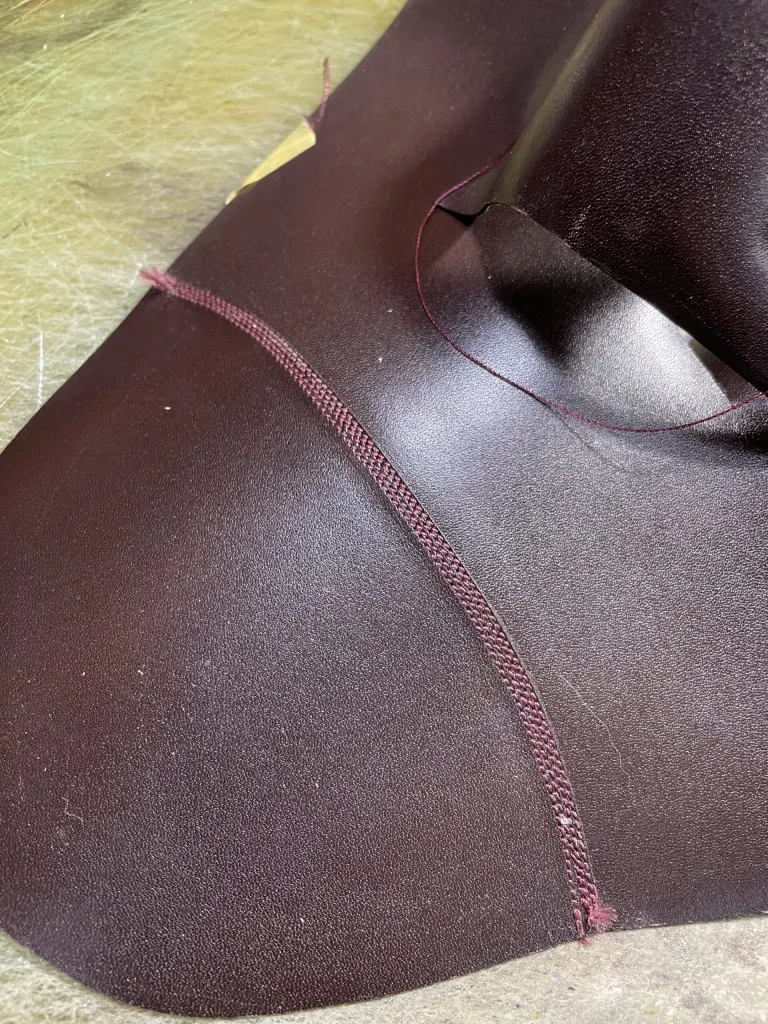
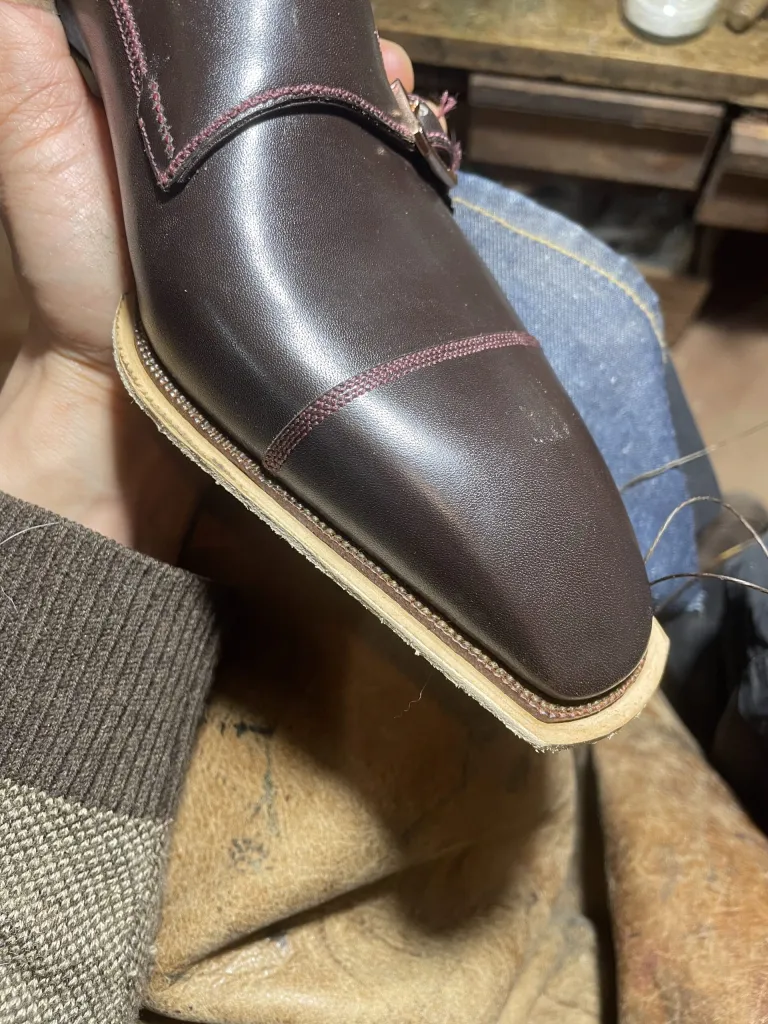
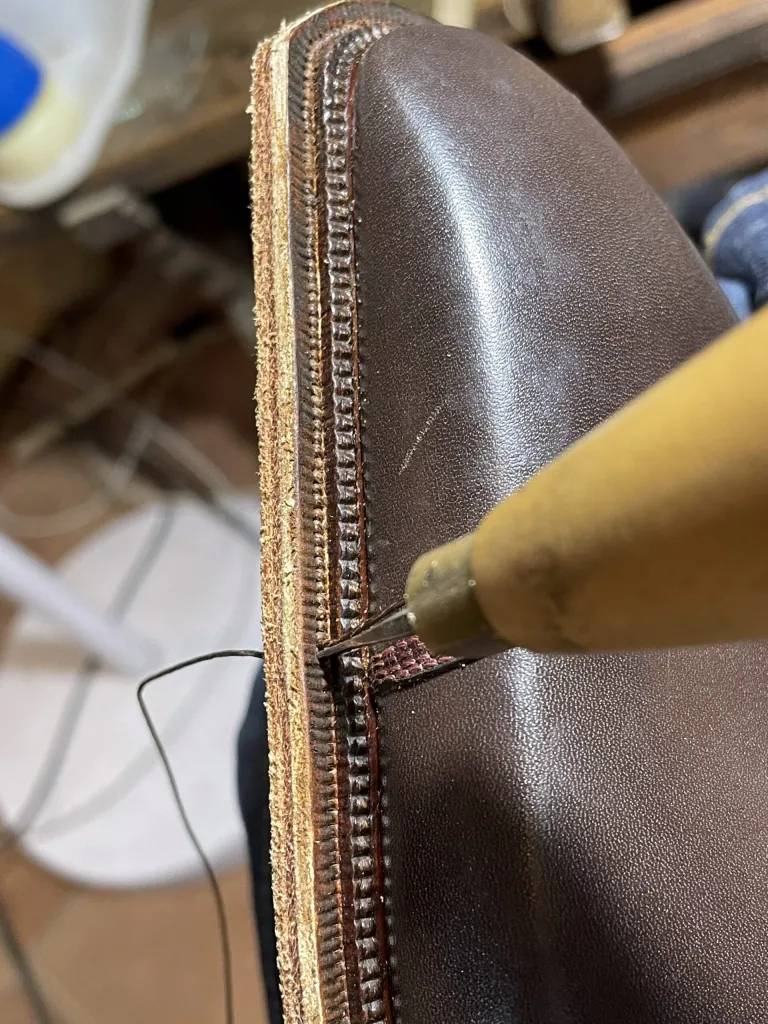
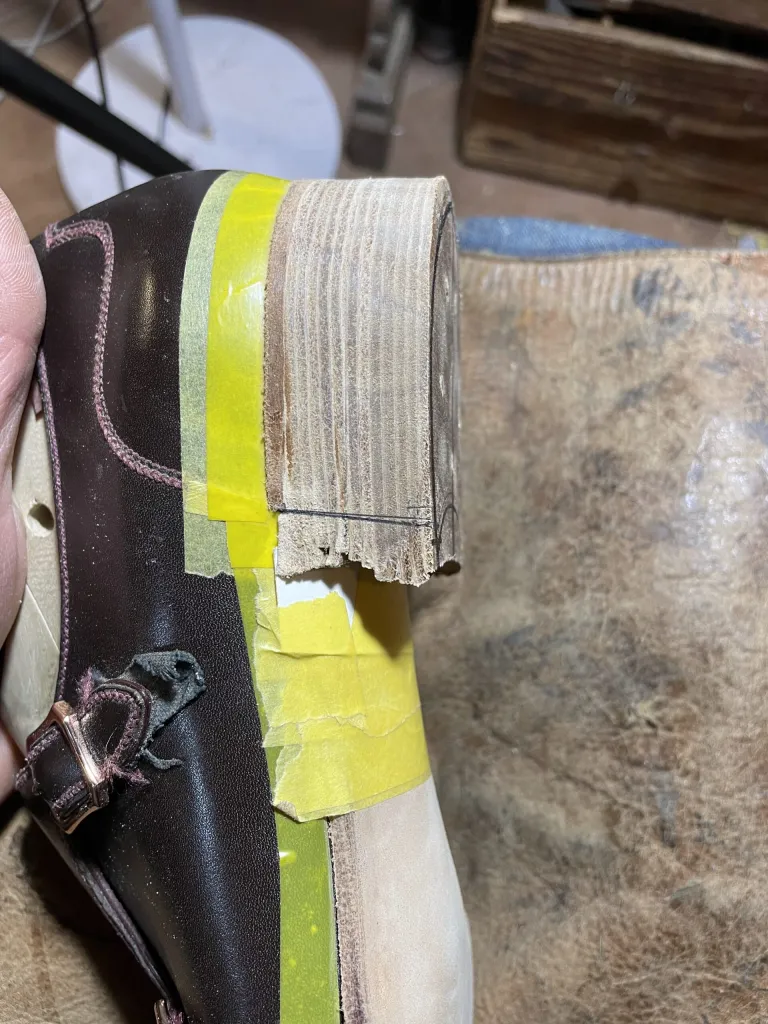
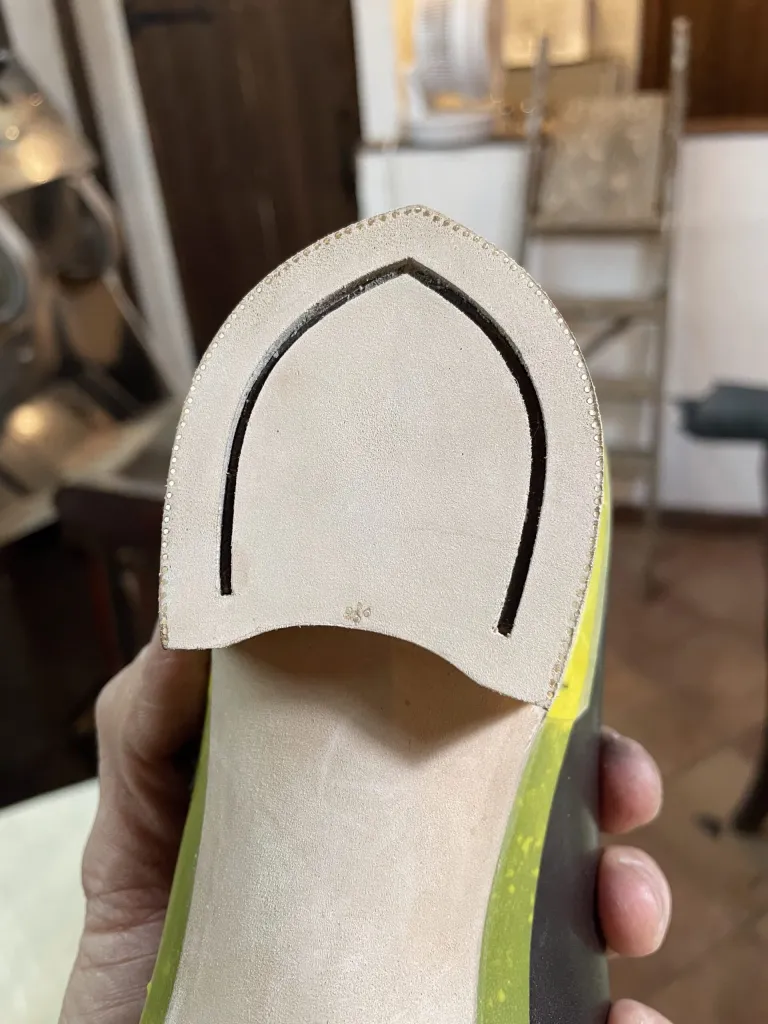
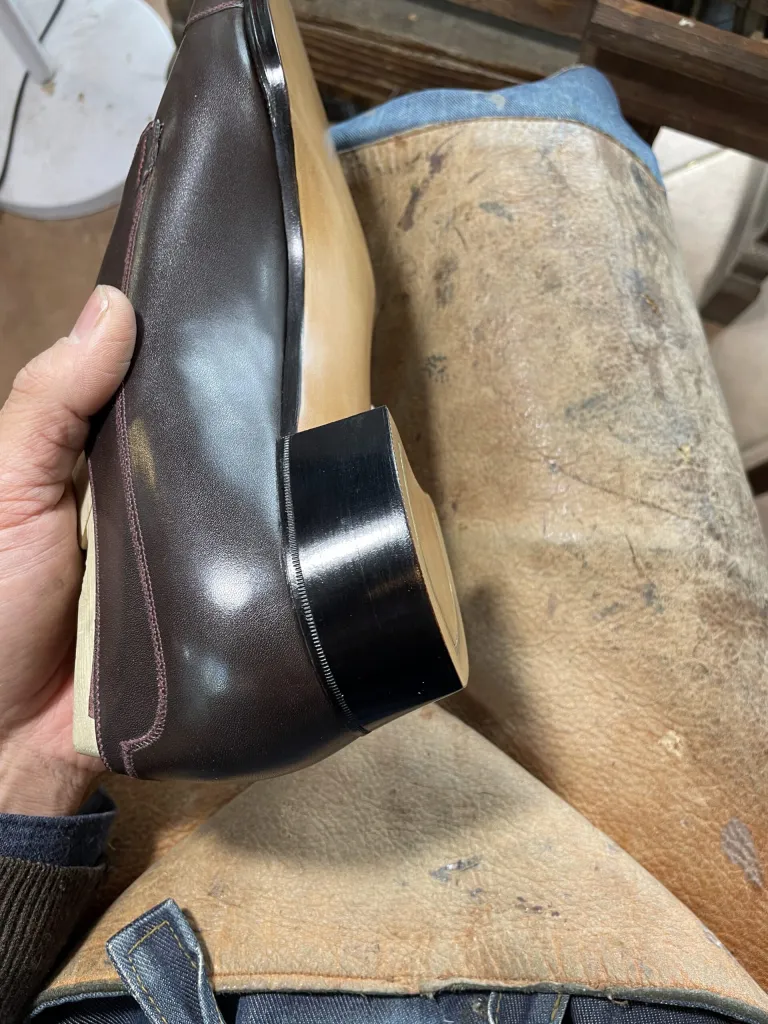
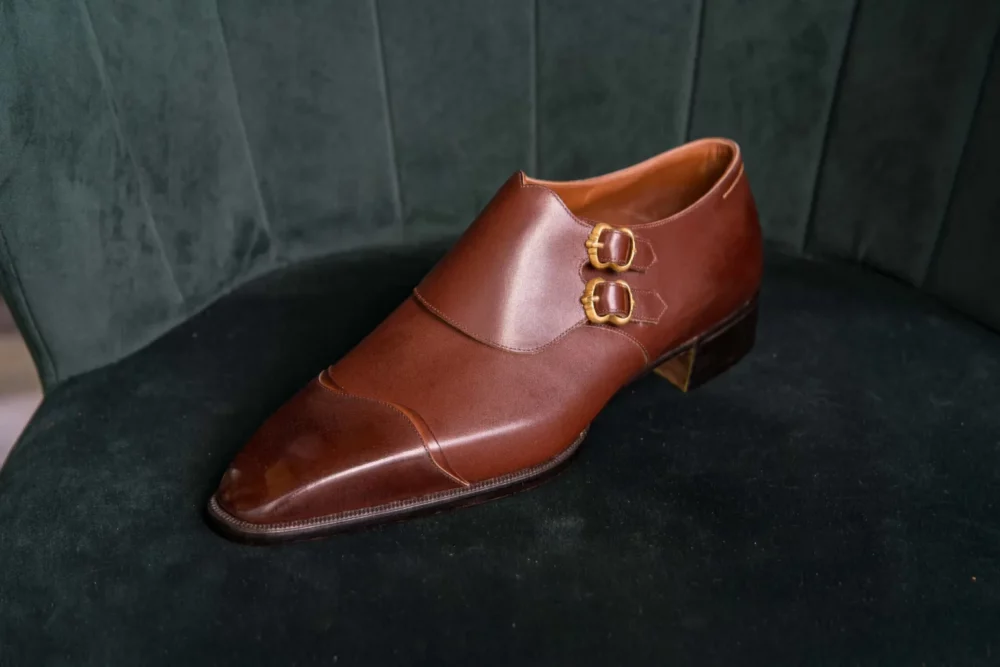
4th Place: Emi Liao
A favorite design-wise for many in the jury, this beautifully toned down double monk strap with delicate small twists, like the wavy toe cap, gold details, and fine buckles. Nifty little details like the openable charm piece placed in the waist of the sole raised the experience of the shoe. The design explores the idea of time. It received the highest score of all shoes on design/aesthetics, and also high on execution.
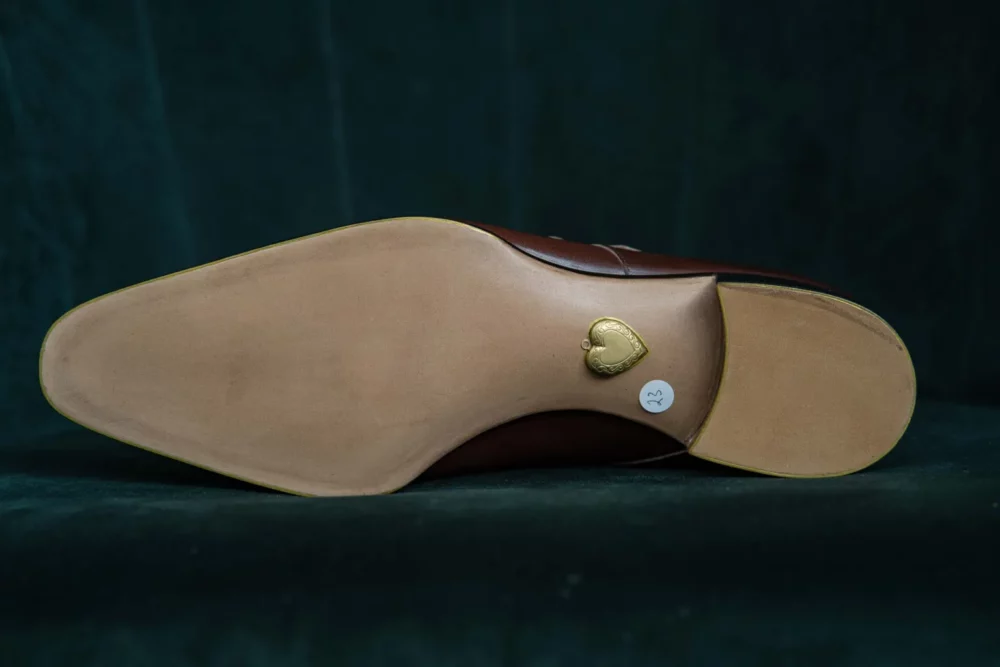
Emi Liao is from Taiwan, but has been based in London for a few years, where she’s been working at John Lobb London. Made by Emi Liao with technical support from Jiang “Dao” Daoyuan of Aria Badia, who came third last year, upper and pattern support from Hongni Lou, and some design support from Xiyun and Chamin.
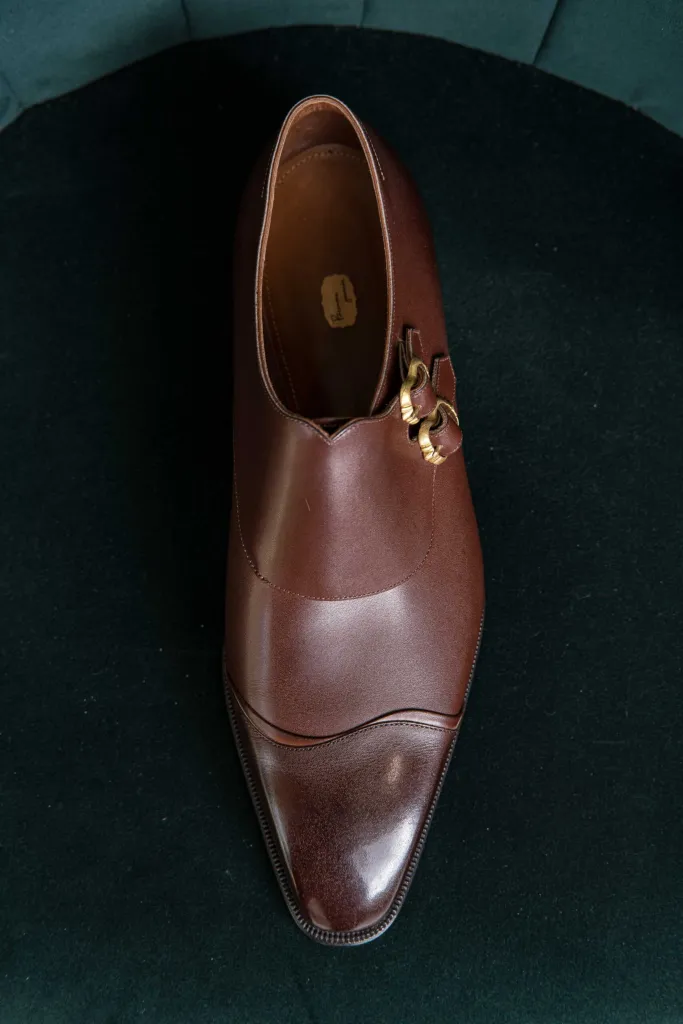

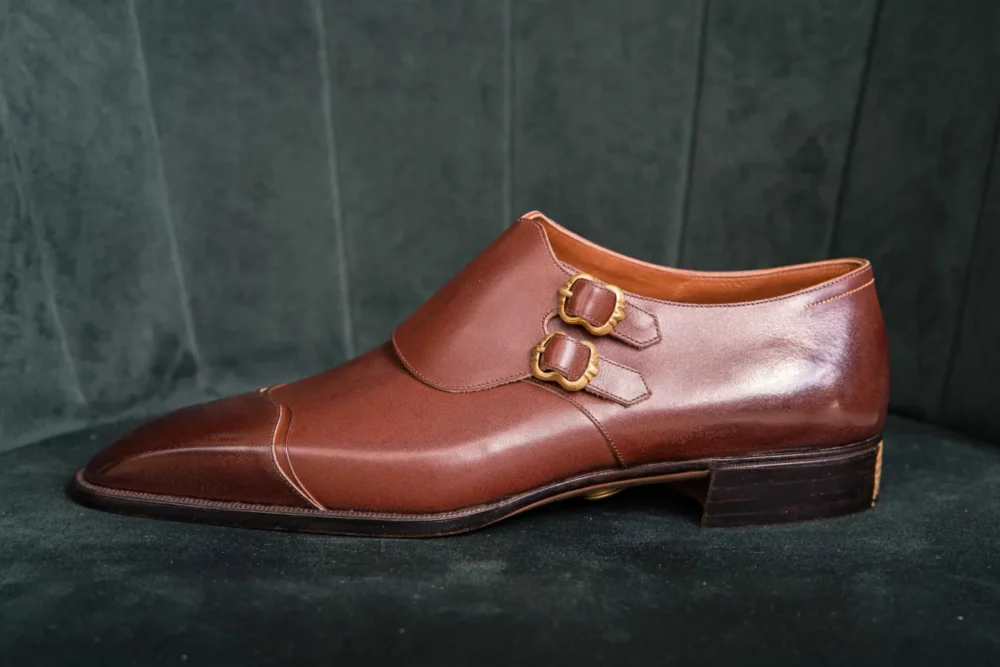
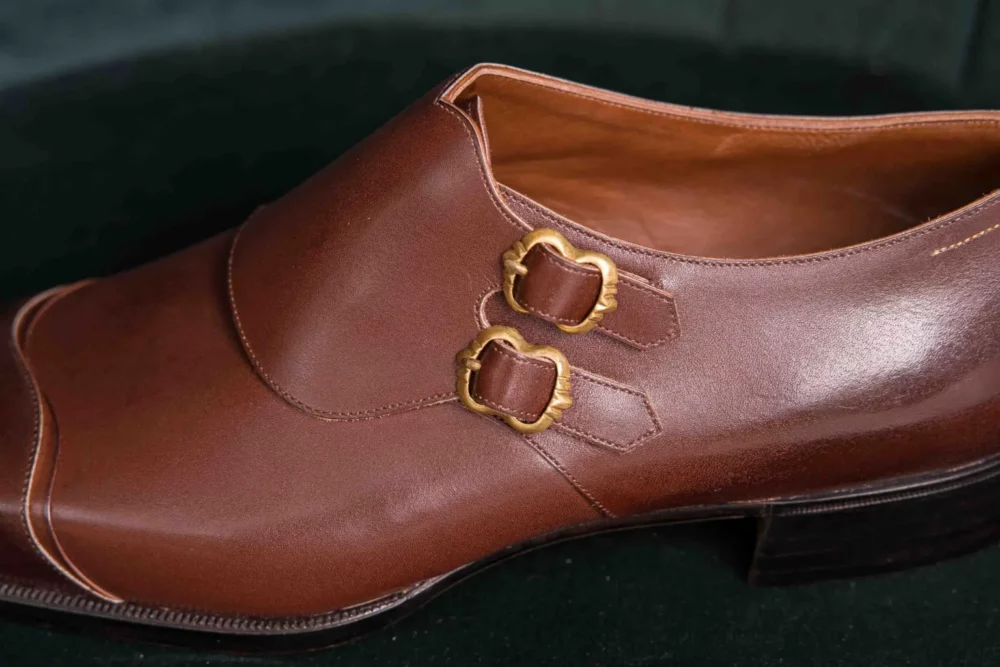
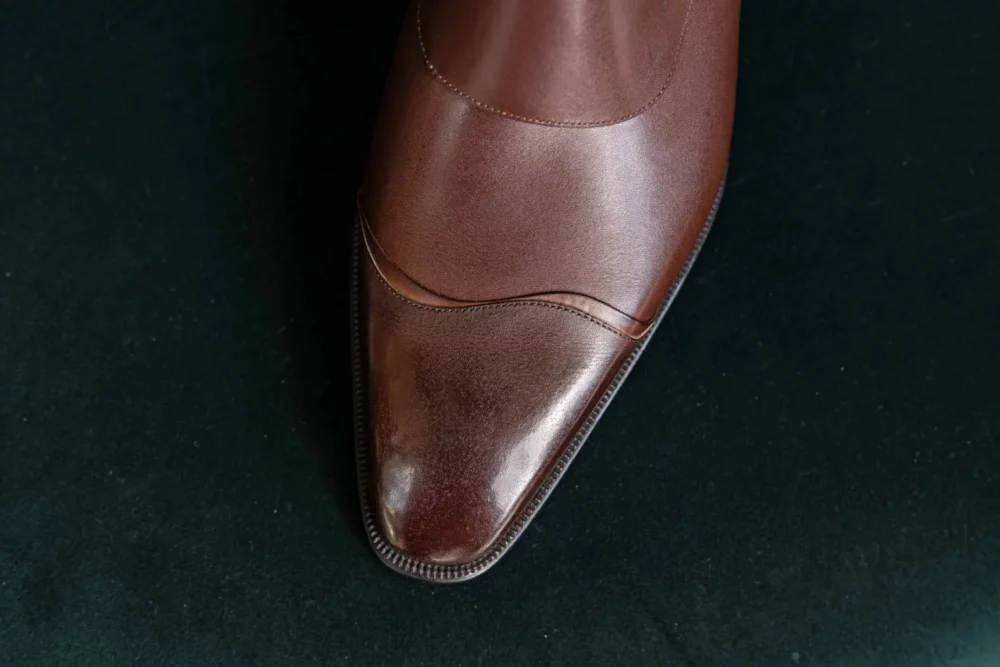
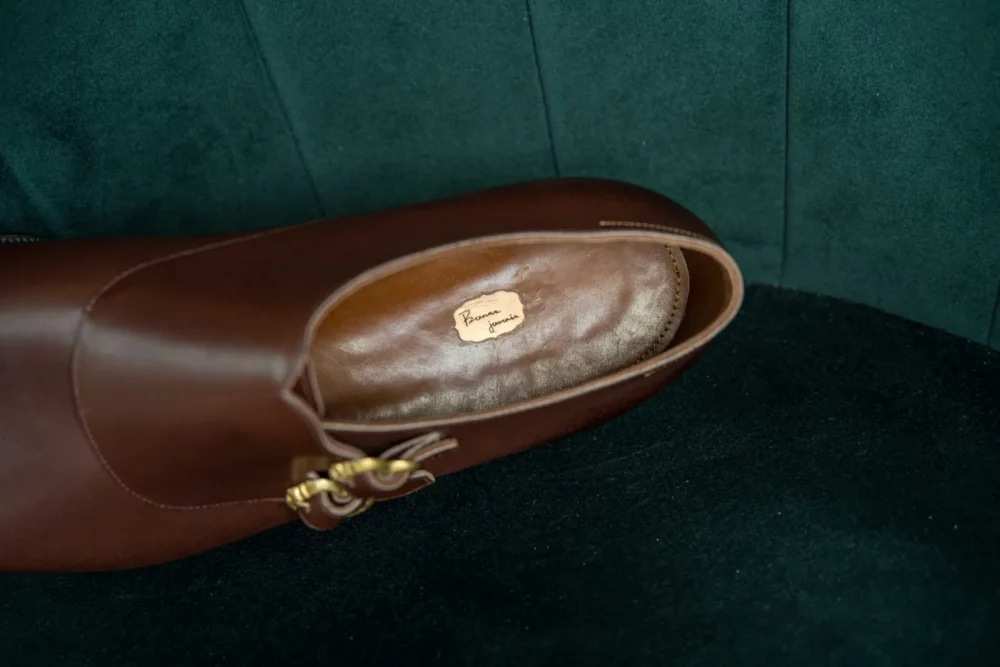
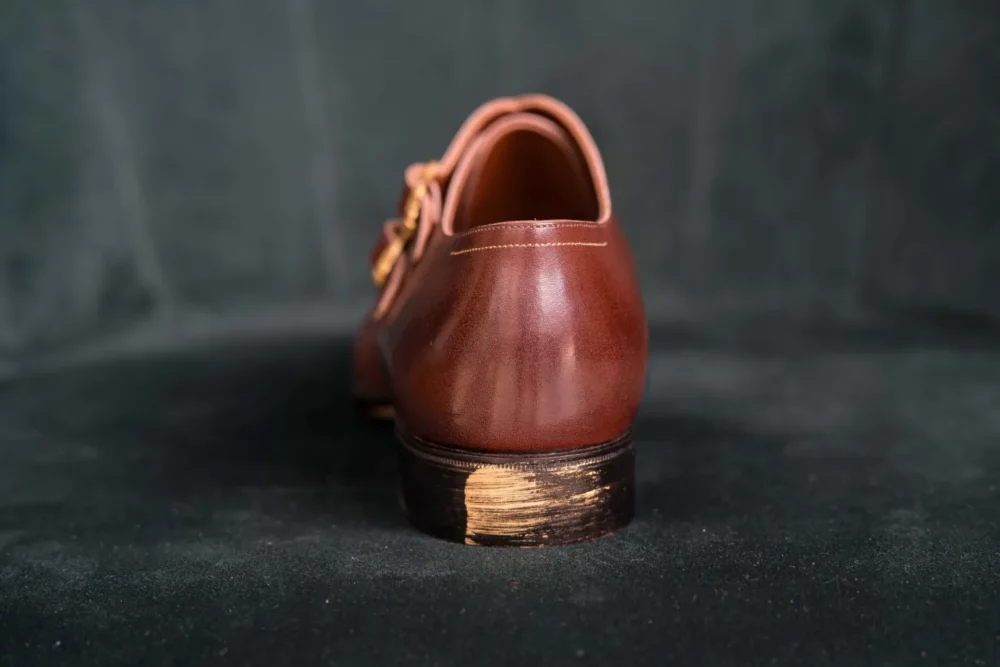
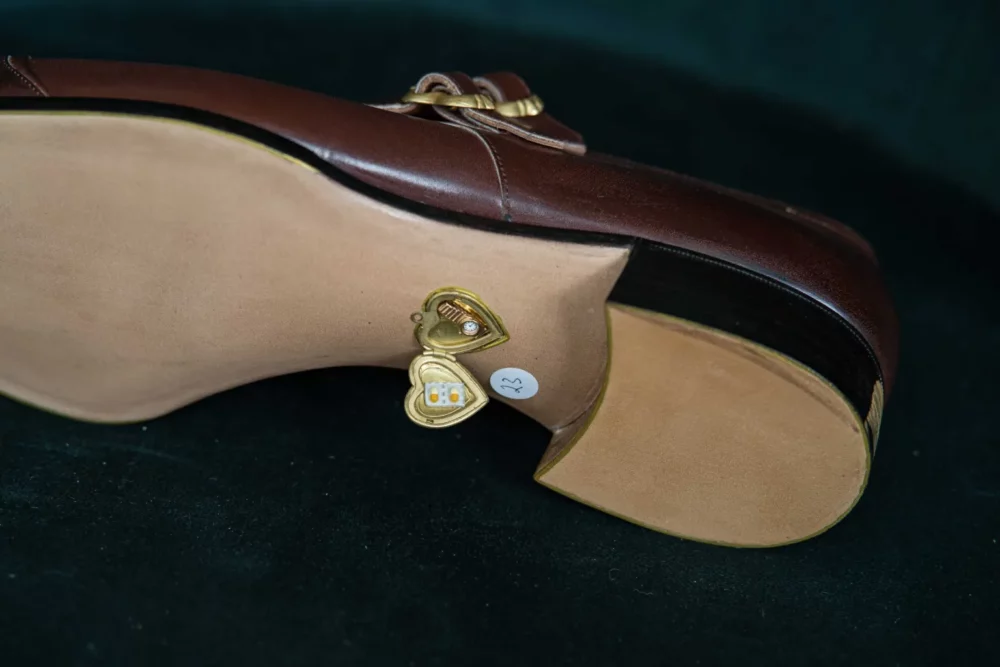
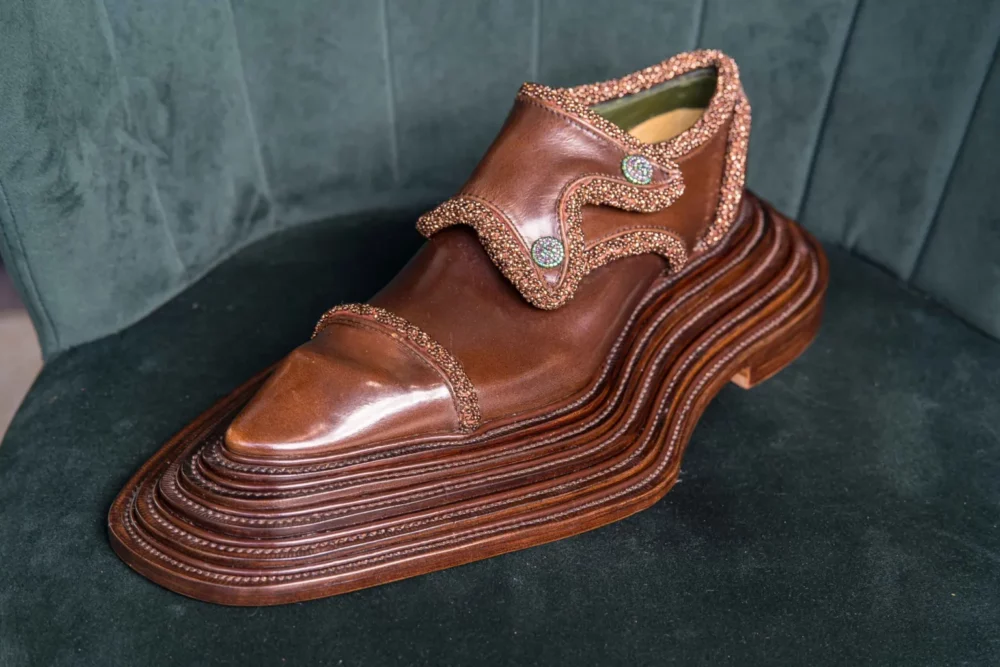
5th Place: The Last Shoemaker
The Last Shoemaker is a workshop based in Bangkok, run by Scotsman Allan Donnely. Last and pattern was made by Allan, hand embroidery by Jib Blouin, upper making by Mr. Rang, and Mr. Hin did the bottoming. Crazily enough, this workshop was destroyed in a fire this spring, including their half-finished contest shoe. What they called the Marshmallow Double Monk looked like a Toasted Marshmallow Double Monk, and when they decided to remake this in just two weeks’ time, they kept that name.
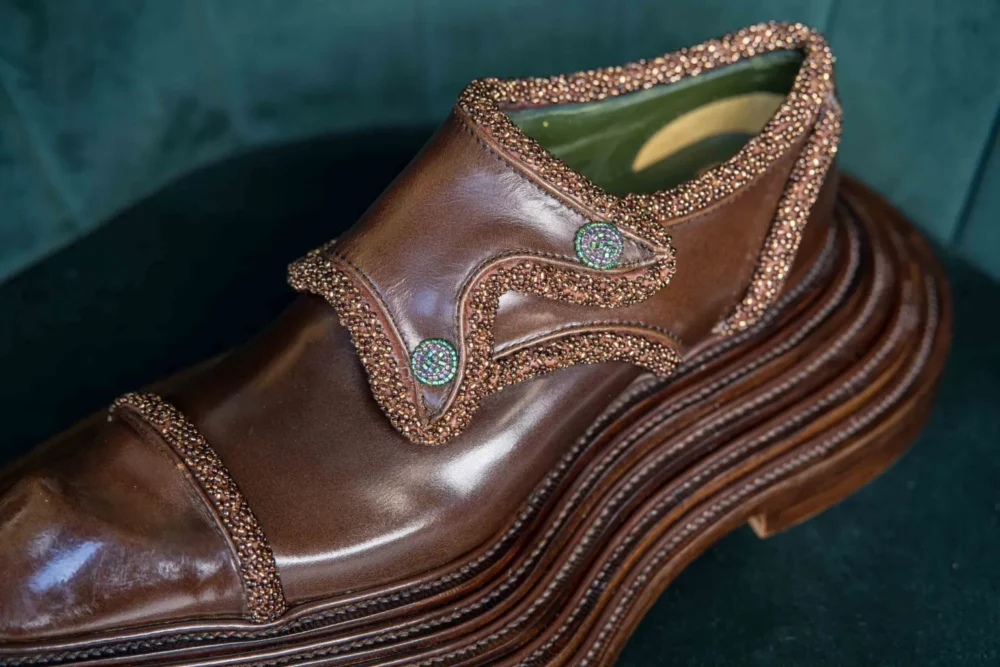
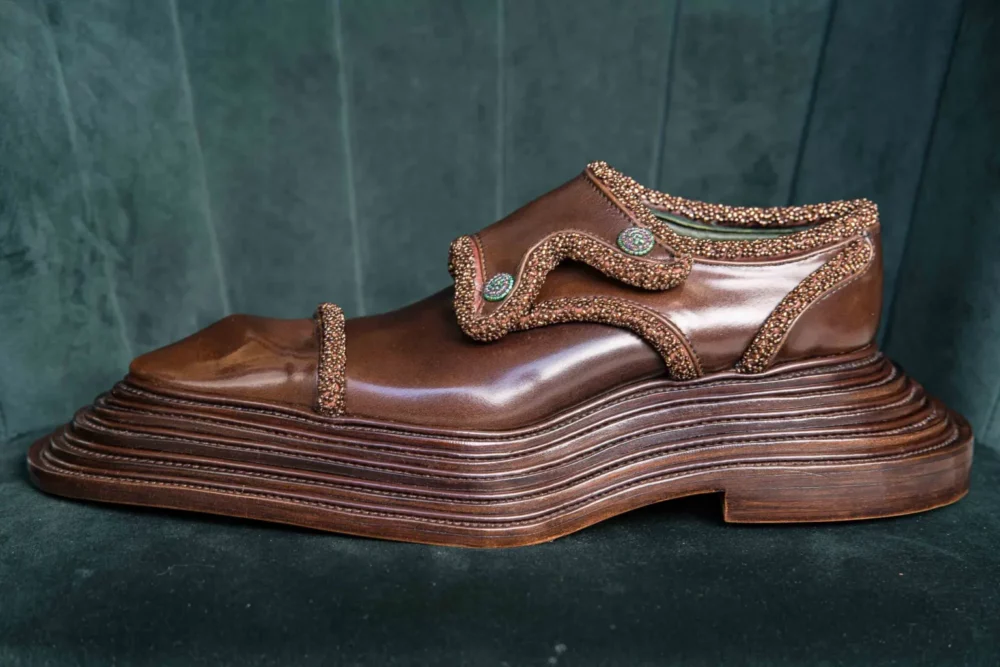
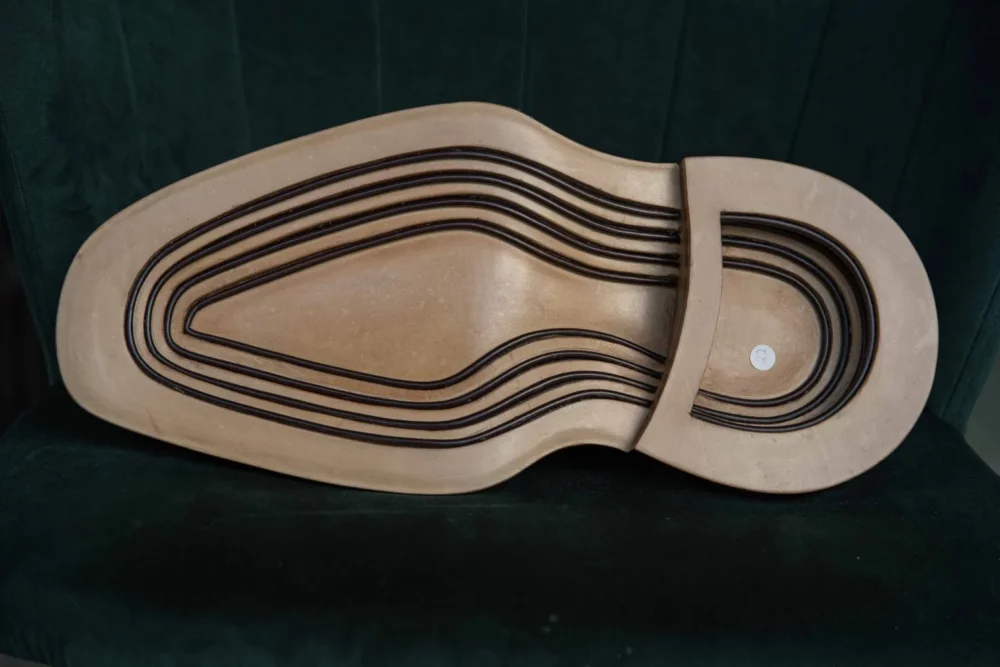
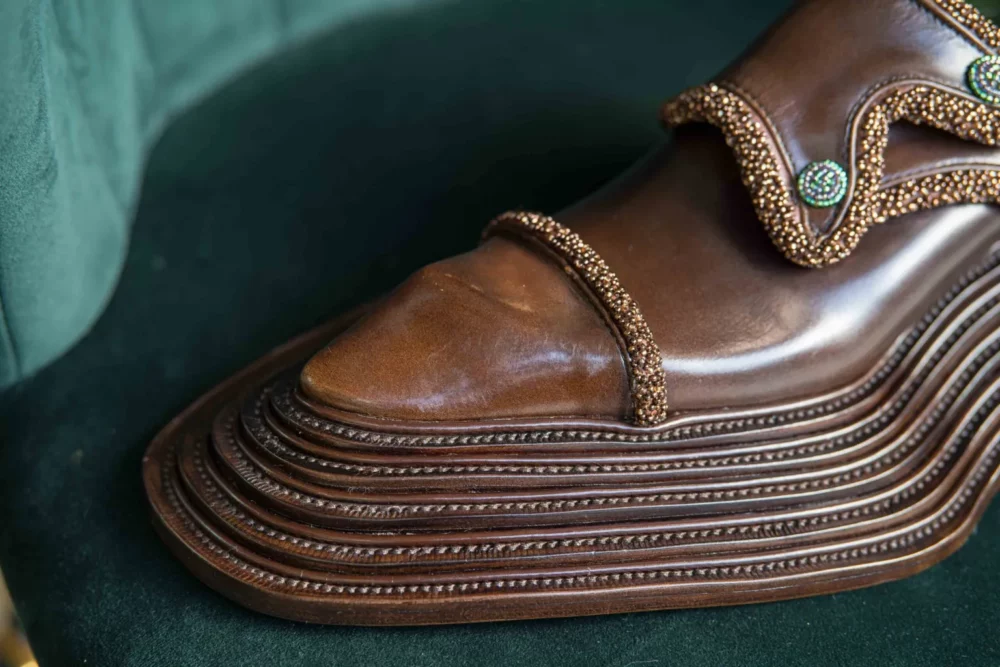
A spectacular shoe, obviously. Might be hard to catch in photos, but it’s enormous and extremely heavy. Hand-beaded decoration and buttons. Melted toe shape. Five-layered hollowed-out sole, made properly of veg tanned bends. A for effort, for sure. Didn’t score the highest on execution, but good on difficulty and design/aesthetics. So, the shoes that are very special certainly can impress design-wise as well.
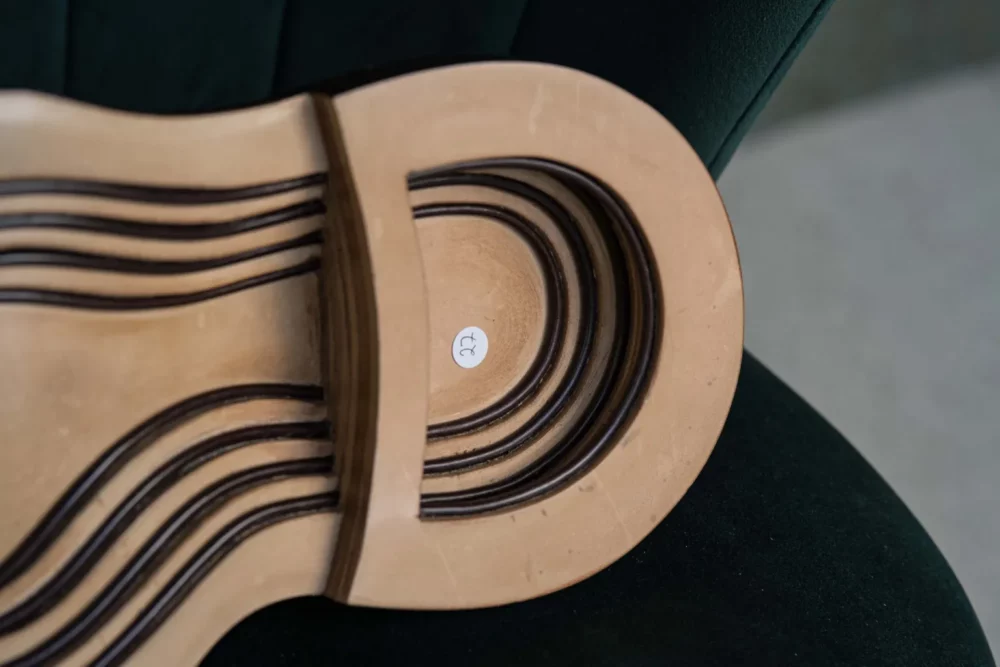
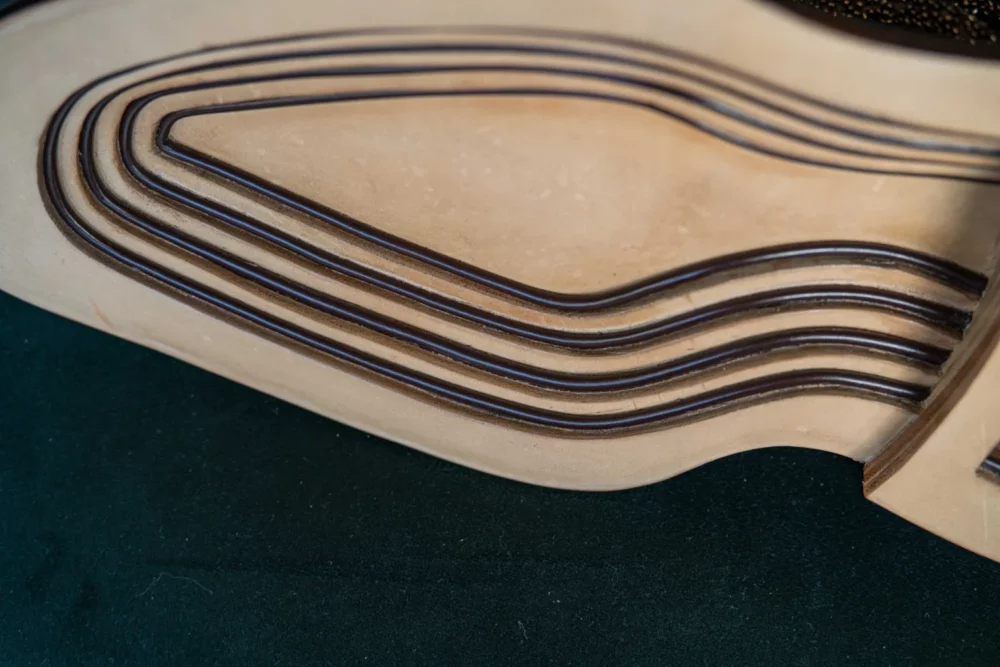
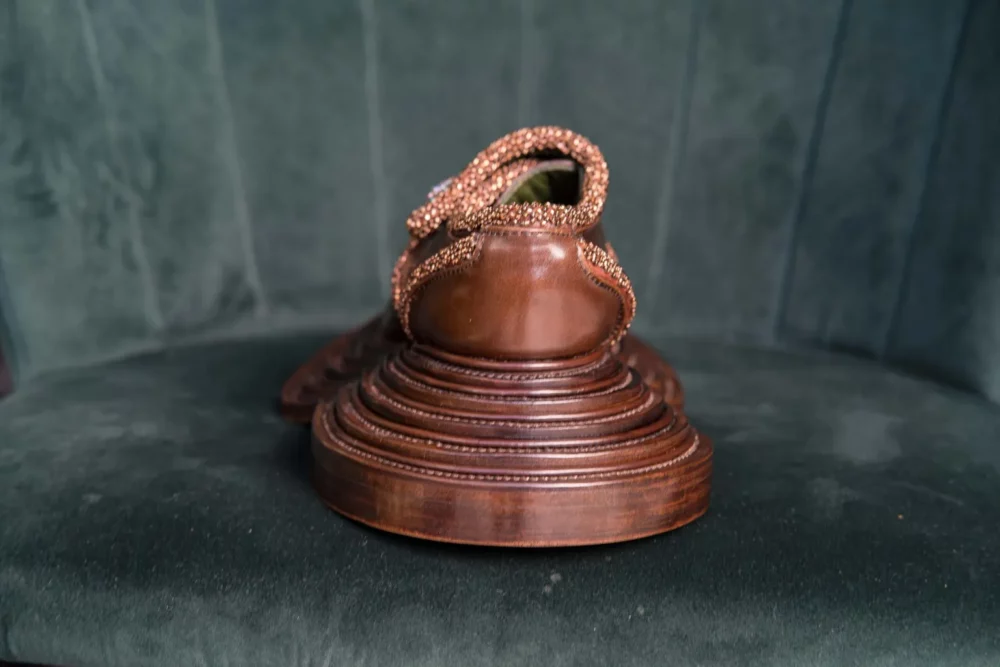
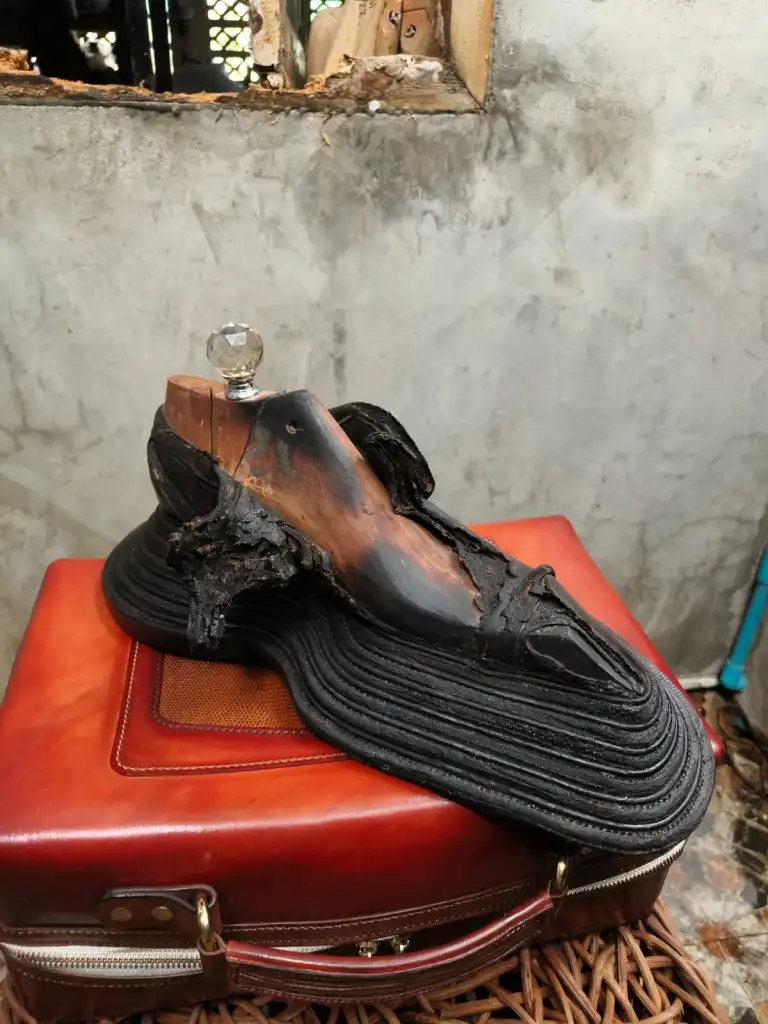

6th Place: Reo Okuda
One of those shoes that perhaps doesn’t look that special at first sight, but when you look closely, you find a lot to appreciate. Like the tight, very finely made sole stitching, seamless upper part, and well-balanced pattern. And, the amazing nail work in the heel with 148 0,5 mm thick nails.
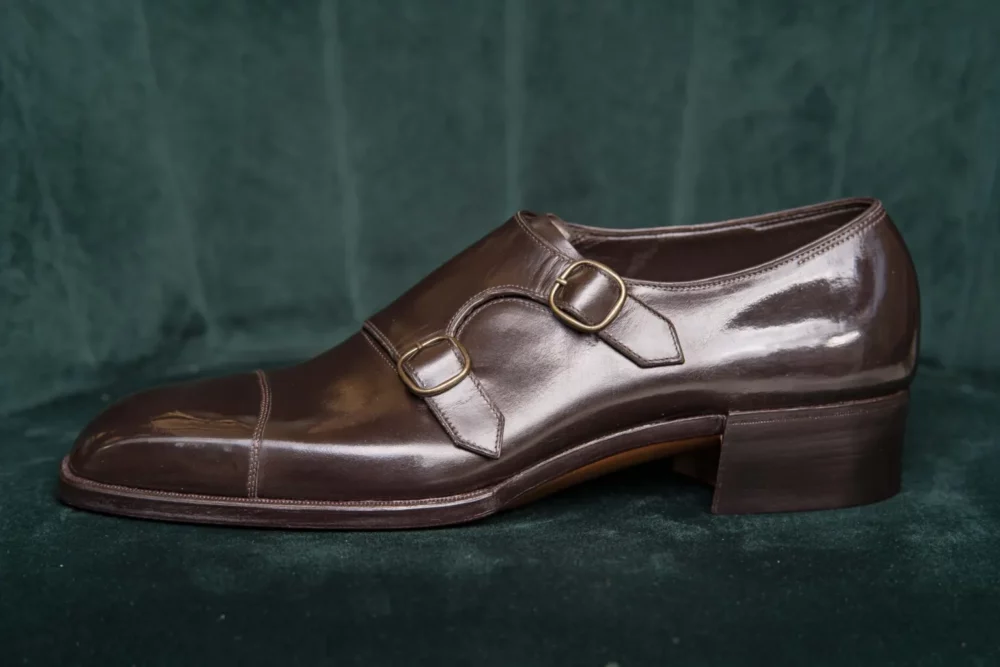
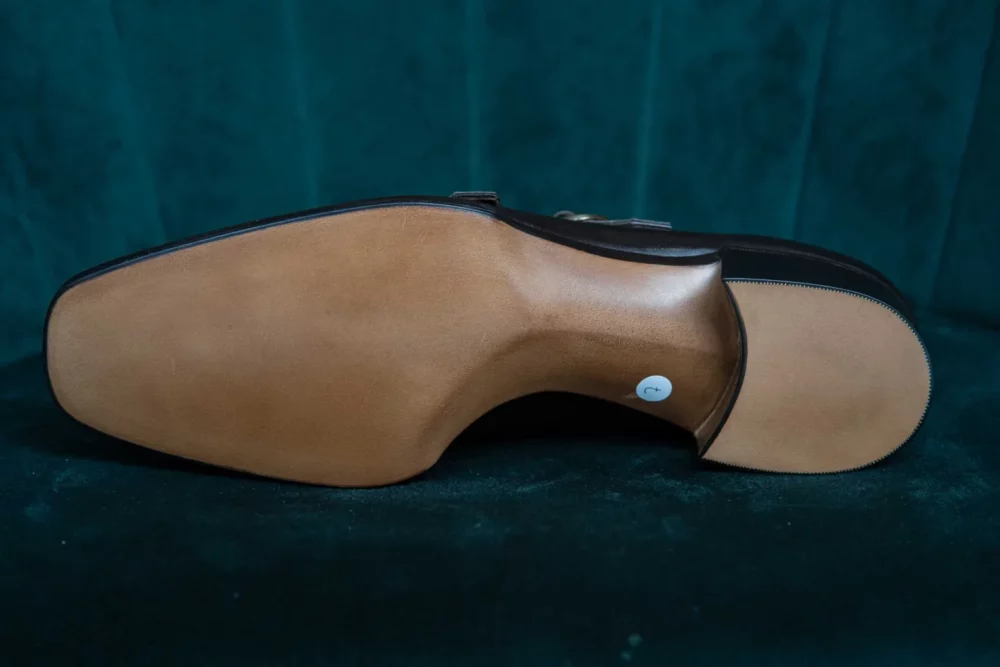
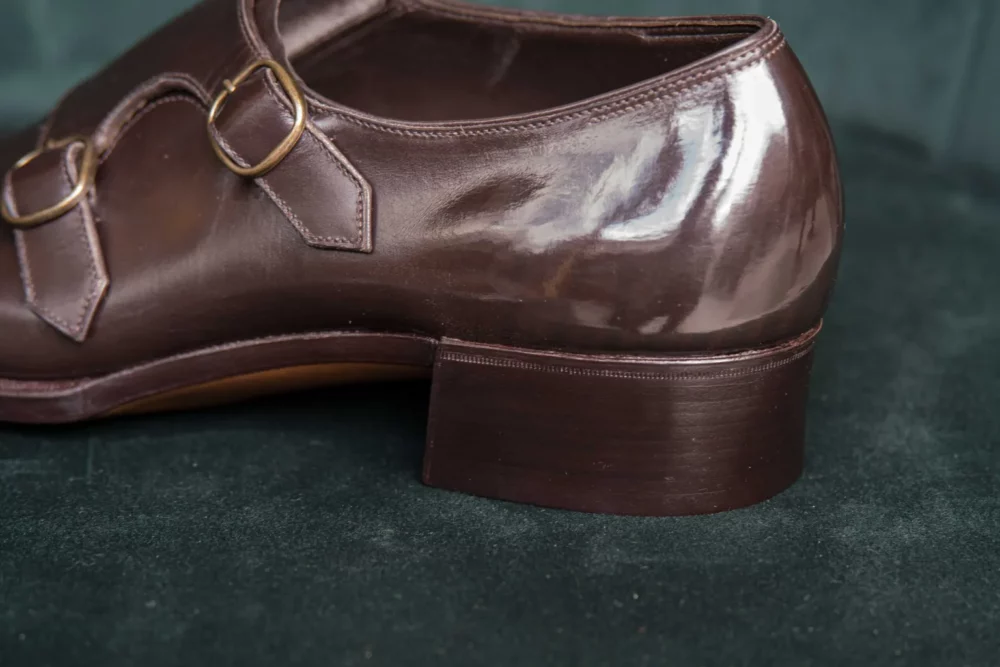
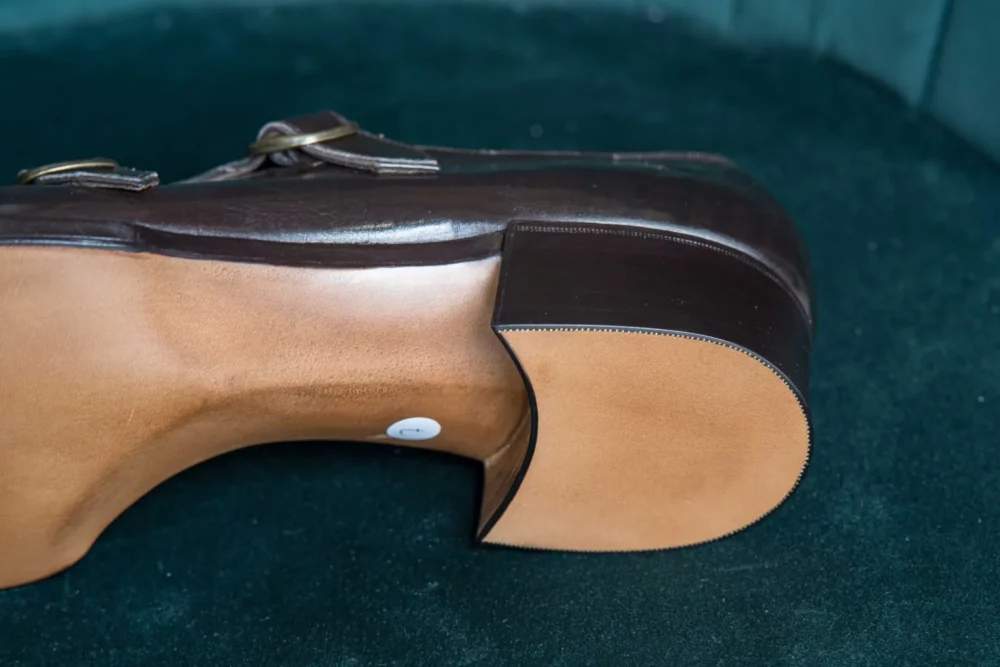
Reo Okuda is based in Tokyo and has worked for several years for a prosthetist and orthotist shoemaker. He has also trained in bottom making and other things in shoemaking classes. He made all himself.
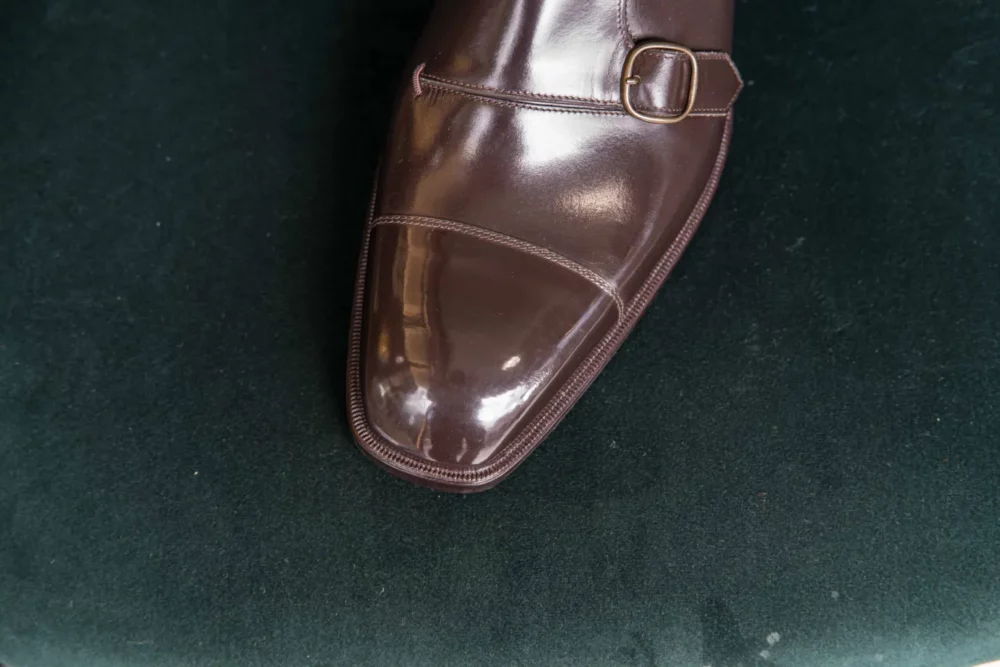
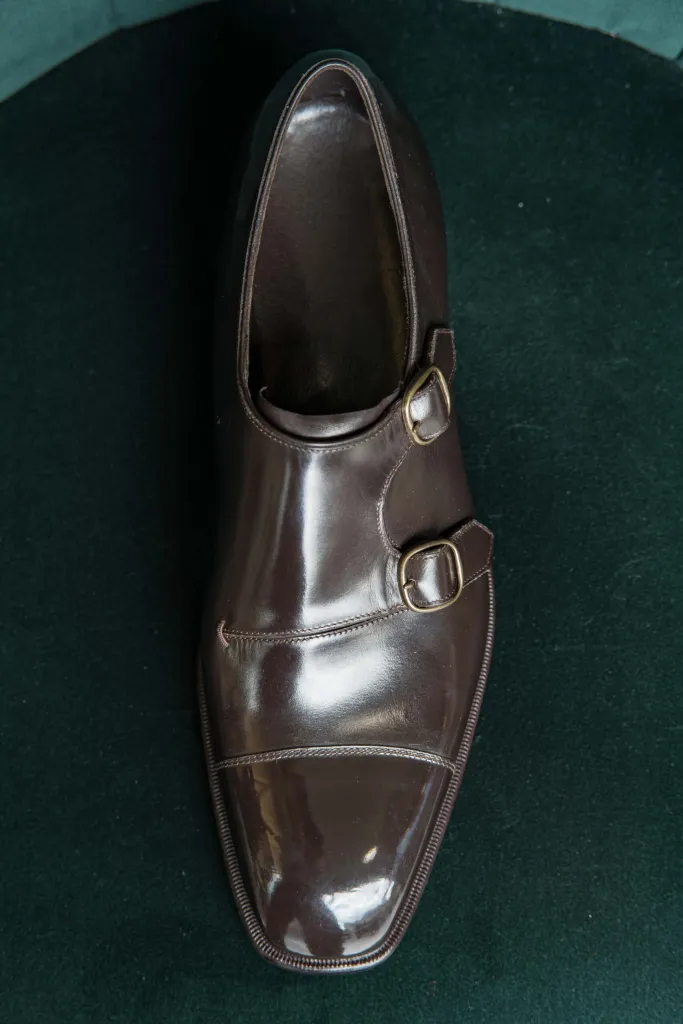
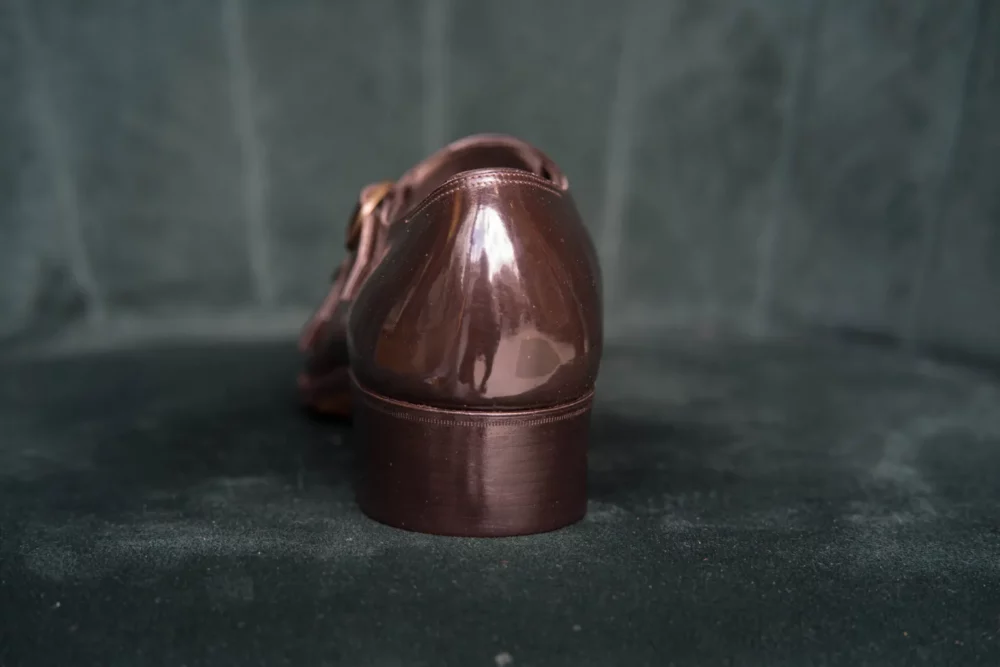
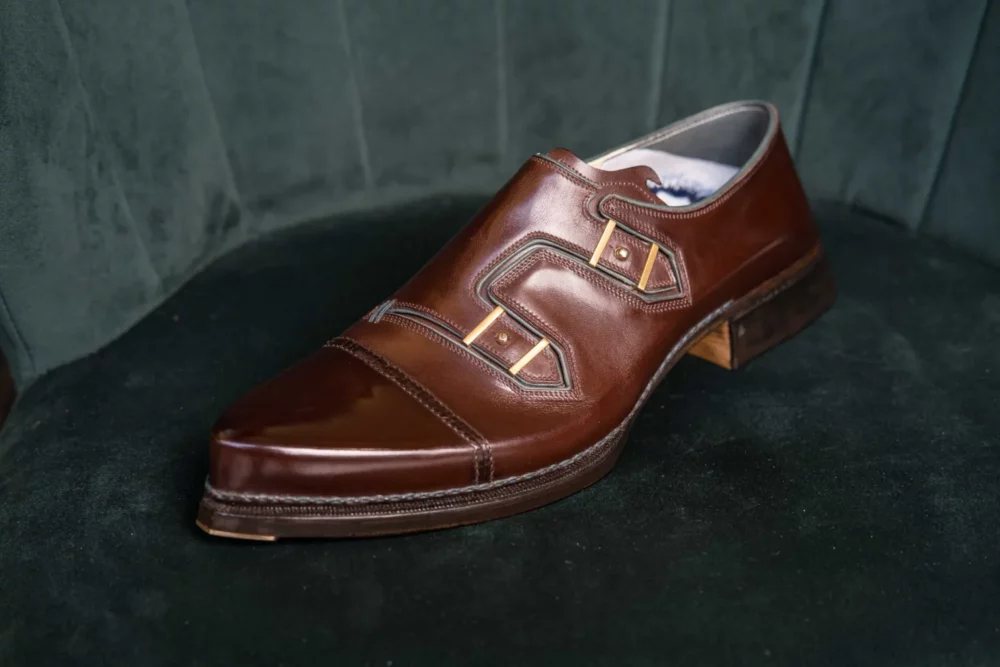
7th Place: Stato Martinelli
Stato Martinelli is based in Desenzano del Garda, by Lake Garda in Italy. It’s a relatively young company, founded by Paulo Martinelli in 2016, making MTM and bespoke shoes. The shoe was made in full by Paulo Martinelli.

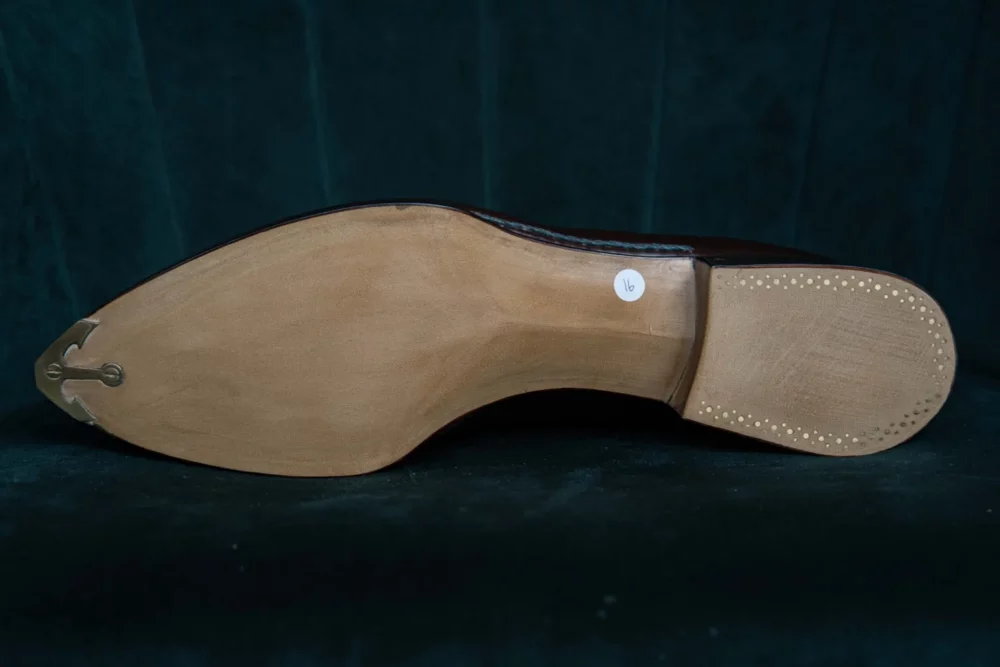
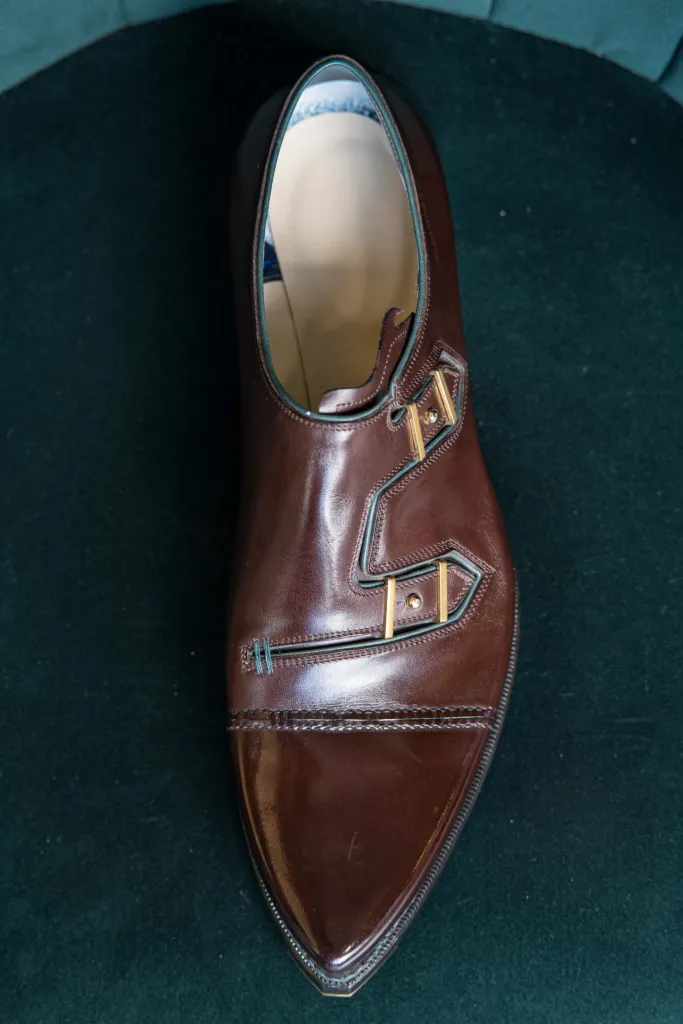
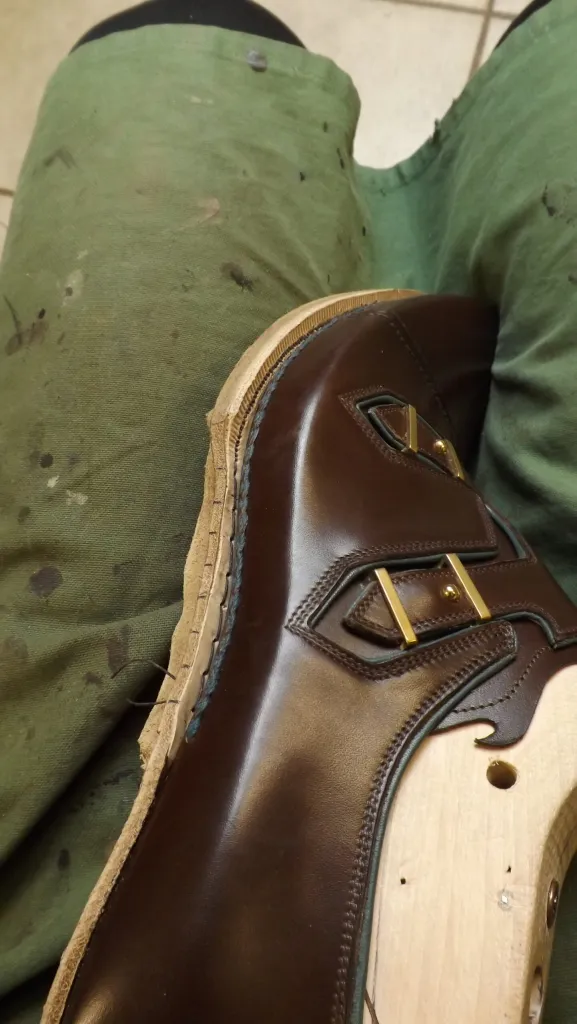
As is evident, the design is inspired by a boat, and it’s a really unique piece with lots of great things going on, Norwegian stitched, seamless piece upper, lovely details. A lot of specially designed parts to appreciate. Scored levelled in all categories.
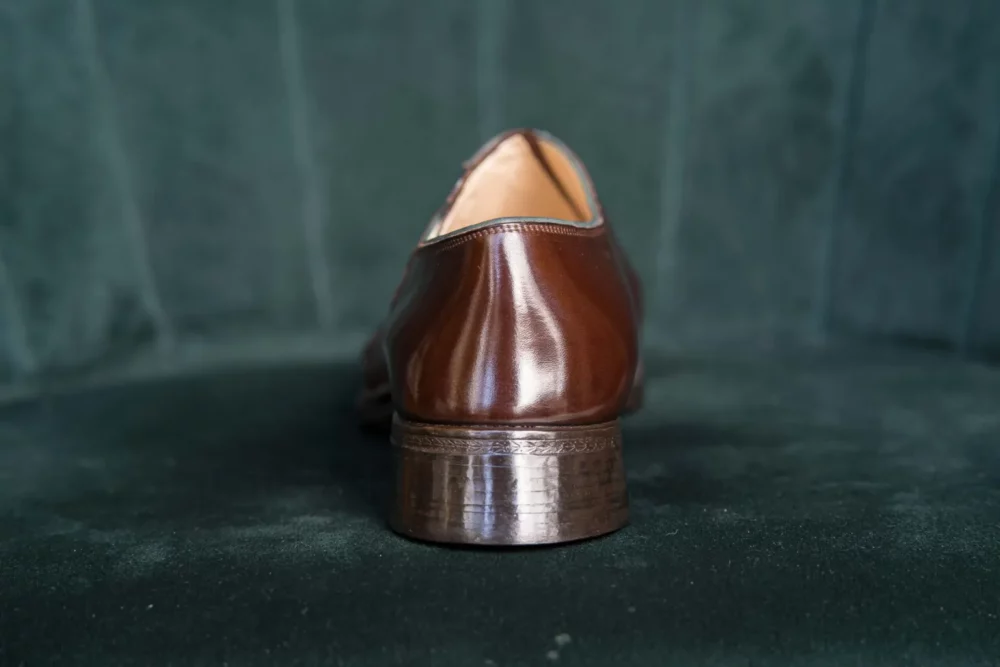
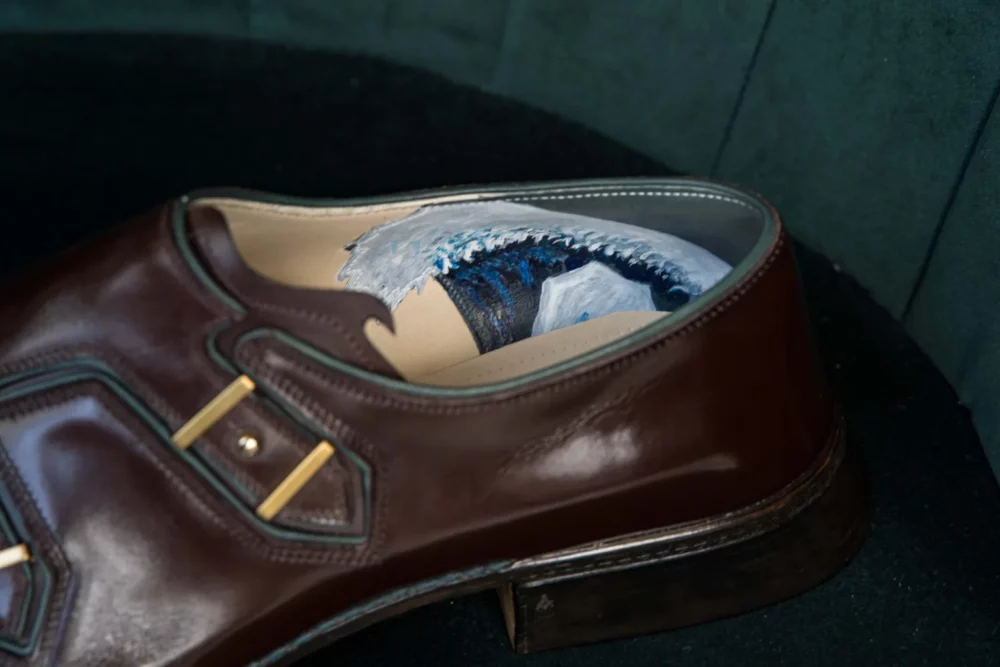
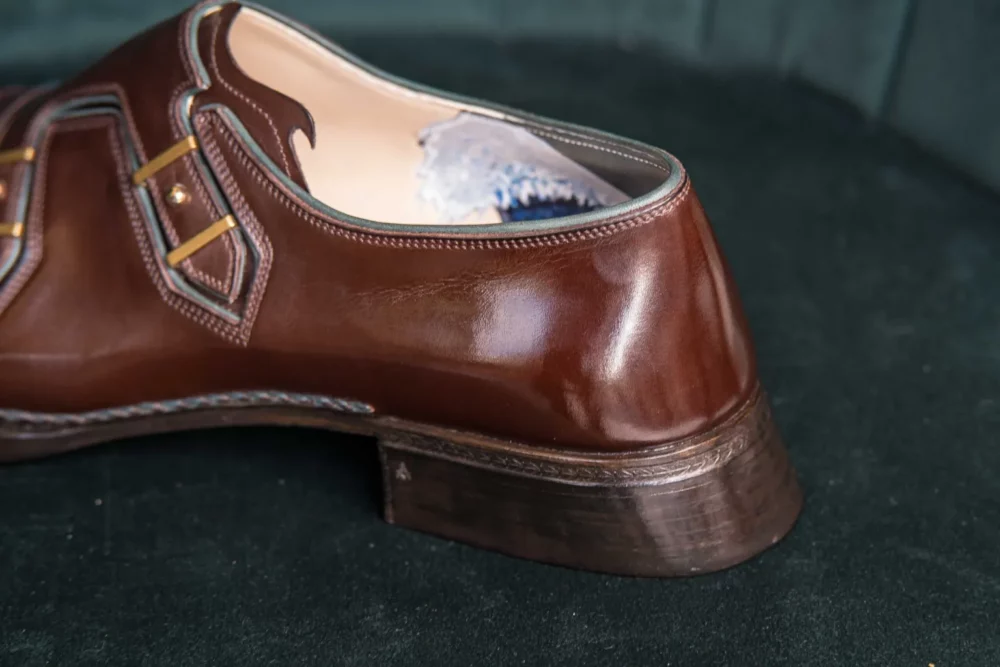
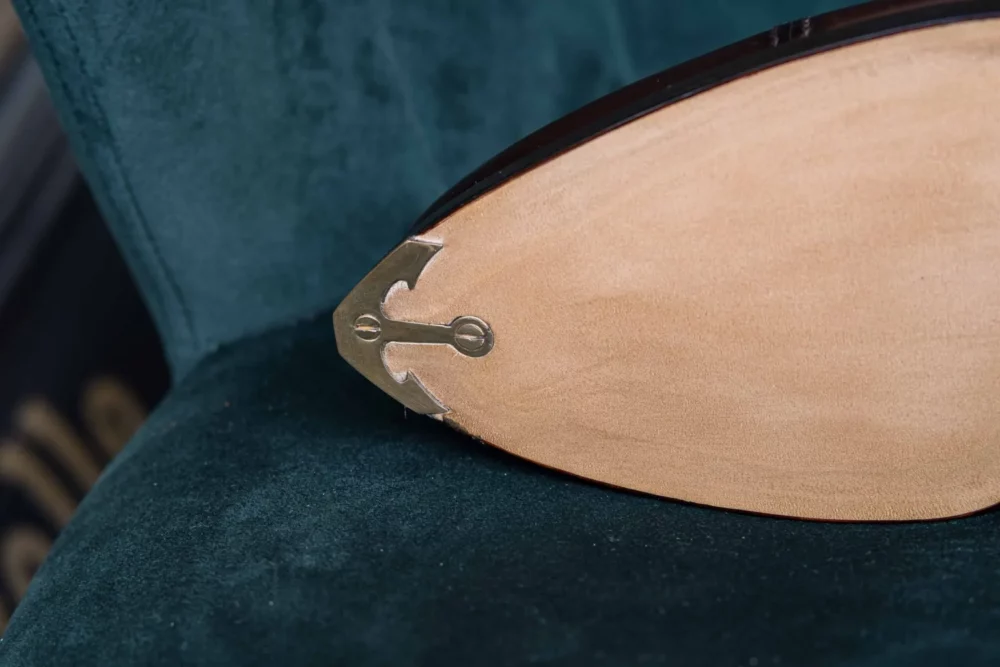


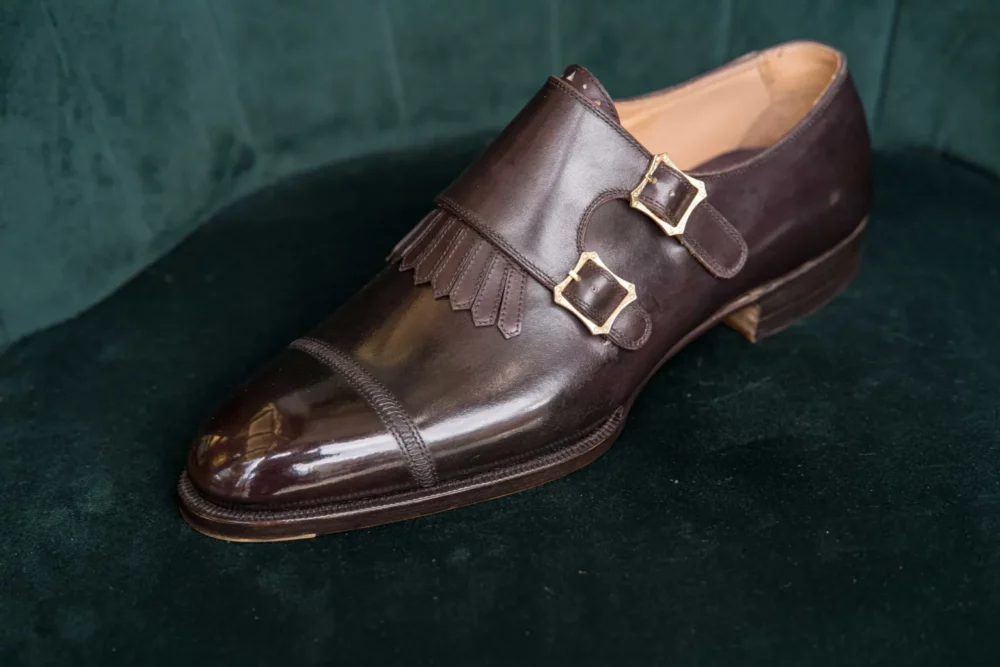
8th Place: Acca
A shoe inspired by Gothic buildings and design. It had a seamless main piece of the upper, handmade buckles, and an intricate heel build. There were great design parts like the fringes and the special cap toe seam. It scored really high on design, particularly, and of course, was good in other categories as well.
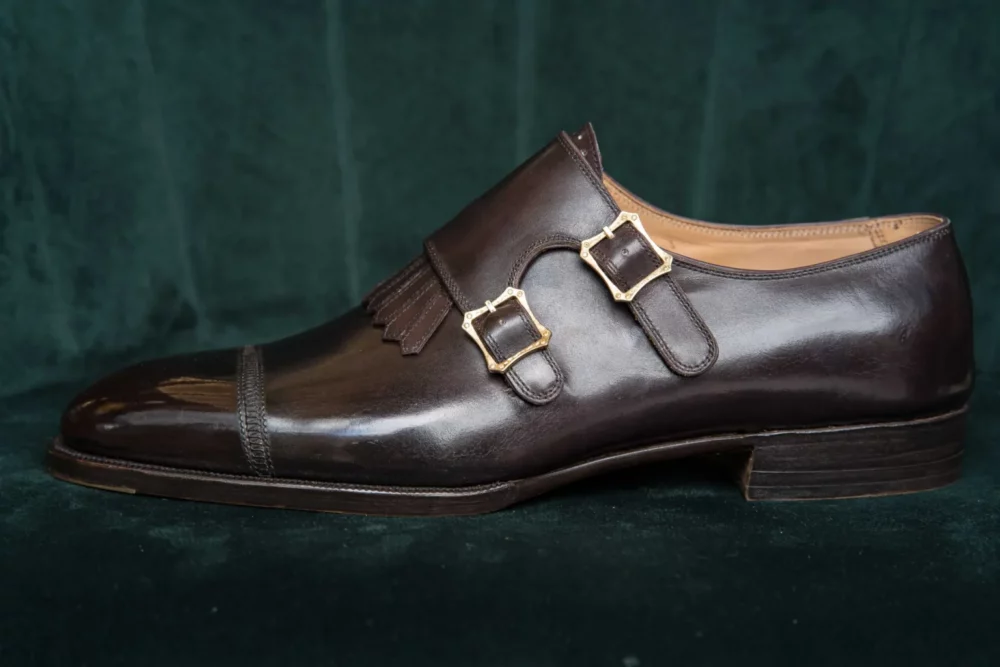
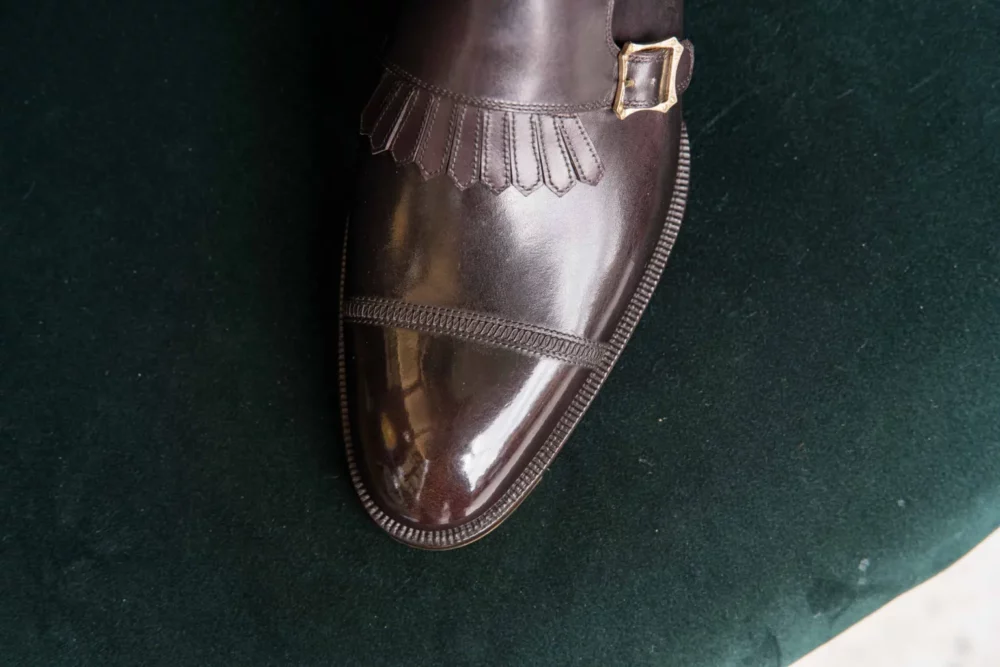
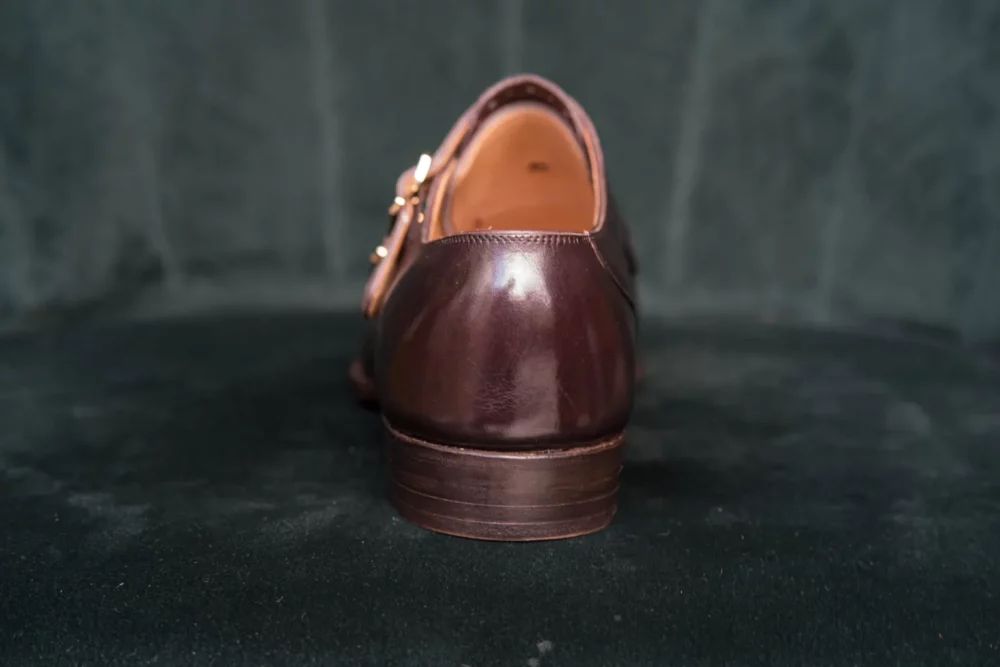
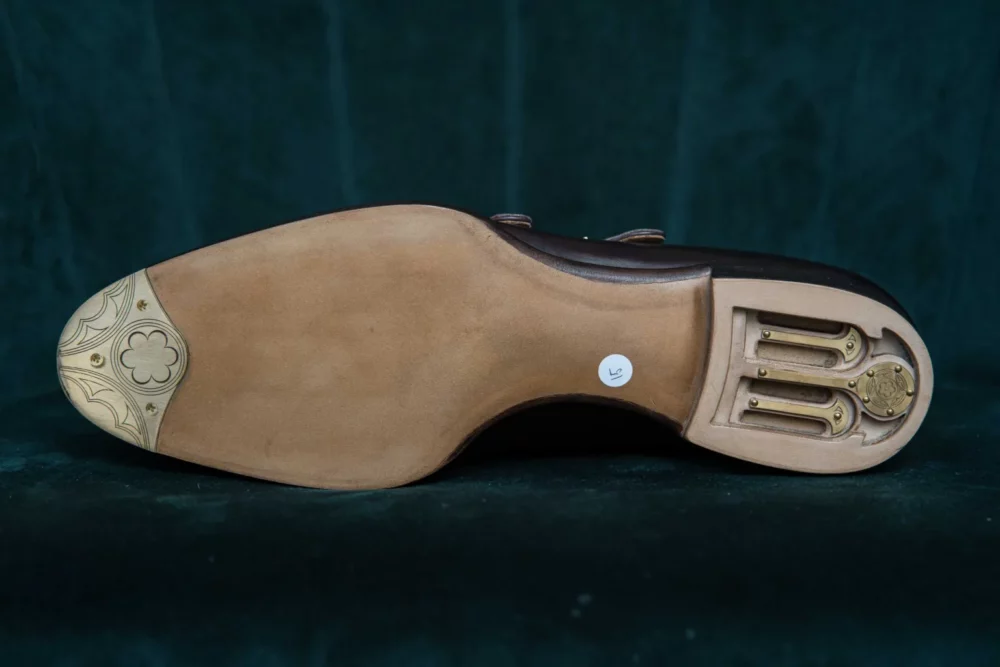
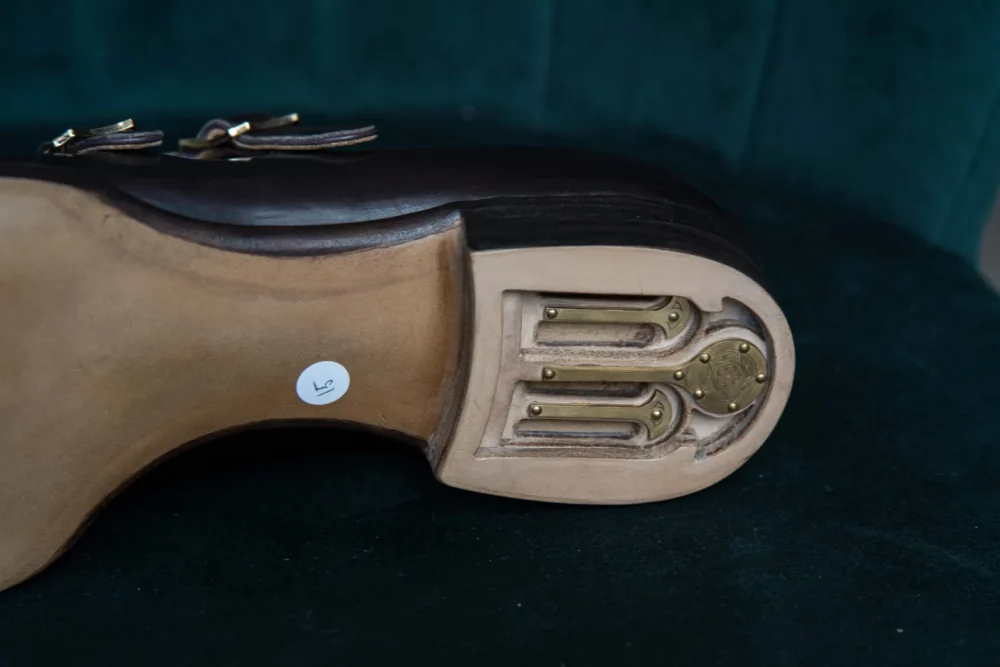
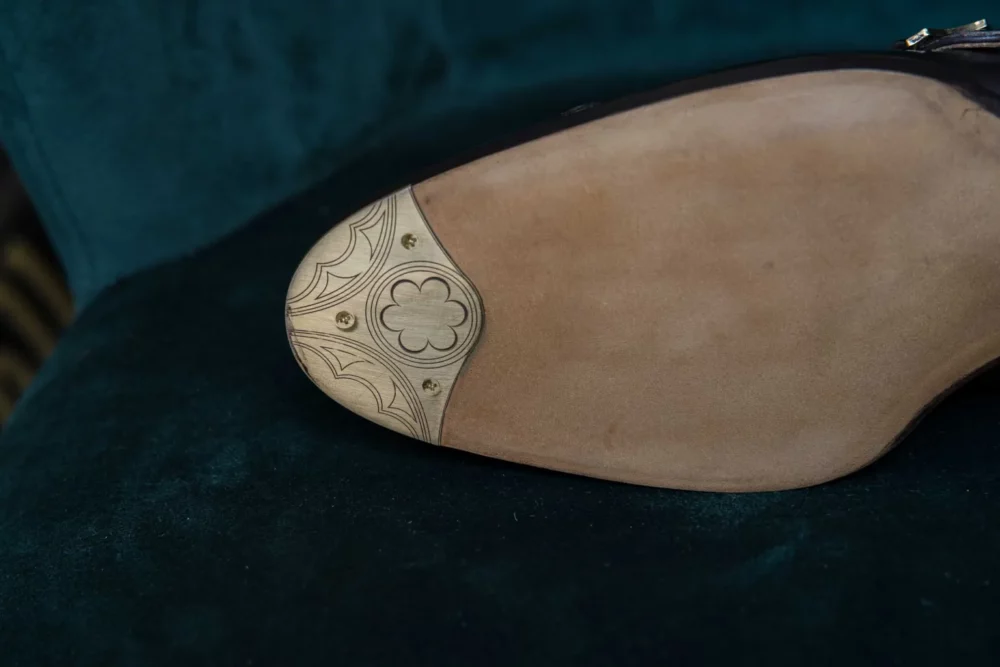
Everything is made by Celia Huang, who runs her own brand Acca, apart from the buckles that are made by Howe Jewelry Design Studio. Celia studied art in Italy, and has made shoes for two years, and has already reached an impressive level in her work and craftsmanship.
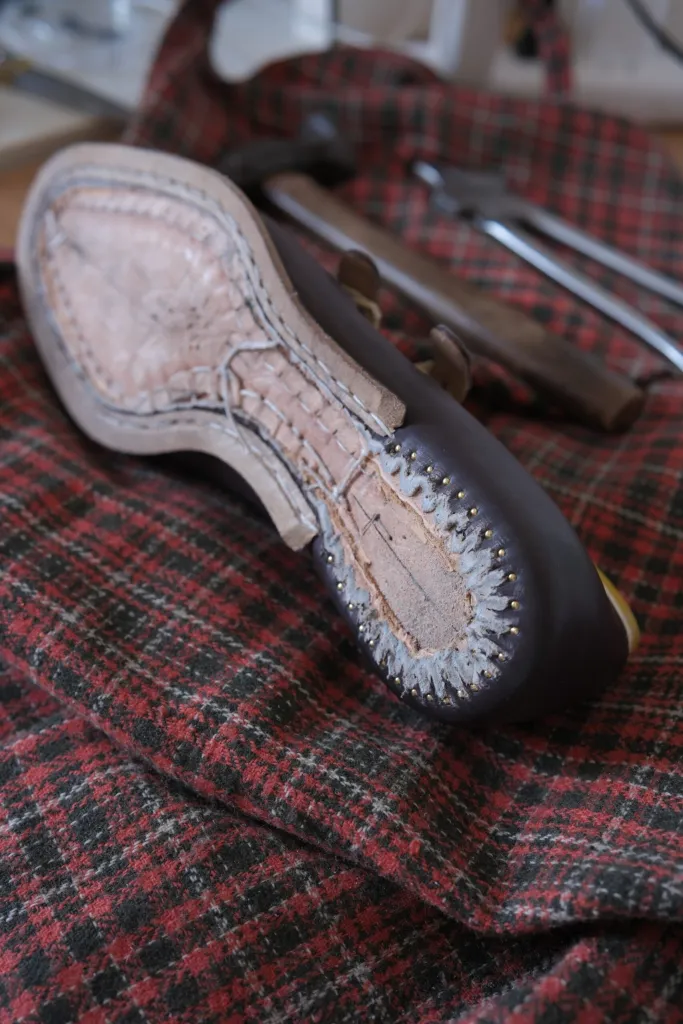
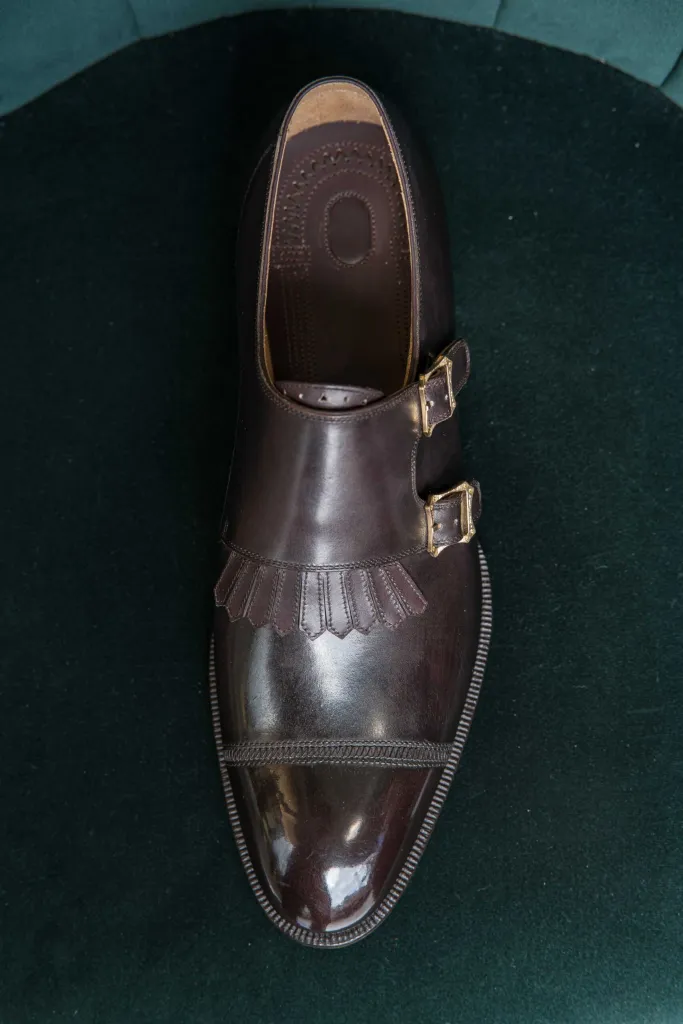
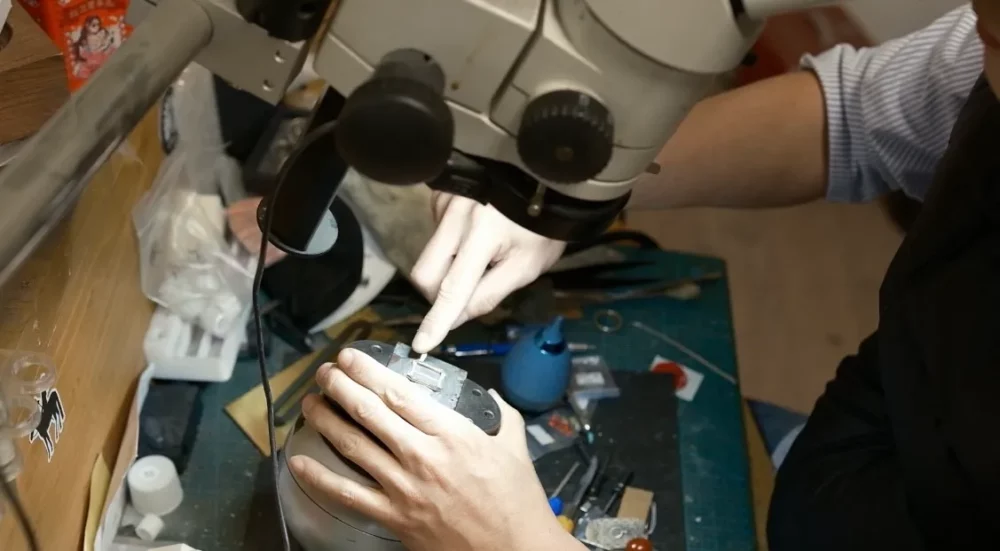
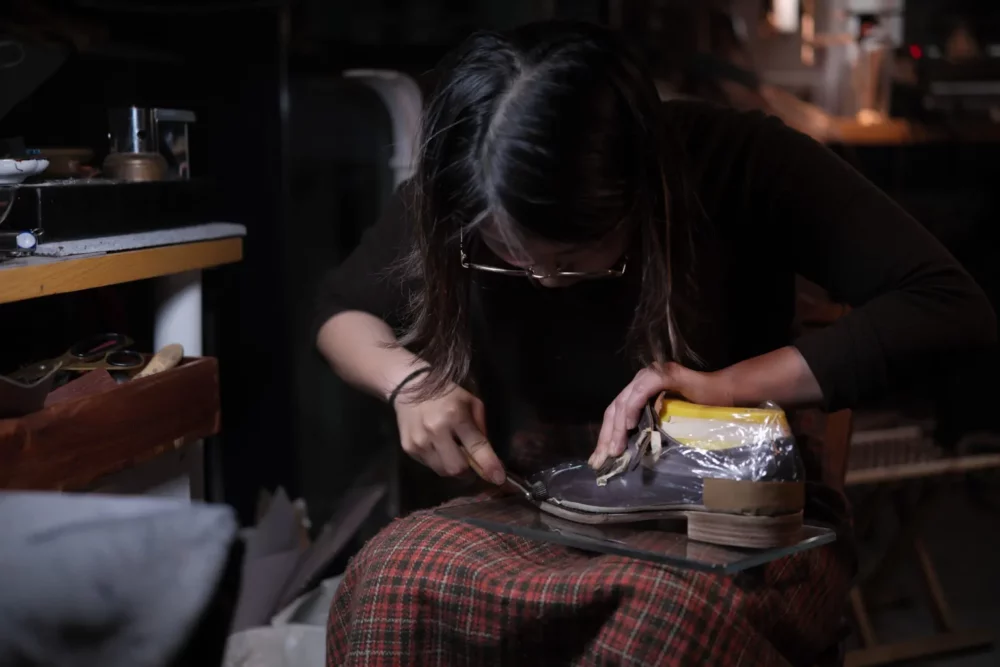
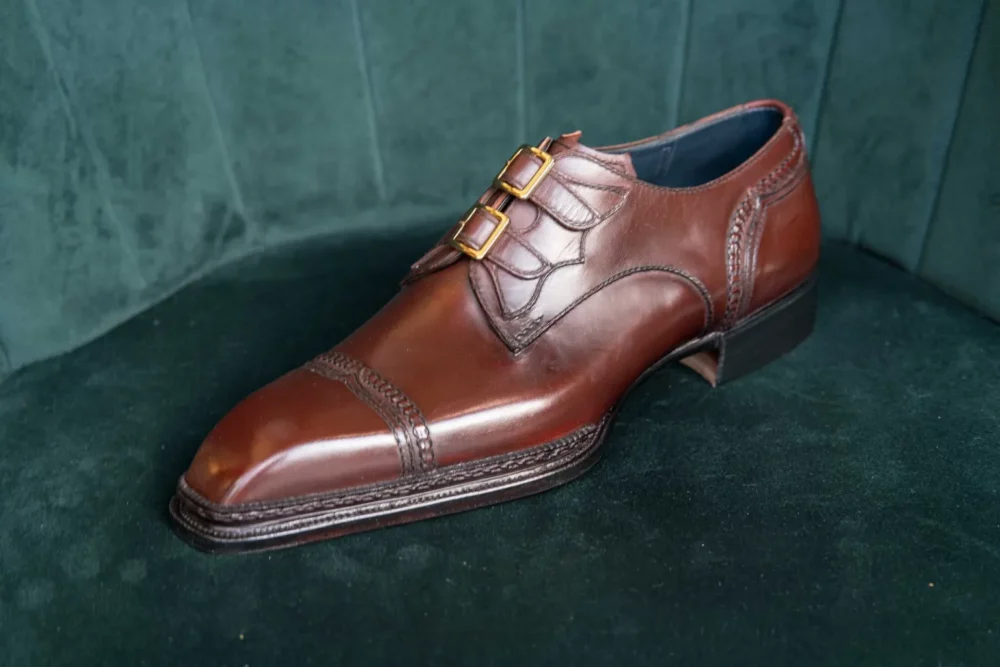
9th Place: Kim Junghwan
Kim Junghwan has worked in shoemaking for 13 years and runs a shoe factory that produces the brand Kyle Shoemaker, as well as private label for other brands. Still do shoes fully by hand as well, though, and as evidently do that well.
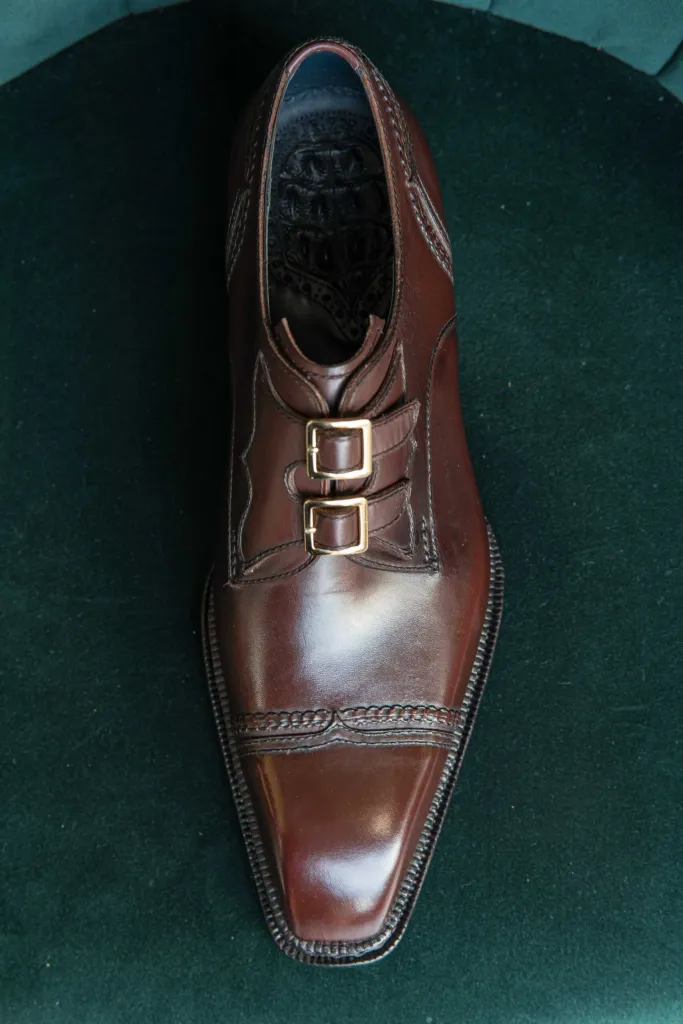
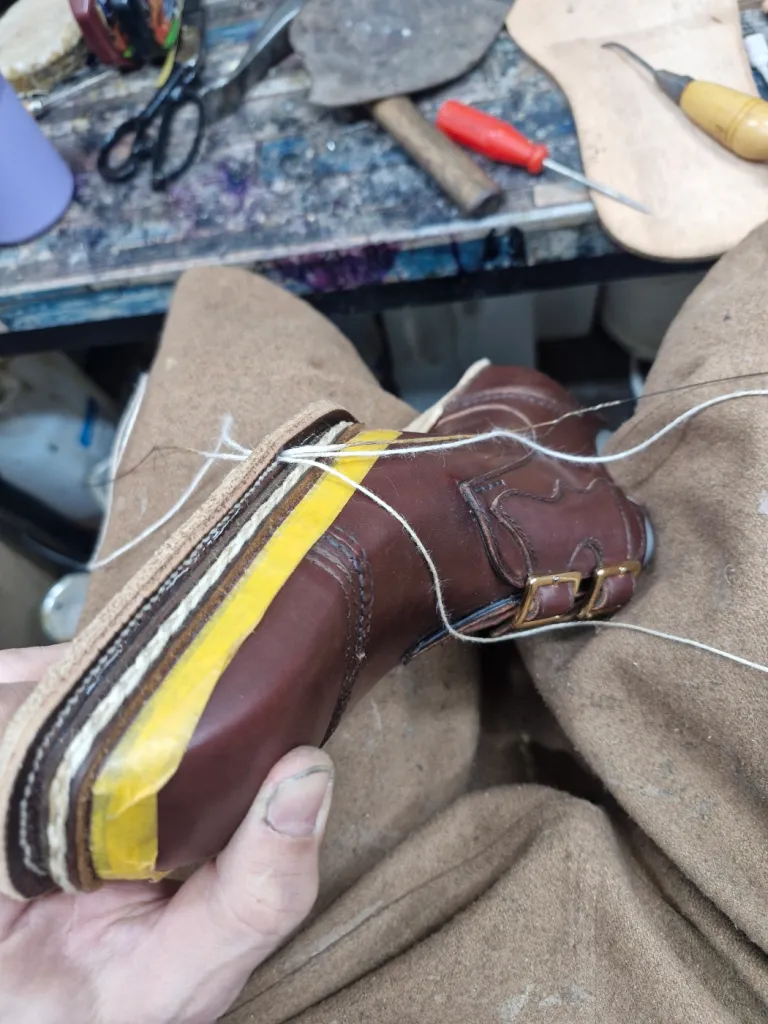
He made the whole shoe himself, and despite receiving a 5% deduction for the use of more leather pieces than the criteria stated, 2-4, he ended up top ten with this specially designed monk strap shoe with advanced sole stitching and a lot of fine handmade upper work.

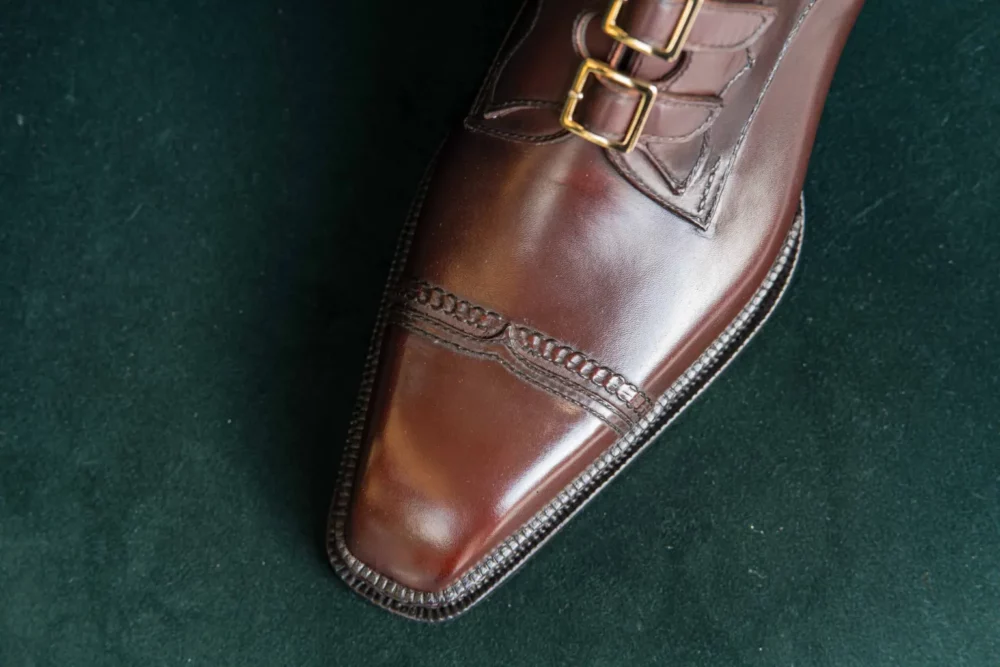
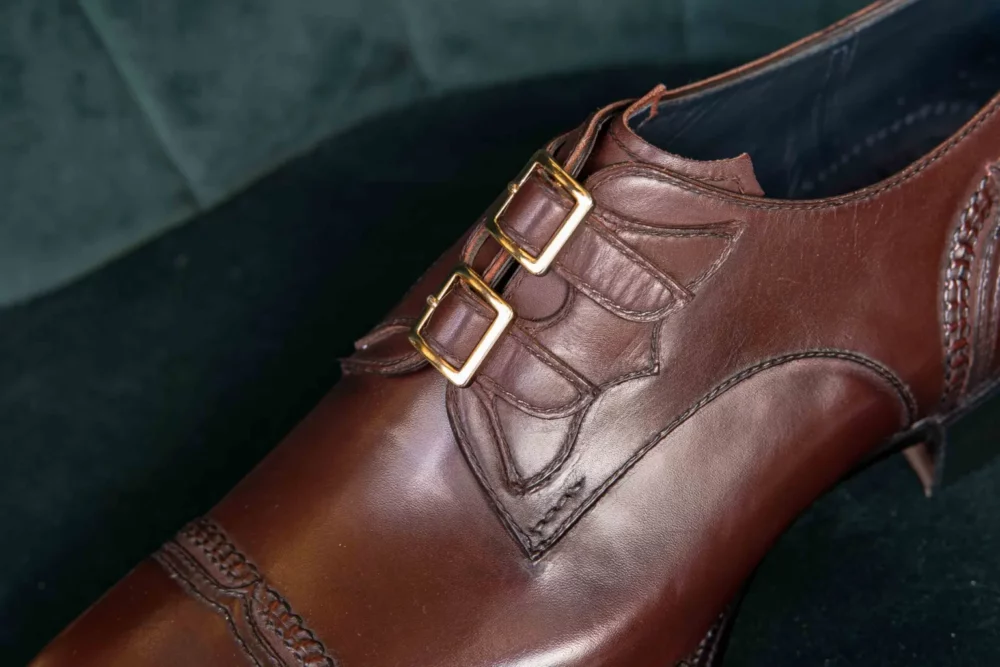

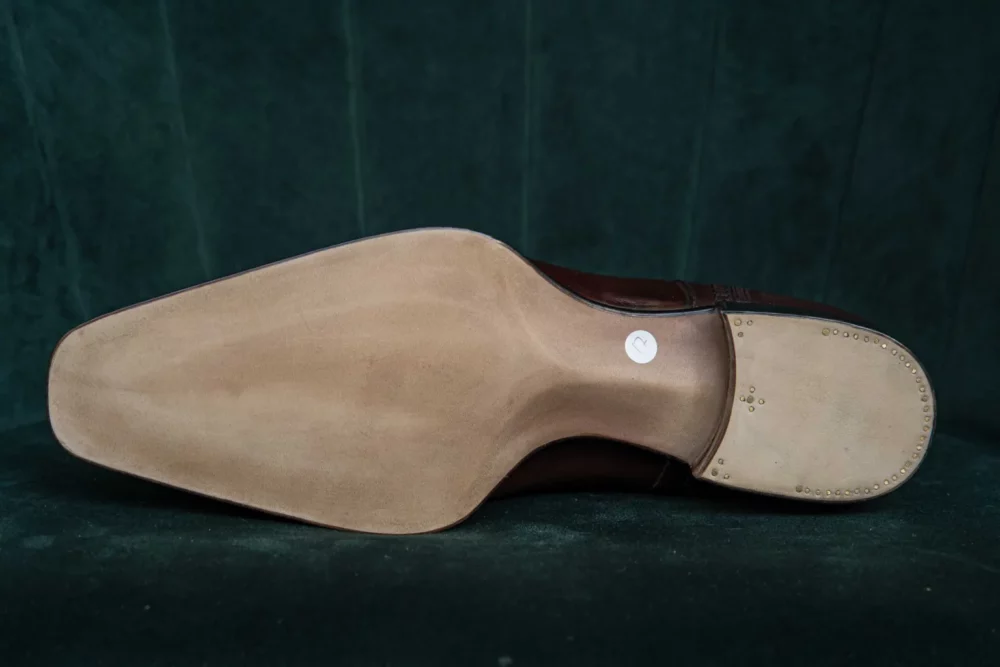
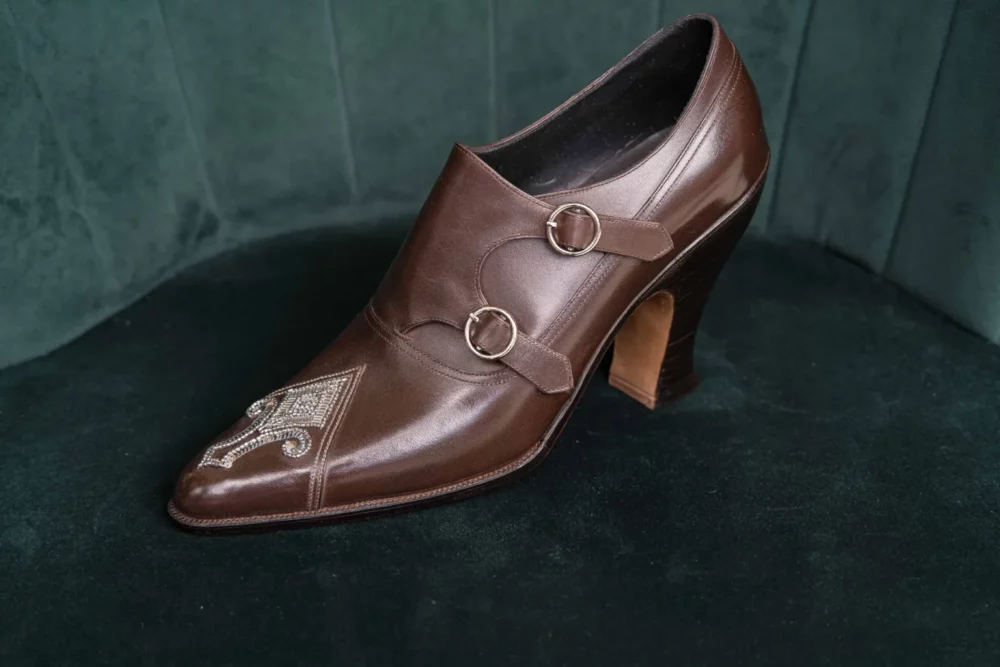
10th Place: Kodai Kawasaki
Based in Tokyo, Kodai Kawasaki has learned the basics at various shoemaking classes in the city, and then spent time in Vienna to develop his shoemaking skills. He runs the brand Shoe Place by, with relatively playful designs.
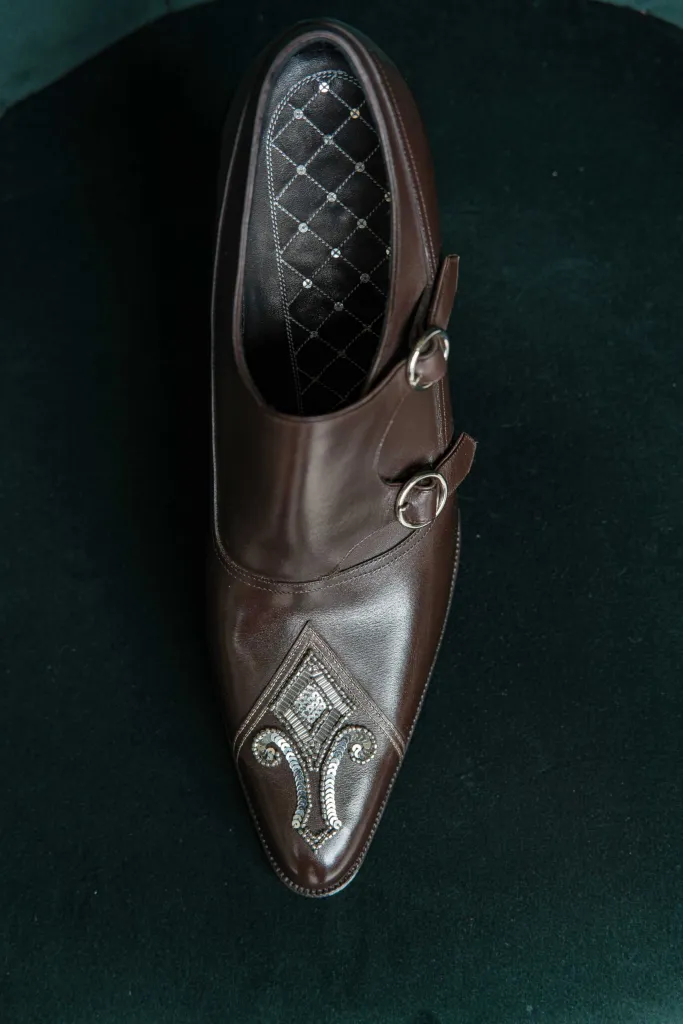
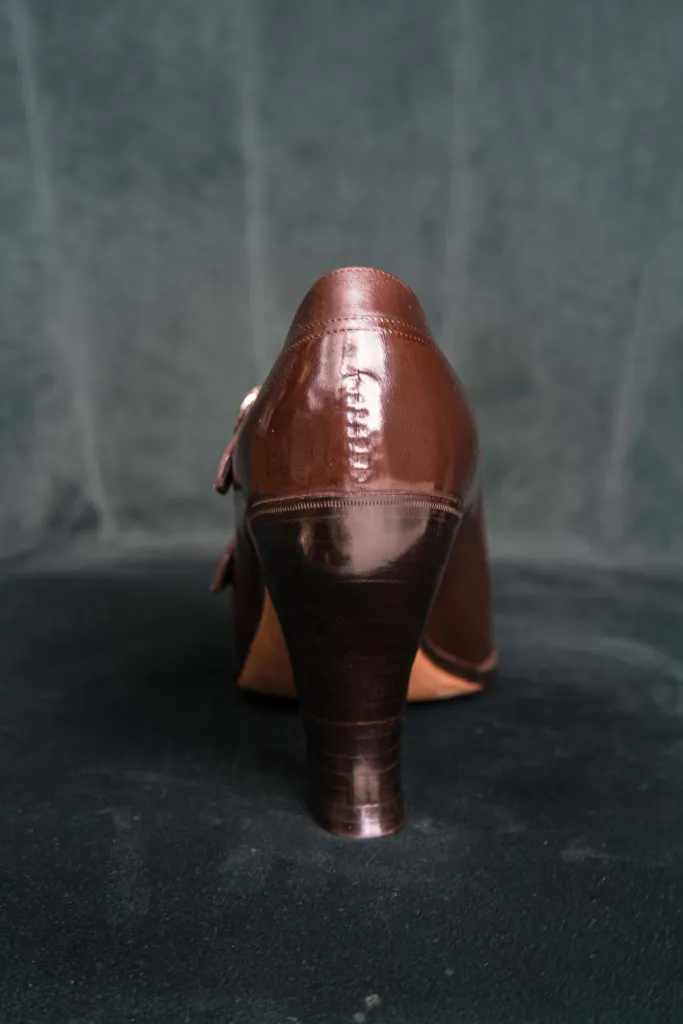
His shoe is one of few high-heeled ones with a beautifully consistent shape of the heel and the back, fine handmade beading medallion, and an overall a well-executed shoe. Always beautiful to see the sole continue over to become the breast of a high-heel.
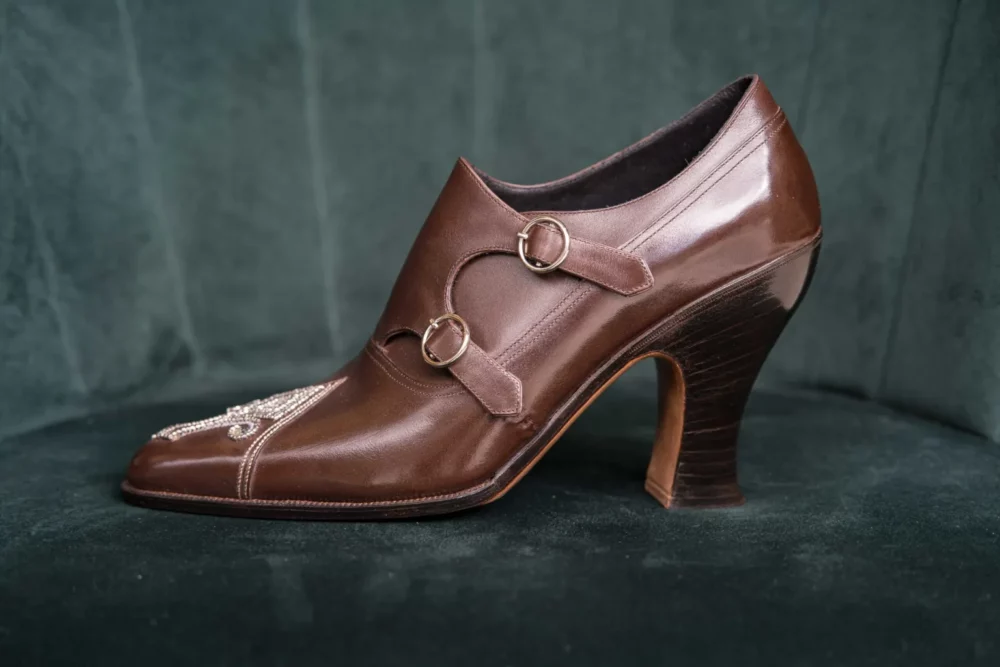
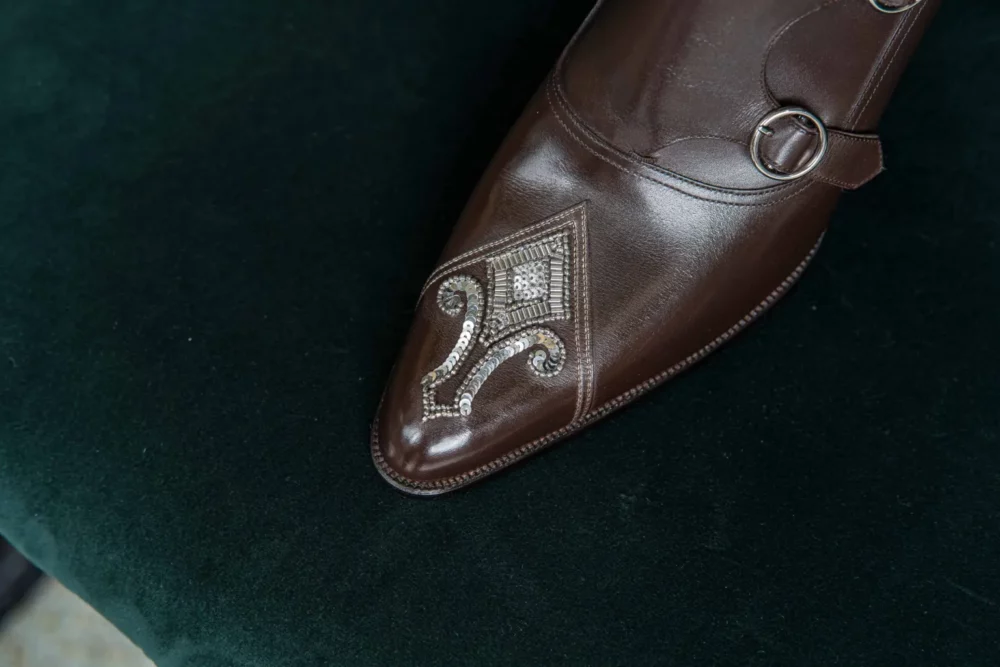
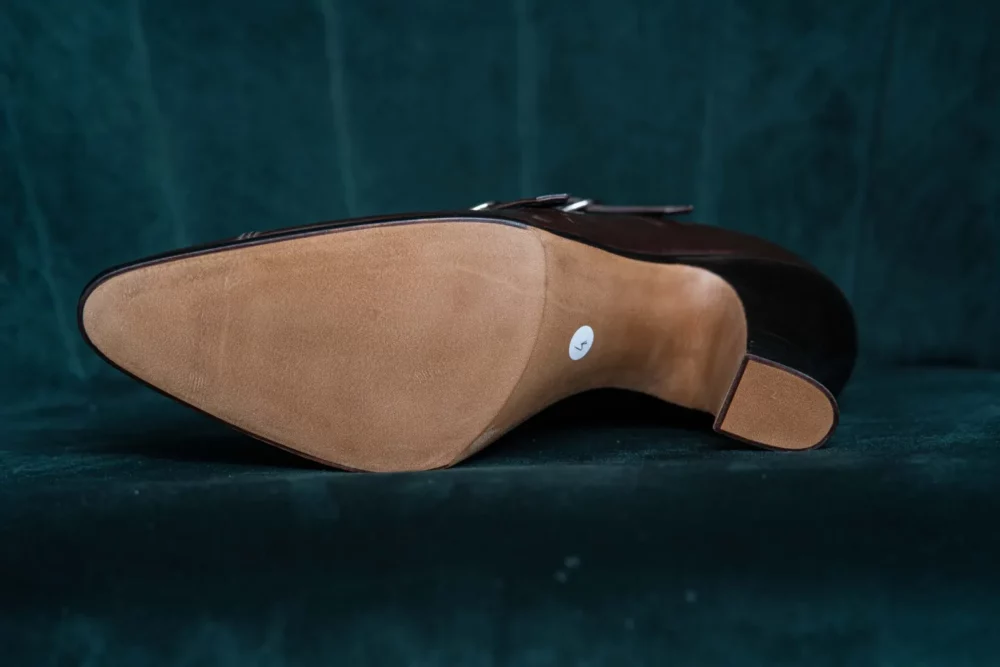
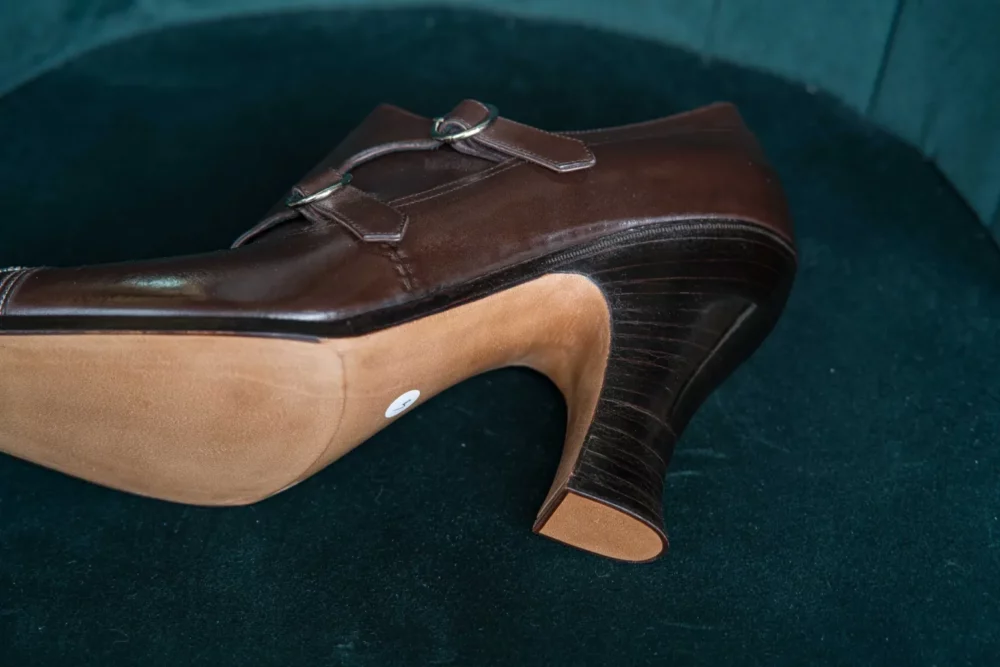


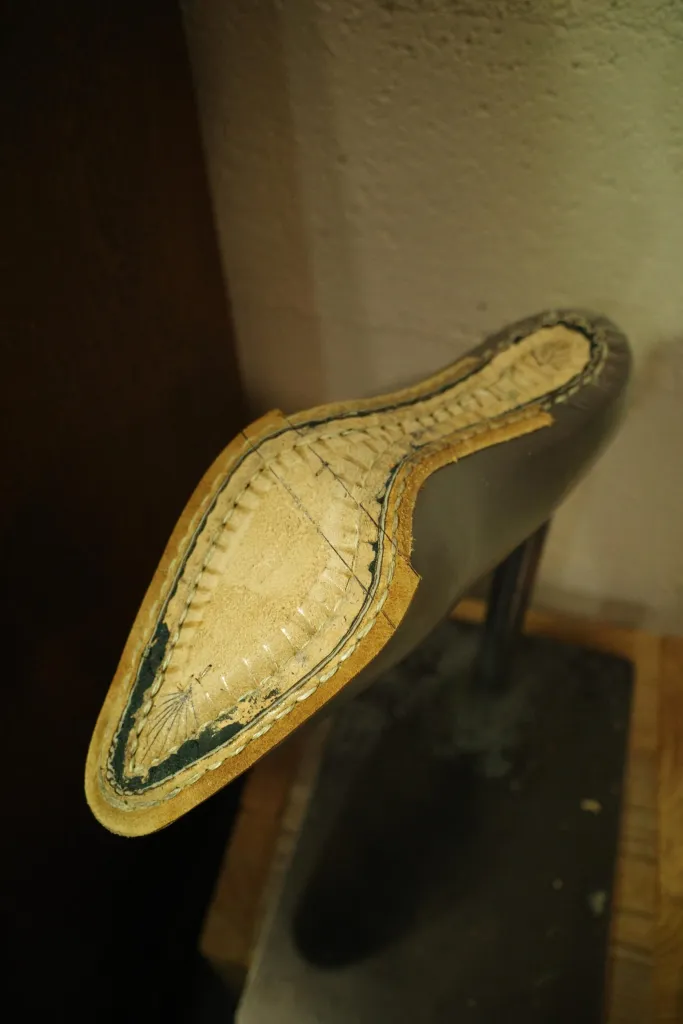
Here are the top ten of the World Championships of Shoemaking 2025. Stay tuned for 11-25 in the coming days!
—Justin FitzPatrick, The Shoe Snob
